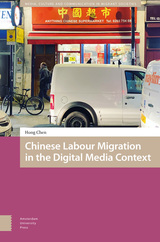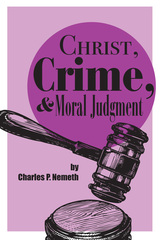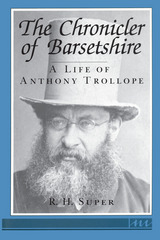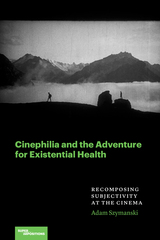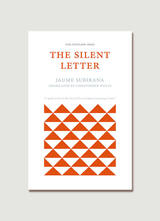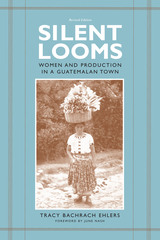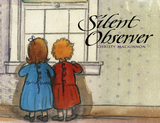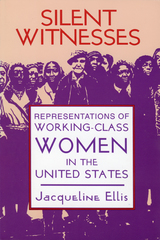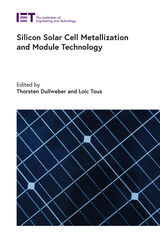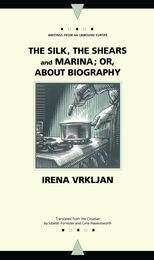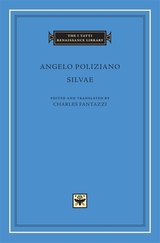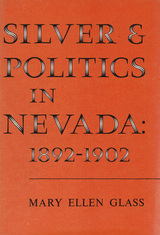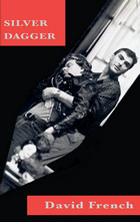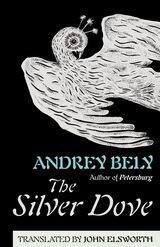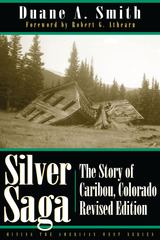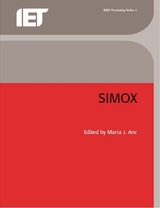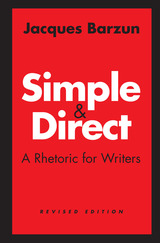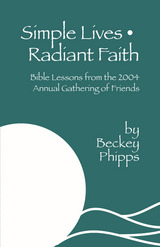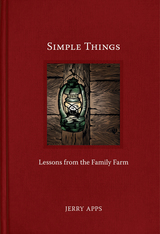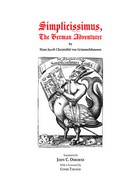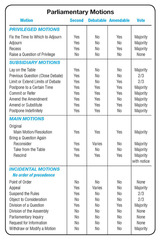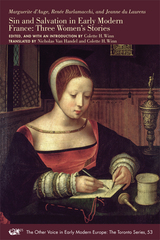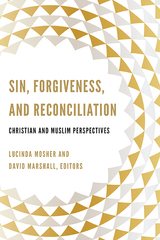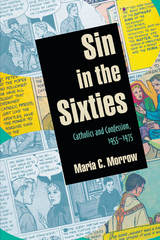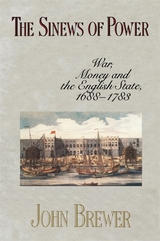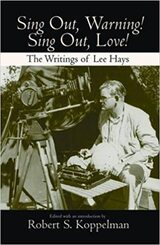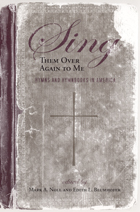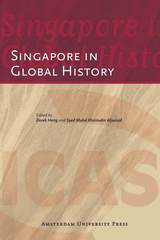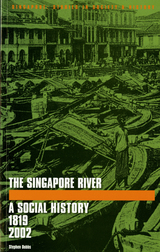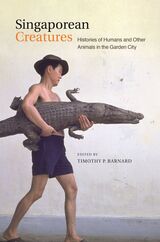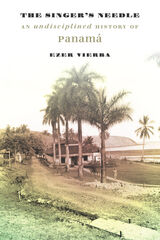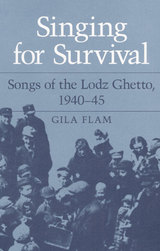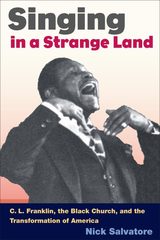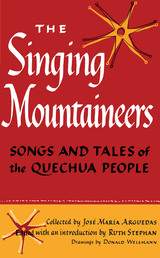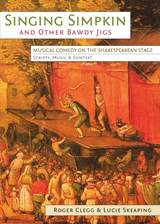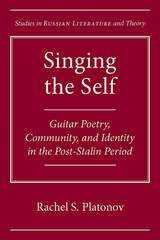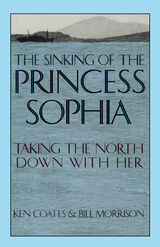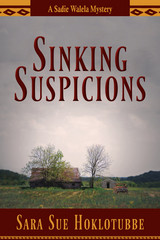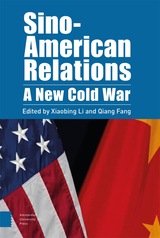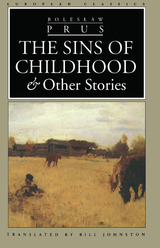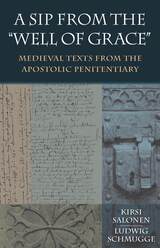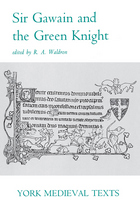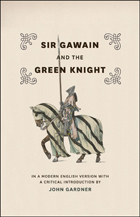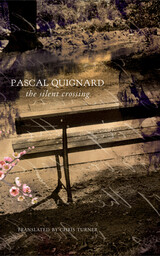 The Silent Crossing
Pascal Quignard
Seagull Books, 2013 A haunting homage to life and liberty, to society and solitude, and to the binding and unbinding that constitute the weft of our lives. Drawing on materials from across many cultures, Pascal Quignard makes an effort to establish shared human values as the breeding ground for a modern Enlightenment. Considering atheism as a spiritual liberation, suicide as a free act, and the rejection of society as a free choice, the author explores philosophical themes that have run through human civilizations—most often as heresies—from our earliest days. In his search for freedom, Quignard questions the binding dependency of religion, querying how, in a world where all forms of society presuppose that someone (or some collective) is looking over our shoulders, we can be free. These reflections, he implies, are the essential spiritual exercise for our times. Few voices in contemporary French literature are more distinct than that of Quignard. By reading this fragmentary, episodic assemblage of intimate experiences and borrowed tales, we open up a space of liberty, creating for the reader space for meditation and, perhaps, liberation.
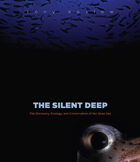 The Silent Deep: The Discovery, Ecology, and Conservation of the Deep Sea
Tony Koslow
University of Chicago Press, 2007 The Silent Deep tells the story of the exploration and discovery of the deep sea, the ecology of its diverse environments, and the impact of humans, highlighting the importance of global stewardship in keeping this delicate ecosystem alive and well. Written by world renowned deep-sea ecologist Tony Koslow, this book is a comprehensive and authoritative overview of the state of the deep sea today, accessible to anyone interested in ocean science, the story of scientific discovery, and conservation of the earth’s most threatened ecosystems. “Koslow deals a decisive blow to the notion that the deep sea can ever be immune from unregulated human activities. . . . The historical review of deep-sea biology is the most comprehensive I have ever read.”—Adrian Glover, Times Literary Supplement “Deeply informed by history and rendered in straightforward, careful prose.”—Anthony Doerr, Boston Globe “This beautifully produced book tells an urgent story with clarity and grace.”—Choice “Stands apart from other books about life in the abyss due to Tony Koslow’s thoughtful accounts. . . . [He] succeeds in painting a picture of the deep sea as an environment with inherent and threatened value.”—Science “Textbook depth on all aspects of deep-sea science and conservation. . . . [An] exhaustively researched and referenced volume with a historical review stretching back to Socrates.”—Mark Schrope, Nature “An important textbook and viewpoint that is highly recommended for anyone with a professional or personal interest in deep-sea ecosystems.”—Quarterly Review of Biology
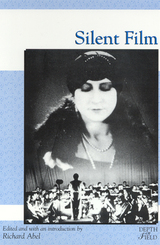 Silent Film
Able, Richard
Rutgers University Press, 1996 Silent Film offers some of the best recent essays on silent cinema, essays that cross disciplinary boundaries and break new ground in a variety of ways. Some focus on the "materiality" of early cinema: the color processes used in printing nitrate film stocks, the choreographic styles of film acting, and the wide range of sound accompaniment. Others focus on questions of periodicity and nationality: on the shift from a "cinema of attractions" to a "classical narrative cinema," on the relationship between changes in production and those in exhibition, and on the historical specificity of national cinemas. Still others focus on early cinema's intertextual relations with various forms of mass culture (from magazine stories or sensational melodramas in the United States to the tango craze in Russia), and on reception in silent cinema (from black audiences in Chicago to women's fan magazines of the 1920s). Taken together, the contributors to this volume suggest provocative parallels between silent cinema at the turn of the last century and "postmodern" cinema at the end of our own. This book is an important contribution to the study of silent film and a key addition to this new series.
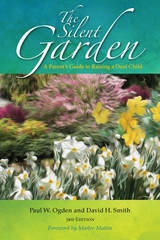 The Silent Garden: A Parent’s Guide to Raising a Deaf Child
Paul W. Ogden
Gallaudet University Press, 2016 For over 30 years, The Silent Garden has offered parents of deaf children the support and unbiased information needed to fully realize their children’s potential. This completely revised third edition is a must-have resource that will help parents navigate the complex and unique challenges they face. Accessible, practical, and, above all, open-minded, The Silent Garden educates parents quickly and thoroughly about the many conflicting points of view on what is best for their deaf children.
Authors Paul W. Ogden and David H. Smith, who are both deaf, present examples and research that guide parents through often unfamiliar territory. From coping mechanisms for parents to advice on creating healthy home environments, the authors cover a range of topics that impact day-to-day actions and decision-making. The topic of communication is discussed extensively as communication access and language development are crucial not only for intellectual growth, but also for positive family and social relationships. The authors look at American Sign Language, listening and spoken language, written English, and various other modes of communication available to deaf children. Different educational options are presented, and technology—including the debate about cochlear implants—is reviewed. Deaf children with special needs are considered here as well. Each topic is accompanied by real-life stories that offer further insight.
Always encouraging, The Silent Garden empowers parents to be the best advocates for their deaf children. Throughout, the authors emphasize that each choice is highly personal, and they stress that all deaf children have the potential to lead rich, productive, and exciting lives.
Also available in Spanish - El Jardín Silencioso: Una guía para los padres para criar a un niño sordo is a condensed Spanish edition that features the first five chapters of The Silent Garden. Topics covered include coping mechanisms for parents, creating healthy family environments, fostering independence, and understanding the perspectives of siblings.
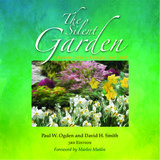 The Silent Garden: A Parent's Guide to Raising a Deaf Child
Paul W. Ogden
Gallaudet University Press, 2017 For over 30 years, The Silent Garden has offered parents of deaf children the support and unbiased information needed to fully realize their children’s potential. This completely revised third edition is a must-have resource that will help parents navigate the complex and unique challenges they face. Accessible, practical, and, above all, open-minded, The Silent Garden educates parents quickly and thoroughly about the many conflicting points of view on what is best for their deaf children.
Authors Paul W. Ogden and David H. Smith, who are both deaf, present examples and research that guide parents through often unfamiliar territory. From coping mechanisms for parents to advice on creating healthy home environments, the authors cover a range of topics that impact day-to-day actions and decision-making. The topic of communication is discussed extensively as communication access and language development are crucial not only for intellectual growth, but also for positive family and social relationships. The authors look at American Sign Language, listening and spoken language, written English, and various other modes of communication available to deaf children. Different educational options are presented, and technology—including the debate about cochlear implants—is reviewed. Deaf children with special needs are considered here as well. Each topic is accompanied by real-life stories that offer further insight.
Always encouraging, The Silent Garden empowers parents to be the best advocates for their deaf children. Throughout, the authors emphasize that each choice is highly personal, and they stress that all deaf children have the potential to lead rich, productive, and exciting lives.
Also available in Spanish - El Jardín Silencioso: Una guía para los padres para criar a un niño sordo is a condensed Spanish edition that features the first five chapters of The Silent Garden. Topics covered include coping mechanisms for parents, creating healthy family environments, fostering independence, and understanding the perspectives of siblings.
 The Silent Garden: Raising Your Deaf Child
Paul W. Ogden
Gallaudet University Press, 1996 "An informative, supportive work that should be a high priority purchase."
--Library Journal
"Valuable assistance in establishing a means of communication, this sensitive guide is firm support in helping parents make their difficult choices."
--Kirkus Reviews
Now, this completely rewritten edition presents parents of deaf children with more crucial information enhanced by the advances made in the general understanding of what it means to be deaf and the greater possibilities afforded deaf children today. Author Paul Ogden provides parents with a firm foundation for making the difficult decisions necessary to begin their child on the road to realizing his or her full potential.
The Silent Garden orients parents to their child's lack of hearing, what usually is an earthshaking discovery to them. The broad range of types of hearing loss is explained, from minor loss to profound deafness, descriptions that clearly illustrate why being "deaf" does not indicate one specific set of characteristics. This encouraging book also informs parents that their sense of shock is a normal reaction, and that they need to address critical concerns right away, such as how to communicate with their child, including choosing the best mode. Parents also will have to consider what type of school their child should attend and what kinds of professional help will be best for the entire family.
The Silent Garden describes all forms of communication, detailing the choices in sign communication from American Sign Language to the various manual systems based upon English. Technological alternatives are presented, including when and when not to consider cochlear implants. Case studies and interviews with parents of deaf children help to reassure parents that they can prepare their deaf child for a full, productive life.
Paul W. Ogden is Professor in the Department of Communicative Sciences and Disorders at California State University in Fresno, California.
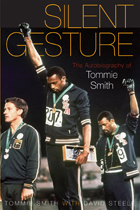 Silent Gesture: The Autobiography of Tommie Smith
Tommie Smith with David Steele
Temple University Press, 2008 n 1968, Tommie Smith and his teammate John Carlos won the gold and silver medals, respectively, for the 200 meter dash. Receiving their medals on the dais, they raised their fists and froze a moment in time that will forever be remembered as a powerful day of protest. In this, his autobiography, Smith tells the story of that moment, and of his life before and after it, to explain what that moment meant to him. In Silent Gesture, Smith recounts his life before and after the 1968 Olympics: his life-long commitment to athletics, education, and human rights. He dispels some of the myths surrounding his and Carlos' act on the dais -- contrary to legend, Smith wasn't a member of the Black Panthers, but a member of the US Olympic Project for Human Rights -- and describes in detail the planning and risks involved in his protest. Smith also details his many years after Mexico City of devotion to human rights, athletics, and education. A unique resource for anyone concerned with international sports, history, and the African American experience, Silent Gesture contributes a complete picture of one of the most famous moments in sports history, and of a man whose actions always matched his words.
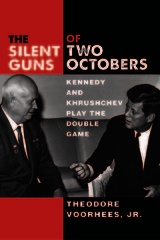 The Silent Guns of Two Octobers: Kennedy and Khrushchev Play the Double Game
Theodore Voorhees, Jr.
University of Michigan Press, 2020 The Silent Guns of Two Octobers uses new as well as previously under-appreciated documentary evidence to link the Cuban Missile Crisis to the Checkpoint Charlie tank standoff to achieve the impossible—craft a new, thoughtful, original analysis of a political showdown everyone thought they knew everything about. Ultimately the book concludes that much of the Cold War rhetoric the leaders employed was mere posturing; in reality neither had any intention of starting a nuclear war. Theodore Voorhees reexamines Khrushchev’s and Kennedy’s leadership, decision, and rhetoric in light of the new documentary evidence available. Voorhees examines the impact of John F. Kennedy's domestic political concerns about his upcoming first midterm elections on his handling of the Cuban Missile Crisis through his use of back-channel dealings with Khrushchev during the lead-up to the crisis and in the closing days when the two leaders managed to reach a settlement.
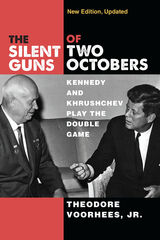 The Silent Guns of Two Octobers: Kennedy and Khrushchev Play the Double Game
Theodore Voorhees, Jr.
University of Michigan Press, 2021 The Silent Guns of Two Octobers uses new as well as previously under-appreciated documentary evidence to link the Cuban Missile Crisis to the Checkpoint Charlie tank standoff to achieve the impossible—craft a new, thoughtful, original analysis of a political showdown everyone thought they knew everything about. Ultimately the book concludes that much of the Cold War rhetoric the leaders employed was mere posturing; in reality neither had any intention of starting a nuclear war. Theodore Voorhees reexamines Khrushchev’s and Kennedy’s leadership, decision, and rhetoric in light of the new documentary evidence available. Voorhees examines the impact of John F. Kennedy's domestic political concerns about his upcoming first midterm elections on his handling of the Cuban Missile Crisis through his use of back-channel dealings with Khrushchev during the lead-up to the crisis and in the closing days when the two leaders managed to reach a settlement.
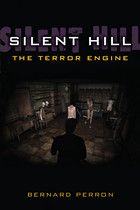 Silent Hill: The Terror Engine
Bernard Perron
University of Michigan Press, 2012 Silent Hill: The Terror Engine, the second of the two inaugural studies in the Landmark Video Games series from series editors Mark J. P. Wolf and Bernard Perron, is both a close analysis of the first three Silent Hill games and a general look at the whole series. Silent Hill, with its first title released in 1999, is one of the most influential of the horror video game series. Perron situates the games within the survival horror genre, both by looking at the history of the genre and by comparing Silent Hill with such important forerunners as Alone in the Dark and Resident Evil. Taking a transmedia approach and underlining the designer's cinematic and literary influences, he uses the narrative structure; the techniques of imagery, sound, and music employed; the game mechanics; and the fiction, artifact, and gameplay emotions elicited by the games to explore the specific fears survival horror games are designed to provoke and how the experience as a whole has made the Silent Hill series one of the major landmarks of video game history.
The Silent Letter
Jaume Subirana, Translated by Christopher Whyte
Fum d'Estampa Press, 2021 Award-winning poet, translator and academic, Jaume Subirana is one of Catalonia’s most treasured poets, winning some of its most prestigious prizes for his poetry and essays. In an eloquent translation from accomplished poet and translator Christopher Whyte, The Silent Letter showcases Subirana’s sharp observations, delicate eye for detail, stunningly beautiful images, and poignant suspension of the moment.
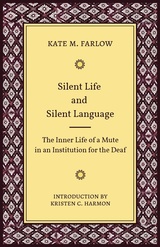 Silent Life and Silent Language: The Inner Life of a Mute in an Institution for the Deaf
Kate M. Farlow
Gallaudet University Press, 2018 Silent Life and Silent Language presents a fictionalized account of life at a Midwestern residential school for deaf students in the years following the Civil War. Based on the experiences of the author, who became deaf at the age of nine and entered a residential school when she was twelve, this historical work is remarkable and rare because it focuses on signing deaf women’s lives. One of only a few accounts written by deaf women in the 19th century, Silent Life and Silent Language gives a detailed description of daily life and learning at the Indiana Asylum for the Education of the Deaf and Dumb.
Kate M. Farlow wrote this book with the goal of giving hearing parents hope that their deaf children would be able to lead happy and productive lives. She sought to raise awareness of the benefits of deaf schools and was an early advocate for the use of American Sign Language and of bilingual education. The Christian influence on the school and on the author is strongly present in her writing and reflects an important component of deaf education at the time. Descriptions of specific signs, games, ASL story nights, and other aspects of the signing community during the 1870s will be of interest to modern students and researchers in linguistics, deaf education, Deaf studies, and Deaf history. Farlow’s work reveals a sophisticated, early understanding of the importance of access to language, education, and community for deaf individuals.
Silent Looms: Women and Production in a Guatemalan Town
By Tracy Bachrach Ehlers
University of Texas Press, 2000 Based on new fieldwork in 1997, Tracy Bachrach Ehlers has updated her classic study of the effects of economic development on the women weavers of San Pedro Sacatepéquez. Revisiting many of the women she interviewed in the 1970s and 1980s and revising her earlier hopeful assessment of women's entrepreneurial opportunities, Ehlers convincingly demonstrates that development and commercial growth in the region have benefited men at the expense of women.
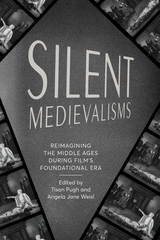 Silent Medievalisms: Reimagining the Middle Ages During Film’s Foundational Era
Edited by Tison Pugh and Angela Jane Weisl
Ohio State University Press, 2026 Silent Medievalisms investigates the prevalence of medieval narratives and tropes during cinema’s silent era and explores the ways that silent movies use the past to communicate political, national, propagandistic, and social meanings in their present moment. Groundbreaking films such as Joan the Woman (1916), Douglas Fairbanks in Robin Hood (1922), The Passion of Joan of Arc (1928), and several others provide a rare opportunity to ponder the intersection of the newest technologies with narratives that predate them by many centuries. Narrative themes and tropes are distinct from the technologies that (re)create them, yet they are imbricated within complex networks of possibility and production. Contributors consider the persistent restaging and appeal (even when problematic) of medieval tropes, illuminating the essential nature of the medieval to early cinema across geographies, methodologies, and ideologies. They examine the relationship between the old and the new, made oblique when the new would seem to eclipse the old as emergent technologies seismically shifted the ways in which audiences consumed narratives. Ultimately, Silent Medievalisms demonstrates how those technologies enabled diverse visions of the Middle Ages—historical, fantastical, political—in ways that other media did not.
Contributors:
Kimberly Ball, Elizabeth Coggeshall, John Haines, Kevin J. Harty, Valerie B. Johnson, Tison Pugh, Sabina Rahman, Carol L. Robinson, Robert Squillace, Alexandra Sterling-Hellenbrand, Alfred Thomas, Laura E. Wangerin, Angela Jane Weisl
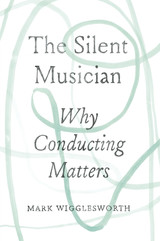 The Silent Musician: Why Conducting Matters
Mark Wigglesworth
University of Chicago Press, 2019 The conductor—tuxedoed, imposingly poised above an orchestra, baton waving dramatically—is a familiar figure even for those who never set foot in an orchestral hall. As a veritable icon for classical music, the conductor has also been subjected to some ungenerous caricatures, presented variously as unhinged gesticulator, indulged megalomaniac, or even outright impostor. Consider, for example: Bugs Bunny as Leopold Stokowski, dramatically smashing his baton and then breaking into erratic poses with a forbidding intensity in his eyes, or Mickey Mouse in Fantasia, unwittingly conjuring dangerous magic with carefree gestures he doesn’t understand. As these clichés betray, there is an aura of mystery around what a conductor actually does, often coupled with disbelief that he or she really makes a difference to the performance we hear.
The Silent Musician deepens our understanding of what conductors do and why they matter. Neither an instruction manual for conductors, nor a history of conducting, the book instead explores the role of the conductor in noiselessly shaping the music that we hear. Writing in a clever, insightful, and often evocative style, world-renowned conductor Mark Wigglesworth deftly explores the philosophical underpinnings of conducting—from the conductor’s relationship with musicians and the music, to the public and personal responsibilities conductors face—and examines the subtler components of their silent art, which include precision, charisma, diplomacy, and passion. Ultimately, Wigglesworth shows how conductors—by simultaneously keeping time and allowing time to expand—manage to shape ensemble music into an immersive, transformative experience, without ever making a sound.
Silent Observer
Christy MacKinnon
Gallaudet University Press, 1993 Rendered in lovely, full-color illustrations, Silent Observer traces the early life of author Christy MacKinnon in Nova Scotia at the turn of the century. Born in 1889, the author lost her hearing from “the Winter fever” at the age of two. Her story tells of a simple, charming life on her family’s farm by the bay and in the schoolhouse where her father taught her in their hometown of Boisdale.
Silent Observer is an affectionate, poignant memoir of childhood as seen through the eyes of a vivacious young girl. Teachers, parents, and children will share in their enjoyment of this beautiful, sensitive story of a harder but wonderful time that has passed.
 Silent Revolution: The Transformation of Divorce Law in the United States
Herbert Jacob
University of Chicago Press, 1988 Conflict and controversy usually accompany major social changes in America. Such issues as civil rights, abortion, and the proposed Equal Rights Amendment provoke strong and divisive reactions, attract extensive media coverage, and generate heated legislative debate. Some theorists even claim that only mobilization and publicity can stimulate significant legislative change. How is it possible, then, that a wholesale revamping of American divorce law occurred with scarcely a whisper of controversy and without any national debate? This is the central question posed—and authoritatively answered—in Herbert Jacob's Silent Revolution.
Since 1966, divorce laws in the United States have undergone a radical transformation. No-fault divorce is now universally available. Alimony functions simply as a brief transitional payment to help a dependent spouse become independent. Most states divide assets at divorce according to a community property scheme, and, whenever possible, many courts prefer to award custody of children to the mother and the father jointly.
These changes in policy represent a profound departure from traditional American values, and yet the legislation by which they were enacted was treated as a technical correction of minor problems. No-fault divorce, for example, was a response to the increasing number of fraudulent divorce petitions. Since couples were often forced to manufacture the evidence of guilt that many states required, and since judges frequently looked the other way, legal reformers sought no more than to bring divorce statutes into line with current practice.
On the basis of such observations, Jacob formulates a new theory of routine—as opposed to conflictual—policy-making processes. Many potentially controversial policies—divorce law reforms among them—pass unnoticed in America because legislators treat them as matters of routine. Jacob's is indeed the most plausible account of the enormous number and steady flow of policy decisions made by state legislatures. It also explains why no attention was paid to the effect divorce reform would have on divorced women and their children, a subject that has become increasingly controversial and that, consequently, is not likely to be handled by the routine policy-making process in the future.
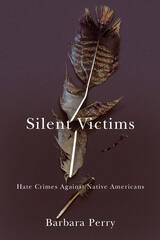 Silent Victims: Hate Crimes Against Native Americans
Barbara Perry
University of Arizona Press, 2008 Hate crimes against Native Americans are a common occurrence, Barbara Perry reveals, although most go unreported. In this eye-opening book, Perry shines a spotlight on these acts, which are often hidden in the shadows of crime reports. She argues that scholarly and public attention to the historical and contemporary victimization of Native Americans as tribes or nations has blinded both scholars and citizens alike to the victimization of individual Native Americans. It is these acts against individuals that capture her attention.
Silent Victims is a unique contribution to the literature on hate crime. Because most extant literature treats hate crimes—even racial violence—rather generically, this work breaks new ground with its findings. For this book, Perry interviewed nearly 300 Native Americans and gathered additional data in three geographic areas: the Four Corners region of the U.S. Southwest, the Great Lakes, and the Northern Plains. In all of these locales, she found that bias-related crime oppresses and segregates Native Americans.
Perry is well aware of the history of colonization in North America and its attendant racial violence. She argues that the legacy of violence today can be traced directly to the genocidal practices of early settlers, and she adds valuable insights into the ways in which “Indians” have been constructed as the Other by the prevailing culture. Perry’s interviews with Native Americans recount instances of appalling treatment, often at the hands of law enforcement officials. In her conclusion, Perry draws from her research and interviews to suggest ways in which Native Americans can be empowered to defend themselves against all forms of racist victimization.
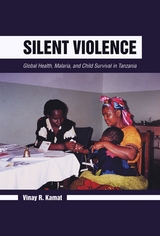 Silent Violence: Global Health, Malaria, and Child Survival in Tanzania
Vinay R. Kamat
University of Arizona Press, 2013 Silent Violence engages the harsh reality of malaria and its effects on marginalized communities in Tanzania. Vinay R. Kamat presents an ethnographic analysis of the shifting global discourses and practices surrounding malaria control and their impact on the people of Tanzania, especially mothers of children sickened by malaria.
Malaria control, according to Kamat, has become increasingly medicalized, a trend that overemphasizes biomedical and pharmaceutical interventions while neglecting the social, political, and economic conditions he maintains are central to Africa’s malaria problem. Kamat offers recent findings on global health governance, neoliberal economic and health policies, and their impact on local communities.
Seeking to link wider social, economic, and political forces to local experiences of sickness and suffering, Kamat analyzes the lived experiences and practices of people most seriously affected by malaria—infants and children. The persistence of childhood malaria is a form of structural violence, he contends, and the resultant social suffering in poor communities is closely tied to social inequalities.
Silent Violence illustrates the evolving nature of local responses to the global discourse on malaria control. It advocates for the close study of disease treatment in poor communities as an integral component of global health funding. This ethnography combines a decade of fieldwork with critical review and a rare anthropological perspective on the limitations of the bureaucratic, technological, institutional, medical, and political practices that currently determine malaria interventions in Africa.
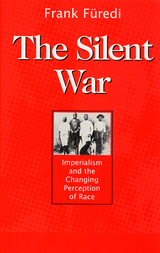 Silent War
Furedi, Frank
Rutgers University Press, 1999 "The Silent War transcends the disciplinary line that divides race relations from international relations. It is an enterprise in sociological investigation which seeks to mobilize the insights of history to clarify how the consciousness of race has evolved." - Kofi Buenor Hadjor
Racial identity has been one of the defining characteristics of the twentieth century. Yet, argues Frank Furedi in this provocative study, advocates of racial identity have long felt uncomfortable with the racialized global order which they created. Furedi traces the history of Western colonial racist ideology and its role in subjugating non-Western peoples. He analyzes the changing perception of racism in the West and how the use of "race" has altered during the course of the twentieth century. Focusing on the Second World War as the critical turning point in racist ideology, Furedi argues that the defeat of Nazism left the West uneasy with its own racist past. He assesses how this was redefined in the postwar period-especially during the Cold War- and demonstrates that, although white supremacist views gradually became obsolete in international affairs, Western nations were initially unwilling to accept criticism of their past and sought to portray racism as a natural part of human condition. As a result the West continued to adopt the moral high ground well into the postwar period, to the ultimate detriment of non-Western nations.
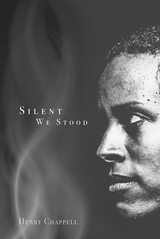 Silent We Stood
Henry Chappell
Texas Tech University Press, 2013 2014 Western Writers of America Spur Award Winner, Best Western Historical Novel
On July 8, 1860, Dallas, Texas burned. Three slaves were accused of arson and hanged without a trial. Today, most historians attribute the fire to carelessness.
Texas was the darkest corner of the Old South, too remote and violent for even the bravest abolitionists. Yet North Texas newspapers commonly reported runaway slaves, and travelers in South Texas wrote of fugitives heading to Mexico.
Perhaps a few prominent people were all too happy to call the fire an accident.
Silent We Stood weaves the tale of a small band of abolitionists working in secrecy within Dallas’s close-knit society. There’s Joseph Shaw, an undertaker and underground railroad veteran with a shameful secret; Ig Bodeker, a charismatic, melancholic preacher; Rachel Bodeker, a fierce abolitionist, Ig’s wife, and Joseph Shaw’s lover; Rebekah, a freed slave who’ll sacrifice everything for the cause; Samuel Smith, a crypto-freedman whose love for Rebekah exacts a terrible cost; and, towering above them all, a near-mythical one-armed runaway who haunts area slavers and brings hope to those dreaming of freedom.
With war looming and lives hanging in the balance, ideals must be weighed against friendship and love, and brutal decisions yield secrets that must be taken to the grave.
Silent Witnesses: Representations of Working-Class Women in the United States
Jacqueline Ellis
University of Wisconsin Press, 1998 Through detailed analyses of documentary photography and radical literature, Silent Witnesses explores how working-class identity has been repressed and manipulated to fit the expectations of liberal politicians, radical authors, Marxist historians, feminist academics, and contemporary cultural theorists.
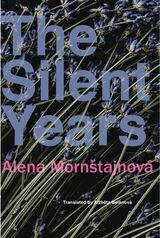 The Silent Years
Alena Mornštajnová
Seagull Books, 2026 A gripping family mystery that reveals how hidden pasts shape our present and transform our future.
Bohdana is an introverted young woman grappling with tensions in her family and a lingering question she can’t quite shake: on her last visit to the hospital, why did her gravely ill grandmother call her “Blanka,” and what potential hidden past is her family keeping from her? As Bohdana struggles to piece together the truth, another story unfolds alongside hers—that of Svatopluk Žák, a devoted builder of socialist society who hopes his beloved family’s future will be as brilliant as the star on the Soviet flag. When their two stories collide, hidden histories come to light.
In The Silent Years, Czech author Alena Mornštajnová weaves a rich, intimate family drama that reveals how easily a carefully constructed world can shatter and transform in an instant. Set in postwar Czechoslovakia, the novel follows a human story against a larger backdrop of a society in upheaval.
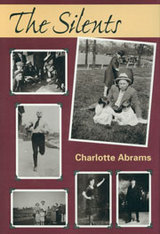 The Silents
Charlotte Abrams
Gallaudet University Press, 1996 Author Charlotte Abrams presents this proud family sketch early on in her memoir of life in Chicago with her sister and her deaf parents. Hers is a loving portrayal of how a close Jewish family survived the Depression and the home front hardships of World War II with the added complications of communication for her mother and father. Rich episodes detail history from a particularly acute point of view that entertain as they subtly inform. Her father, a former prizefighter, considered the gift of a radio an intrusion until he found that he could have his hearing daughters pantomime the Joe Louis - Billy Conn fight as it occurred.
The Silents departs from other narratives about deaf parents and hearing children when the family discovers that Abrams’ mother is becoming blind. With resiliency, the family turned the secret, terrifying sorrow their mother felt at losing her only contact with the world into a quest for the best way to bring it back. Should she learn Braille? Should she use a cane? All of the old communication and day-to-day living routines had to be relearned. And through it all, the family and their neighbors, hearing and deaf, worked together to ensure that Abrams’ parents remained the close, vital members of the community that they had always been.
Silicide Technology for Integrated Circuits
Lih J. Chen
The Institution of Engineering and Technology, 2004 Silicide Technology for Integrated Circuits focuses on the task of developing and applying metal silicide technology as it emerges from the scientific to the prototype and manufacturing stages and provides guidance on the application of the latest emerging technology.
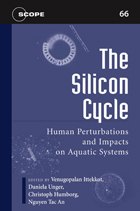 The Silicon Cycle: Human Perturbations and Impacts on Aquatic Systems
Edited by Venugopalan Ittekkot, Daniela Unger, Christoph Humborg, and Nguyen Tac An; SCOPE
Island Press, 2006 Silicon is among the most abundant elements on earth. It plays a key but largely unappreciated role in many biogeochemical processes, including those that regulate climate and undergird marine food webs. The Silicon Cycle is the first book in more than 20 years to present a comprehensive overview of the silicon cycle and issues associated with it. The book summarizes the major outcomes of the project Land-Ocean Interactions: Silica Cycle, initiated by the Scientific Community on Problems of the Environment (SCOPE) of the International Council of Scientific Unions (ICSU). It tracks the pathway of silicon from land to sea and discusses its biotic and abiotic modifications in transit as well as its cycling in the coastal seas. Natural geological processes in combination with atmospheric and hydrological processes are discussed, as well as human perturbations of the natural controls of the silicon cycle.
Silicon Solar Cell Metallization and Module Technology
Thorsten Dullweber
The Institution of Engineering and Technology, 2022 In solar cell production, metallization is the manufacturing of metal contacts at the surfaces of solar cells in order to collect the photo-generated current for use. Being one of the most expensive steps in solar cell fabrication, it plays both an electrical and an optical role, because the contacts contribute to shading, and to the series resistance of solar cells. In addition, metal contacts may reduce the solar cells voltage due to charge carrier recombination at the metal / silicon interface. Addressing these challenges could increase solar cell conversion efficiency while cutting their production costs.
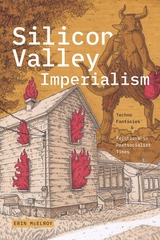 Silicon Valley Imperialism: Techno Fantasies and Frictions in Postsocialist Times
Erin McElroy
Duke University Press, 2024 In Silicon Valley Imperialism, Erin McElroy maps the processes of gentrification, racial dispossession, and economic predation that drove the development of Silicon Valley in the San Francisco Bay Area and how that logic has become manifest in postsocialist Romania. Drawing on ethnographic fieldwork and archival research in Romania and the United States, McElroy exposes the mechanisms through which the appeal of Silicon Valley technocapitalism devours space and societies, displaces residents, and generates extreme income inequality in order to expand its reach. In Romania, dreams of privatization updated fascist and anti-Roma pasts and socialist-era underground computing practices. At the same time, McElroy accounts for the ways Romanians are resisting Silicon Valley capitalist logics, where anticapitalist and anti-imperialist activists and protesters build on socialist-era worldviews not to restore state socialism but rather to establish more just social formations. Attending to the violence of Silicon Valley imperialism, McElroy reveals technocapitalism as an ultimately unsustainable model of rapacious economic and geographic growth.
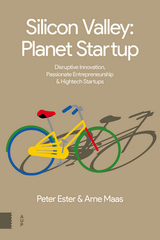 Silicon Valley, Planet Startup: Disruptive Innovation, Passionate Entrepreneurship and Hightech Startups
Peter Ester and Arne Maas
Amsterdam University Press, 2016 For decades now, Silicon Valley has been the home of the future. It’s the birthplace of the world’s most successful high-tech companies—including Apple, Yahoo!, Google, Facebook, Twitter, and many more. So what’s the secret? What is it about Silicon Valley that fosters entrepreneurship and innovation?
With Silicon Valley: Planet Startup, Peter Ester and Arne Maas argue that the answer lies in Silicon Valley’s culture—a corporate culture that values risk-taking, creativity, invention, and sharing. Through extensive interviews with Dutch entrepreneurs working in the area, Ester and Maas show that Silicon Valley is above all a mindset: a belief in thinking, with passion and ambition, far beyond the here and now. Scholars and business and budding entrepreneurs alike are sure to find both inspiration and illumination in the stories and analysis Ester and Maas have assembled here.
Silicon Wafer Bonding Technology for VLSI and MEMS Applications
Subramanian S. Iyer
The Institution of Engineering and Technology, 2002 By bonding a thin wafer of active silicon to a thicker wafer via a layer of insulating oxide to form an SOI structure it is possible to substantially improve the performance and integration of microelectronic circuits produced by very large scale integration (VLSI). For example, the recently announced IBM Power 4 'server-ona- chip' integrates two microprocessors, a high bandwidth system switch, a large memory cache and input/output functions. SOI wafer bonding is also an enabling technology in the rapidly growing field of microelectromechanical systems (MEMS).
 Silicone Survivors: Women's Experiences with Breast Implants
Susan Zimmermann
Temple University Press, 1998 Susan Zimmermann talked with forty women about perhaps one of the most sensitive issues of body image and health - their breasts, the chief attribute of femininity. In the aftermath of the early 1990s controversy over the use of silicone breast implants, how do women decide to undergo surgery o enhance or reconstruct their bodies? How does surgery alter a woman's self-image? How did they face the possibility of debilitating autoimmune disease from rupturing or leaking implants?
Some opted for breast implants after mastectomies, others for cosmetic reasons. Some felt empowered by the surgery: "Being a woman, I just like breasts and felt like I got ripped off. ... I did it for myself." Others were pressured by their husbands: "He used to make fun of parts of my body. .... And, he made me believe that if I was ever to leave him, no one would have anything to do with me because I was this deformed type of person."
After surgery, some women were ecstatic, while others had a sense of inner conflict about what they had done to themselves: were they "faking it"? And a few were angry: "I was really angry inside that I had had to put plastic bags filled with chemicals in my body in order for me to feel like I could do the Hoochie Koo on Saturday nights. ... I didn't wear tight clothes; I didn't want my children to find out."
Now, having faced years of medical and personal uncertainty, many have coped by reassessing their lives and their relationships, by sharing information and support with other women with implants, outreach that became a means for self-empowerment.
The Silk, the Shears and Marina; or, About Biography
Irena Vrkljan
Northwestern University Press, 1999 Winner of the Ksaver Šandor Gjalski Prize
These are the first two volumes of the Croatian poet and novelist Irena Vrkljan's lyrical autobiography. Although each novel illuminates the other, they also stand alone as original and independent works of art. In The Silk, the Shears, Vrkljan traces the symbolic and moral significance of her life, and her vision of the fate of women in her mother's time and in her own. Marina continues the intense analysis of the poetic self, using the life of Marina Tsvetaeva to meditate on the processes behind biography.
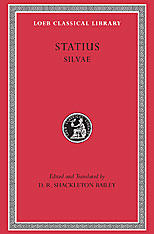 Silvae
Statius
Harvard University Press, 2003 Statius' Silvae, thirty-two occasional poems, were written probably between 89 and 96 CE Here the poet congratulates friends, consoles mourners, offers thanks, admires a monument or artistic object, describes a memorable scene. The verse is light in touch, with a distinct picture quality. Statius gives us in these impromptu poems clear images of Domitian's Rome.
Statius was raised in the Greek cultural milieu of the Bay of Naples, and his Greek literary education lends a sophisticated veneer to his ornamental verse. The role of the emperor and the imperial circle in determining taste is another readily apparent influence: the figure of the emperor Domitian permeates these poems. D. R. Shackleton Bailey's new edition of the Silvae, a freshly edited Latin text facing a graceful translation, replaces the earlier Loeb Classical Library edition with translation by J. H. Mozley. Kathleen M. Coleman contributed an essay on recent scholarship on the Silvae.
Silvae
Angelo PolizianoEdited and translated by Charles Fantazzi
Harvard University Press, 2004 Angelo Poliziano (1454-1494) was one of the great scholar-poets of the Renaissance and a leading figure in the circle of Lorenzo de'Medici "il Magnifico" in Florence. His "Silvae" are poetical introductions to his courses in literature at the University of Florence, written in Latin hexameters. They not only contain some of the finest Latin poetry of the Renaissance, but also afford unique insight into the poetical credo of a brilliant scholar as he considers the works of his Greek and Latin predecessors as well as of his contemporaries writing in Italian.
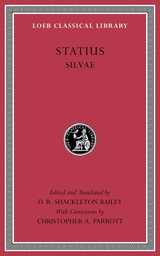 Silvae
StatiusEdited and Translated by D. R. Shackleton BaileyWith Corrections by Christopher A. Parrott
Harvard University Press, 2015 Stately verse.
Statius’ Silvae, thirty-two occasional poems, were written probably between 89 and 96 AD. Here the poet congratulates friends, consoles mourners, offers thanks, admires a monument or artistic object, and describes a memorable scene. The verse is light in touch, with a distinct pictorial quality. Statius gives us in these impromptu poems clear images of Domitian’s Rome.
Statius was raised in the Greek cultural milieu of the Bay of Naples, and his Greek literary education lends a sophisticated veneer to his ornamental verse. The role of the emperor and the imperial circle in determining taste is also readily apparent: the figure of the emperor Domitian permeates these poems.
D. R. Shackleton Bailey’s edition of the Silvae, which replaced the earlier Loeb Classical Library edition with translation by J. H. Mozley, is now reissued with corrections by Christopher A. Parrott.
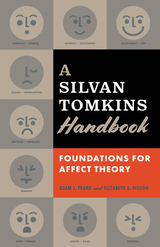 A Silvan Tomkins Handbook: Foundations for Affect Theory
Adam J. Frank
University of Minnesota Press, 2020 An accessible guide to the work of American psychologist and affect theorist Silvan Tomkins
The brilliant and complex theories of psychologist Silvan Tomkins (1911–1991) have inspired the turn to affect in the humanities, social sciences, and elsewhere. Nevertheless, these theories are not well understood. A Silvan Tomkins Handbook makes his theories portable across a range of interdisciplinary contexts and accessible to a wide variety of contemporary scholars and students of affect. A Silvan Tomkins Handbook provides readers with a clear outline of Tomkins’s affect theory as he developed it in his four-volume masterwork Affect Imagery Consciousness. It shows how his key terms and conceptual innovations can be used to build robust frameworks for theorizing affect and emotion. In addition to clarifying his affect theory, the Handbook emphasizes Tomkins’s other significant contributions, from his broad theories of imagery and consciousness to more focused concepts of scenes and scripts. With their extensive experience engaging and teaching Tomkins’s work, Adam J. Frank and Elizabeth A. Wilson provide a user-friendly guide for readers who want to know more about the foundations of affect studies.
 Silver
Philippa Merriman
Harvard University Press, 2009 The curious course of silver through human history unfolds in this rich and engaging book, accompanied by striking illustrations from the British Museum.
Philippa Merriman takes the reader back to the earliest uses of silver: in ingots and coins, dowries, hoards, and college plate. She shows us how silver demonstrated status—whether for an individual, as ornament, furnishings, and a store of wealth; or for a society, as grave decor, civic regalia, and ritual goods. And she traces the long and fascinating history of silver’s service as personal adornment—on heads, hands, wrists, ears, legs, and feet, and as accessories ranging from swords and baldrics to snuffboxes, walking sticks, fans, and chatelaines.
From the practical aspects of working silver to its role in magic, myth, and ritual in cultures as disparate as the Vikings and the Bedouins of North Africa, this exquisite book offers a full and fitting reflection of this precious metal’s power to move us.
 Silver Beach
Claire Cox
University of Massachusetts Press, 2021 It's been decades since Mara's family was last together, decades since the day her sister Allison drowned at Silver Beach.
After the family tragedy, Mara's father took her to the opposite end of the country, where she made a tidy life for herself in western Massachusetts, with a good education, stable job, and loving girlfriend. Her half-sister, Shannon, was left behind with their mother in San Diego. Surviving on disability checks and handouts from family, Shannon can't remember a time when Linda wasn't drunk.
When a heart attack lands Linda in the hospital, Shannon's first impulse is to skip town—to finally escape her mother's orbit and make her sister step up. While Mara gave up on Linda years ago and couldn't have less in common with her sister, an unemployed stoner, it's time for her to stop running from everything that makes her have feelings. This is a novel about the persistent, mystifying ties of family, the extravagant mess of addiction, and what it means to actually live inside your own life.
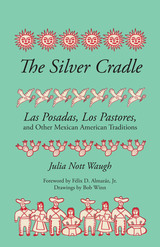 The Silver Cradle: Las Posadas, Los Pastores, and Other Mexican American Traditions
By Julia Nott Waugh
University of Texas Press, 1955 Originally published in 1955, The Silver Cradle is the story of a year in the life of the Mexican American people of San Antonio, Texas. During the 1950s, Julia Nott Waugh recorded the performances of such seasonal and religious traditions as Las Posadas, Los Pastores, Las Calaveras, the Blessing of the Animals, the liturgical observances of Holy Week, and festivities of el diez y seis de septiembre (Mexican Independence Day), among others. Although years have passed and many of the details of observances have changed, the festival calendar and the joy and sincerity of the Mexican American people in honoring its customs and obligations have not disappeared. Now, in fact, a much wider population shares and appreciates the pageantry preserved for us by people like Graciana Reyes, in whose prized silver cradle the Christ Child slept every year at Christmas, and like Doroteo Domínguez, whose annual devotion to presenting a thousand-year-old pastoral epic in his back yard was legendary. Waugh has done much more than just open a window onto a charming past. She has captured for us one of the true gifts of our Mexican American heritage—the willingness to ritually celebrate the passage of time and to embellish the occasions with sensitivity and fervor. This book will appeal to the general reader as well as to those interested in folk traditions and Mexican American culture.
Silver Dagger
David French
Talon Books, 1993 Steve Marsh is a mystery writer, the protagonist of David French’s gripping thriller, Silver Dagger. Soon after his third novel is published, Marsh’s wife receives a series of phone calls and letters that threaten to destroy their marriage. Adultery, blackmail, murder, a figure lurking in the rain. All these classic elements of Marsh’s fiction soon become part of his life.
The Silver Dove
Andrei Bely
Northwestern University Press, 2000 The Silver Dove, published four years before Bely's masterpiece Petersburg, is considered the first modern Russian novel. Breaking with Russian realism, and a pioneering Symbolist work, its vividly drawn characters, elemental landscapes, and rich style make it accessible to the Western reader, and this new translation makes the complete work available in English for the first time.
Dissatisfied with the life of the intelligentsia, the poet Daryalsky joins a rural mystic sect, the Silver Doves. The locals, in particular the peasant woman Matryona, are fascinated by the dashing stranger. Daryalsky is in turn taken in by the Doves' intimacy with the mystical and spiritual--and by Matryona. Under the influence of Kudeyarov, the ruthless cult leader, Daryalsky is used in a bid to produce a sacred child. But in time the poet disappoints the Doves and must face their suspicions and jealousies--and his own inevitable dire fate.
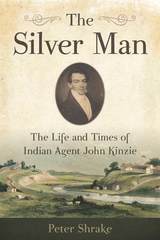 The Silver Man: The Life and Times of Indian Agent John Kinzie
Peter Shrake
Wisconsin Historical Society Press, 2016 In The Silver Man: The Life and Times of John Kinzie, readers witness the dramatic changes that swept the Wisconsin frontier in the early and mid-1800s, through the life of Indian agent John Harris Kinzie. From the War of 1812 and the monopoly of the American Fur Company, to the Black Hawk War and the forced removal of thousands of Ho-Chunk people from their native lands—John Kinzie’s experience gives us a front-row seat to a pivotal time in the history of the American Midwest. As an Indian agent at Fort Winnebago—in what is now Portage, Wisconsin—John Kinzie served the Ho-Chunk people during a time of turbulent change, as the tribe faced increasing attacks on its cultural existence and very sovereignty, and struggled to come to terms with American advancement into the upper Midwest. The story of the Ho-Chunk Nation continues today, as the tribe continues to rebuild its cultural presence in its native homeland. Through John Kinzie’s story, we gain a broader view of the world in which he lived—a world that, in no small part, forms a foundation for the world in which we live today.
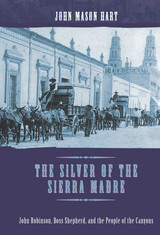 The Silver of the Sierra Madre: John Robinson, Boss Shepherd, and the People of the Canyons
John Mason Hart
University of Arizona Press, 2008 In the great barranca known today as Copper Canyon, the small mining town of Batopilas once experienced a silver bonanza among the largest ever known. American investors, believing that Mexico offered an unexploited cornucopia, began purchasing mines in the Sierra Madre, seeking to expand their hold on natural resources outside U.S. borders. From 1861 until the Revolution of 1910, the men of the Batopilas Mining Company ruled the region using their wealth, armed might, and extensive connections. The technology, industrialism, and politics their interests brought to this remote community tied the Tarahumara, Yaqui, Mayo, and other peoples of the barrancas directly to the economies of the United States and China. Local society was revolutionized, and a dramatic tapestry of human interactions was created. Based on many volumes of mining company records, The Silver of the Sierra Madre exposes the mentality and methods of mine owners John Robinson and Alexander “Boss” Shepherd, vividly detailing their exploitation of the people and the natural resources of Chihuahua. Hart aptly demonstrates the human and financial losses resulting from President Porfirio Díaz’s development programs, which relied on foreign investors, foreign managers, and foreign technology. This unprecedented work also provides a highly interesting ethnographic and social description of one of the least-known areas of Mexico. It is a tale of power and desperation, respect and arrogance, adventure and tragedy, and, ultimately, triumph and survival.
Silver Road
Kazim Ali
Tupelo Press, 2018 In 1953, Yoko Ono wrote a score called “Secret Piece,” an open-ended formula for musical performance in a forest at daybreak. Beginning with this invitation to creation, and using essays, diary entries, prose maps, and verse fragments, Kazim Ali marks a path through quantum physics, sixth-century Chola Empire sculptures, the challenges of literary translation and of climate change, and destruction of a priceless set of handmade flutes by airport security. Amid shards from far-flung histories and geographies he finds the cosmos.
 Silver Screens: A Pictorial History of Milwaukee's Movie Theaters
Larry Widen
Wisconsin Historical Society Press, 2007
Silver Screens traces the rich history of Milwaukee's movie theaters, from 1890s nickelodeons to the grand palaces of the Roaring Twenties to the shopping mall outlets of today. And the story doesn't end there: in the past two decades, the revival of interest in preservation and restoration of theaters has confirmed that there's still life in these beloved old structures. With the publication of Silver Screens, authors Larry Widen and Judi Anderson help ensure that our old theaters, those being restored and those long since vanished, will remain forever embedded in our collective memory.
In this revised edition of their book Milwaukee Movie Palaces, the authors present new findings on film innovations, drive-in theaters, projection booths, movie promotions, noted theater personalities, recent restoration efforts, and much more. Illuminated with more than a hundred photographs, including many never before published, Silver Screens is a stunning tribute to the legacy of the movie theater.
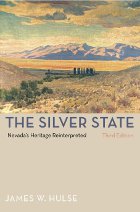 The Silver State, 3rd Edition: Nevada'S Heritage Reinterpreted
James W. Hulse
University of Nevada Press, 2004 Nevada has changed dramatically over the past quarter century, and in this third edition of The Silver State, renowned historian James W. Hulse recounts the major events—historical, political, and social—that have shaped our state. Hulse’s cohesive approach offers students and general readers an accessible account of Nevada’s colorful history. The new edition highlights the social and political changes that have occurred since the original publication of The Silver State in 1991. Hulse discusses the impact of a growing population; changes in the economy and education system; expanding roles of women; recent developments in state politics, including the 2003 legislative session; the influence of Nevada’s growing ethnic population and increasingly divergent demographic groups; and the impact of federal policies, including President George W. Bush’s 2002 decision to authorize the opening of a nuclear-waste depository at Yucca Mountain. In addition, all the recommended reading lists have been updated. The Silver State explores many dimensions of the Nevada experience and its peoples. This book will inspire readers to take another look at the rich cultural heritage and eventful history of Nevada, the Silver State.
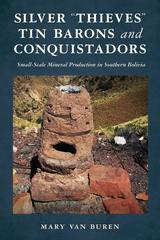 Silver “Thieves," Tin Barons, and Conquistadors: Small-Scale Mineral Production in Southern Bolivia
Mary Van Buren
University of Arizona Press, 2024 The Spanish conquest of Peru was motivated by the quest for precious metals, a search that resulted in the discovery of massive silver deposits in what is now southern Bolivia. The enormous flow of specie into the world economy is usually attributed to the Spanish imposition of a forced labor system on the Indigenous population as well as the introduction of European technology. This narrative omits the role played by thousands of independent miners, often working illegally, who at different points in history generated up to 30 percent of the silver produced in the region. In this work, Mary Van Buren examines the long-term history of these workers, the technology they used, and their relationship to successive large-scale mining.
The methods of historian Bertell Ollman, particularly a dialectical approach and “doing history backwards,” are used to examine small-scale mineral production in Porco, Bolivia. The research is based on nine seasons of archaeological fieldwork and historical research, with a particular focus on labor and technology. Van Buren argues that artisanal mineral production must be understood in relation to large-scale mining rather than as a traditional practice and that the Bolivian case is a culturally specific instantiation of a broader economic phenomenon that began under colonial regimes.
 Silviculture and Ecology of Western U.S. Forests
John D. Bailey
Oregon State University Press, 2015 Silviculture, once regarded solely as reforestation and growing trees for timber, is understood today as also maintaining forest health, reducing fire potential, benefitting wildlife and aesthetics, and ensuring multiple options for the future against the uncertainties of a changing climate.
Silviculture and Ecology of Western U.S. Forests, Second Edition, is a text for students, professional forest managers, and scientists that summarizes both early and contemporary research and principles relevant to the silviculture, ecology, and multi-purpose management of western U. S. forests. Based on its authors’ significant experiences and contributions in the field, as well as nearly 1000 additional references, Silviculture and Ecology remains the only text that focuses on silviculture in western U.S. forests—providing background and basis for current biological, ecological, and managerial practices.
Detailed chapters on fire, tree growth, and management of complex stand structures, as well as shrub ecology and an ecosystem framework, are bolstered in the second edition. A new series of case studies illustrates how silvicultural practices are developed and modified as forests grow and new challenges and opportunities occur. Contemporary silvicultural practices, particularly pertaining to fire use, vegetation management, soil fertility, and fertilization have been updated, and modifications that enhance standard practices are demonstrated throughout the text.
In this comprehensive reference, readers entering the field will come to understand the significance of carefully managing forests by conscious design, and experienced silviculturists will benefit from the edition’s up-to-date information, providing forest users with a greater range of ecosystem services and consumable products alike.
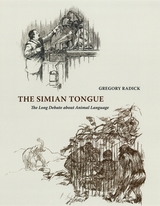 The Simian Tongue: The Long Debate about Animal Language
Gregory Radick
University of Chicago Press, 2007 In the early 1890s the theory of evolution gained an unexpected ally: the Edison phonograph. An amateur scientist used the new machine—one of the technological wonders of the age—to record monkey calls, play them back to the monkeys, and watch their reactions. From these soon-famous experiments he judged that he had discovered “the simian tongue,” made up of words he was beginning to translate, and containing the rudiments from which human language evolved. Yet for most of the next century, the simian tongue and the means for its study existed at the scientific periphery. Both returned to great acclaim only in the early 1980s, after a team of ethologists announced that experimental playback showed certain African monkeys to have rudimentarily meaningful calls.
Drawing on newly discovered archival sources and interviews with key scientists, Gregory Radick here reconstructs the remarkable trajectory of a technique invented and reinvented to listen in on primate communication. Richly documented and powerfully argued, The Simian Tongue charts the scientific controversies over the evolution of language from Darwin’s day to our own, resurrecting the forgotten debts of psychology, anthropology, and other behavioral sciences to the Victorian debate about the animal roots of human language.
The Similitude of Blossoms: A Critical Biography of Izumi Koyka (1873-1939), Japanese Novelist and Playwright
Charles Shiro Inouye
Harvard University Press, 1998 Izumi Kyoka (1872-1939) wrote some 300 stories, plays, and essays. In the first book-length study in English of Kyoka, Charles Shiro Inouye argues that his writings were a refinement of a vision that came into focus around 1900. This narrative archetype formed the aesthetic and ethical bases of his work. Kyoka does not fit the conventional story of Japanese literary modernization. Unlike most of his contemporaries, he did not jettison the Japanese literary tradition in favor of modernist imports from the West. The highly visual mode of figuration that was Kyoka's compromise with the demands of literary modernism allows us to see the continuation of Edo culture in the Japanese modern and expand our understanding of literary reform in the early twentieth century.
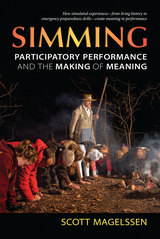 Simming: Participatory Performance and the Making of Meaning
Scott Magelssen
University of Michigan Press, 2014 At an ecopark in Mexico, tourists pretend to be illegal migrants, braving inhospitable terrain and the U.S. Border Patrol as they attempt to cross the border. At a living history museum in Indiana, daytime visitors return after dark to play fugitive slaves on the Underground Railroad. In the Mojave Desert, the U.S. Army simulates entire provinces of Iraq and Afghanistan, complete with bustling villages, insurgents, and Arabic-speaking townspeople, to train soldiers for deployment to the Middle East. At a nursing home, trainees put on fogged glasses and earplugs, thick bands around their finger joints, and sandbag harnesses to simulate the effects of aging and to gain empathy for their patients. These immersive environments in which spectator-participants engage in simulations of various kinds—or “simming”—are the subject of Scott Magelssen’s book. His book lays out the ways in which simming can provide efficacy and promote social change through affective, embodied testimony. Using methodology from theater history and performance studies (particularly as these fields intersect with cultural studies, communication, history, popular culture, and American studies), Magelssen explores the ways these representational practices produce, reify, or contest cultural and societal perceptions of identity.
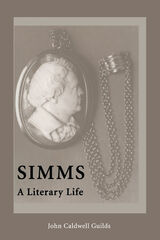 Simms: A Literary Life
John C. Guilds
University of Arkansas Press Edgar Allan Poe viewed William Gilmore Simms “in invention, in vigor, in movement, in the power of exciting interest, and in the artistical arrangement of his themes,” as surpassing “any of his countrymen.” After the Civil War, long years of neglect tarnished Simms’s reputation as “the central figure in the literature of the Old South,” as Jay B. Hubbell described him. However, as John Caldwell Guilds fully demonstrates here, the magnitude of Simms’s achievement cannot be denied. Simms produced seventy-two book-length works, including novels, short story collections, poetry, drama, literary criticism, essays, history and biography, encompassing ante-colonial America, the English colonies, the Revolutionary War, and the rampaging frontier. In the first full-length biography since 1892, Guilds restores Simms to his proper place as a major figure in American letters and reintroduces the reading public to this at once endearing and insufferable man, a husband, father, planter, and author.
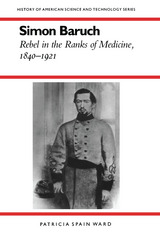 Simon Baruch: Rebel in the Ranks of Medicine, 1840-1921
Patricia Spain Ward
University of Alabama Press, 1994 Recounts the remarkable life of a Prussian/Polish Jew who immigrated to the United States as a teenager in the 1850s and became one of the nation’s best-known physicians by the turn of the century
After medical study in South Carolina and Virginia on the eve of the Civil War, Simon Baruch served the Confederacy as a surgeon for three years, twice undergoing capture and internment. Despite economic hardships while practicing in South Carolina during Reconstruction, he helped to reactivate the State Medical Association and served as president of the State Board of Health.
In 1881 he joined the exodus of southern physicians and scientists of that period, taking up residence in New York City, where he rose to prominence through his advocacy of surgery in one of the early operations for appendicitis and through is role as the protective physician in a widely publicized “child cruelty” case involving the musical prodigy, Josef Hofmann. Baruch became a leader in the nationwide movement to establish free public baths for tenement dwellers and in the development of expert medical journalism. Although his advocacy of such natural remedies as water, fresh air, and diet often made him appear unaccountably iconoclastic to his contemporaries, he has gained posthumous recognition as a pioneer in physical medicine.
Bernard N. Baruch, one of his four sons, has memorialized this work through endowments for research and instruction in physical medicine and rehabilitation. Ward reconstructs the life of a medical student in the South at the opening of the Civil War, the adventures of a Confederate surgeon, and the difficulties of a practitioner in Reconstruction South Carolina. Simon Baruch’s physician’s registers and his correspondence with colleagues afford the reader an immediate sense of the therapeutic dilemmas facing physicians and patients of his era. Baruch’s experiences while establishing himself in New York City after 1881 reflect the challenges facing those trying to break into what was then the nation’s medical capital—as well as that city’s rich opportunities and heady intellectual atmosphere. His energetic campaign for free public baths illustrates one of the most colorful chapters of American social history, as immigrants flooded the cities at the turn of the century. As medical editor of the New York Sun from 1912 to 1918, Baruch touched on most of the health concerns of that period and a few—such as handgun control—that persist to this day.
 Simone: A Novel
Eduardo Lalo
University of Chicago Press, 2015 Eduardo Lalo is one of the most vital and unique voices of Latin American literature, but his work is relatively little known in the English-speaking world. That changes now: this masterful translation of his most celebrated novel, Simone—which won the 2013 Rómulo Gallegos International Novel Prize—will introduce an English-language audience to this extraordinary literary talent.
A tale of alienation, love, suspense, imagination, and literature set on the streets of San Juan, Puerto Rico, Simone tells the story of a self-educated Chinese immigrant student courting (and stalking) a disillusioned, unnamed writer who is struggling to make a name for himself in a place that is not exactly a hotbed of literary fame. By turns solipsistic and political, romantic and dark, Simone begins with the writer’s frustrated, satiric observations on his native city and the banal life of the university where he teaches—forces utterly at odds with the sensuality of his writing. But, as mysterious messages and literary clues begin to appear—scrawled on sidewalks and walls, inside volumes set out in bookstores, left on his answering machine and under his windshield wiper—Simone progresses into a cat-and-mouse game between the writer and his mystery stalker. When the eponymous Simone’s identity is at last revealed, the writer finds in the life of this Chinese immigrant a plight not unlike his own. Traumatized and lonely, the pair moves towards bittersweet collaborations in passion, grief, and art.
Simone de Beauvoir
Lisa Appignanesi
Haus Publishing, 2019 Simone de Beauvoir was a member of the intellectual elite of philosopher-writers whose feminist ideas revolutionised conventional thinking. She is known primarily for her monumental work: The Second Sex, (1949) a scholarly and passionate seminal work, which became a classic of feminist literature but also for her partnership with the philosopher Jean-Paul Sartre, France's most celebrated and unconventional intellectual couplings.
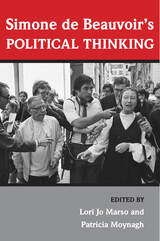 Simone de Beauvoir’s Political Thinking
Edited by Lori Jo Marso and Patricia Moynagh
University of Illinois Press, 2006 By exploring the life and work of the influential feminist thinker Simone de Beauvoir, this book shows how each of us lives within political and social structures that we can--and must--play a part in transforming. It argues that Beauvoir’s careful examination of her own existence can also be understood as a dynamic method for political thinking. As the contributors illustrate, Beauvoir's political thinking proceeds from the bottom up, using examples from individual lives as the basis for understanding and transforming our collective existence. For example, she embraced her responsibility as a French citizen as making her complicit in the French war against Algeria. Here, she sees her role as an oppressor. In other contexts, she looks to the lives of individual women, including herself, to understand the dimensions of gender inequality. This volume’s six tightly connected essays home in on the individual’s relationship to community, and how one’s freedom interacts with the freedom of other people. Here, Beauvoir is read as neither a liberal nor a communitarian. The authors focus on her call for individuals to realize their freedom while remaining consistent with ethical obligations to the community. Beauvoir's account of her own life and the lives of others is interpreted as a method to understand individuals in relations to others, and as within structures of personal, material, and political oppression. Beauvoir's political thinking makes it clear that we cannot avoid political action. To do nothing in the face of oppression denies freedom to everyone, including oneself.
Simone in Pieces
Janet Burroway
University of Wisconsin Press, 2025 Readers first meet Simone Lerrante, a Belgian war orphan, as a child refugee in Sussex, England, her memory damaged by trauma. This novel offers a kaleidoscopic vision of her fractured life and piecemeal understanding of self across multiple points of view. Following her from Cambridge to New York City and across the United States—through a disastrous marriage, thwarted desire, and the purgatory of academic backwaters—the novel charts Simone’s unexpected reconnection with her past, which provides both autonomy and inspiration for her future. Janet Burroway slowly reveals a multifaceted, fascinating protagonist, who observes her own life without always allowing herself to be immersed in it. Spanning seven decades, this story is both epic and contained, rewarding readers at every turn.
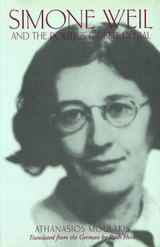 Simone Weil and the Politics of Self-Denial
Athanasios Moulakis & Translated by Ruth Hein
University of Missouri Press, 1998
Simone Weil and the Politics of Self-Denial delivers what no other book on Weil has—a comprehensive study of her political thought. In this examination of the development of her thought, Athanasios Moulakis offers a philosophical understanding of politics that reaches beyond current affairs and ideological advocacy.
Simone Weil—philosopher, activist, mystic—unites a profound reflection on the human condition with a consistent and courageous existential and intellectual honesty manifest in the moving testimony of her life and her death. Moulakis examines Weil's political thought as an integral part of a lived philosophy, in which analysis and doctrine are inseparable from the articulation of an intensely personal, ultimately religious experience.
Because it is impossible to distinguish Weil's life from her thought, her writings cannot be understood properly without linking them to her life and character. By situating Weil's political thought within the context of the intellectual climate of her time, Moulakis connects it also to her epistemology, her cosmology, and her personal experience.
Simone Weil and the Politics of Self-Denial presents the unfolding of Weil's philosophical life against the backdrop of the political and social conditions of the last days of the Third French Republic, the Spanish Civil War, and the rise and clash of totalitarian ideologies. The ideological climate of the age—of which Weil herself was not quite free—was indeed the major "obstacle" in the struggle against which she fashioned her critical, intellectual, and moral tools.
Weil has been categorized a number of ways: as a saint and a near convert to Roman Catholicism, as a social critic, or as an analytic philosopher. Moulakis examines all aspects of Weil's thought in the indissoluble unity in which she lived them. This thorough investigation pursues the particular intellectual affiliations and the social and political experiential stimuli of Weil's work while simultaneously teasing out the timeless themes that her own timely analysis was intended to reveal.
 Simone Weil and the Specter of Self-Perpetuating Force
E. Jane Doering
University of Notre Dame Press, 2010
Simone Weil's philosophical and social thought during her short life (1909-1943) was intimately engaged with the nature of power and force, both human and natural, and the problems inherent in the use of force. Weil argued vehemently for pacifism, then moved toward a guarded acceptance of the use of force under very specific circumstances, in the context of the rise of Nazism. Ultimately she came to a nuanced and unique perspective on force and on the preservation of human dignity, in the aftermath of several profound mystical experiences during the last years of her life. E. Jane Doering carefully examines and analyzes the material in Weil's notebooks and lesser-known essays to illuminate her evolving thought on violence, war, and injustice. In addition, Doering addresses Weil's engagement with the Bhagavad Gita during her final years, a text that reoriented and enlightened Weil's activist and intellectual search for moral value in a violent world.
Apart from small excerpts, none of the four volumes of Weil's notebooks, only recently published in French, have been translated into English. Simone Weil and the Specter of Self-Perpetuating Forcecontains Doering's expert translations of numerous notebook entries. The book will interest Weil scholars, those in French studies, and those who explore interdisciplinary topics in philosophy, religious studies, history, and political science.
"Simone Weil and the Specter of Self-Perpetuating Force is a definitive contribution not only to Weil studies, but to any effort to understand the problem of violence and the sources of peace. The study seamlessly blends narratives of Weil's life and thought during the early twentieth century with those of people, political movements, and events pivoting on the world stage. E. Jane Doering helps to frame a plausible case for the optimism Weil forged in the fire of her own suffering: there is a counterforce to violence, and it is available when we attend to life beyond the delusions we habitually cultivate." -- Ann Pirruccello, University of San Diego
"E. Jane Doering's book provides us a new, more penetrating focus on the central message of Simone Weil. The 'mine of pure gold' that Weil referred to in her last days is sharply delineated here: the possibility of grace as the countervailing power that may efficaciously oppose oppressive force. Doering's research is impeccable and opens new perspectives for Weil scholars for years to come." --John Marson Dunaway, Mercer University
"E. Jane Doering deals in a novel and insightful way with the concept of force (and self-perpetuating violence) in the thought of Simone Weil particularly as this was elaborated in the anguished writings of the last years of her life (1938-43) after her mystical experience and her renunciation of pacifism." --Lawrence Schmidt, University of Toronto
"Jane Doering has done a great service in bringing to light many of Weil's writings that have received scant attention. These especially include numerous untranslated early works on the degenerating political situation in Europe in the 1930s, works that have been left aside as having narrow historical interest. But Prof. Doering in bringing them to light has done us all in our present situation an even greater service in using these work to expose Weil's eternally valid insights into the empire of force, and its alternatives to it." -- The Rev. Dr. Eric O. Springsted, President of the American Weil Society
"Doering reveals the evolution of our French philosopher's thought concerning the 'spirit of justice' as the fruit of meditation on classical texts from different civilizations as well as purely philosophical reflection. The author of this work brings together in an innovative way the thought of Albert Camus and Simone Weil on force and justice. Doering persuasively shows that Simone Weil offers a spiritual and political key to resolving some of the thorniest problems afflicting our contemporary world." --Robert Chenavier, President de l'Association pour l'etude de la pensee de Simone Weil
 Simone Weil: Late Philosophical Writings
Eric O. Springsted
University of Notre Dame Press, 2015 Although trained as a philosopher, Simone Weil (1909–43) contributed to a wide range of subjects, resulting in a rich field of interdisciplinary Weil studies. Yet those coming to her work from such disciplines as sociology, history, political science, religious studies, French studies, and women’s studies are often ignorant of or baffled by her philosophical investigations. In Simone Weil: Late Philosophical Writings, Eric O. Springsted presents a unique collection of Weil’s writings, one concentrating on her explicitly philosophical thinking.
The essays are drawn chiefly from the time Weil spent in Marseille in 1940-42, as well as one written from London; most have been out of print for some time; three appear for the first time; all are newly translated. Beyond making important texts available, this selection provides the context for understanding Weil's thought as a whole. This volume is important not only for those with a general interest in Weil; it also specifically presents Weil as a philosopher, chiefly one interested in questions of the nature of value, moral thought, and the relation of faith and reason. What also appears through this judicious selection is an important confirmation that on many issues respecting the nature of philosophy, Weil, Wittgenstein, and Kierkegaard shared a great deal.
SIMOX
Maria J. Anc
The Institution of Engineering and Technology, 2004 SIMOX explores Separation-by-IMplanted-OXygen technology, a method of fabricating silicon-on-insulator structures and substrates by implanting high doses of oxygen and high temperature annealing.
Simple and Direct: A Rhetoric for Writers
Jacques Barzun
University of Chicago Press, 1994 In Simple & Direct, Jacques Barzun, celebrated author and educator, distills from a lifetime of writing and teaching his thoughts about the craft of writing. In chapters on diction, syntax, tone, meaning, composition, and revision, Barzun describes and prescribes the techniques to correct even the most ponderous style. Exercises, model passages — both literary and unorthodox — and hundreds of often amusing examples of usage gone wrong demonstrate the process of making intelligent choices and guide us toward developing strong and distinctive prose.
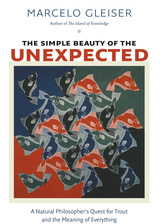 The Simple Beauty of the Unexpected: A Natural Philosopher’s Quest for Trout and the Meaning of Everything
Marcelo Gleiser
Dartmouth College Press, 2016 Marcelo Gleiser has had a passion for science and fishing since he was a boy growing up on the beaches of Rio de Janeiro. Now a world-famous theoretical physicist with hundreds of scientific articles and several books of popular science to his credit, he felt it was time to connect with nature in less theoretical ways. After seeing a fly-fishing class on the Dartmouth College green, he decided to learn to fly-fish, a hobby, he says, that teaches humility. In The Simple Beauty of the Unexpected, Gleiser travels the world to scientific conferences, fishing wherever he goes. At each stop, he ponders how in the myriad ways physics informs the act of fishing; how, in its turn, fishing serves as a lens into nature’s inner workings; and how science engages with questions of meaning and spirituality, inspiring a sense of mystery and awe of the not yet known. Personal and engaging, The Simple Beauty of the Unexpected is a scientist’s tribute to nature, an affirmation of humanity’s deep connection with and debt to Earth, and an exploration of the meaning of existence, from atom to trout to cosmos.
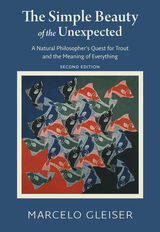 The Simple Beauty of the Unexpected: A Natural Philosopher’s Quest for Trout and the Meaning of Everything
Marcelo Gleiser
Brandeis University Press, 2022 A personal and engaging tribute to nature from a world-famous theoretical physicist.
Marcelo Gleiser has had a passion for science and fishing since he was a boy growing up on the beaches of Rio de Janeiro. As a world-famous theoretical physicist with hundreds of scientific articles and several books of popular science to his credit, he felt it was time to once again connect with nature in less theoretical ways. After seeing a fly-fishing class on the Dartmouth College green, he decided to learn to fly-fish, a hobby, he says, that teaches humility. In The Simple Beauty of the Unexpected, Gleiser travels the world to scientific conferences, fishing wherever he goes. At each stop, he ponders the myriad ways physics informs the act of fishing; how, in its turn, fishing serves as a lens into nature’s inner workings; and how science engages with questions of meaning and spirituality, inspiring a sense of mystery and awe of the not yet known. Personal and engaging, The Simple Beauty of the Unexpected is a scientist’s tribute to nature, an affirmation of humanity’s deep connection with and debt to Earth, and an exploration of the meaning of existence, from atom to trout to cosmos.
This softcover edition features a new essay by Gleiser on how we need a profound change of worldview if we are to have a vibrant future for our species in this fragile environment. He describes how this book was an incubator for his current thinking.
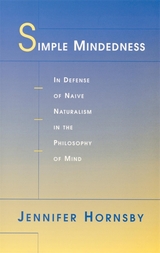 Simple Mindedness: In Defense of Naive Naturalism in the Philosophy of Mind
Jennifer Hornsby
Harvard University Press, 1997 How is our conception of what there is affected by our counting ourselves as inhabitants of the natural world? How do our actions fit into a world that is altered through our agency? And how do we accommodate our understanding of one another as fellow subjects of experience--as beings with thoughts and wants and hopes and fears? These questions provide the impetus for the detailed discussions of ontology, human agency, and everyday psychological explanation presented in this book. The answers offer a distinctive view of questions about "the mind's place in nature," and they argue for a particular position in philosophy of mind: naive naturalism.
This position opposes the whole drift of the last thirty or forty years' philosophy of mind in the English-speaking world. Jennifer Hornsby sets naive naturalism against dualism, but without advancing the claims of "materialism," "physicalism," or "naturalism" as these have come to be known. She shows how we can, and why we should, abandon the view that thoughts and actions, to be seen as real, must be subject to scientific explanation.
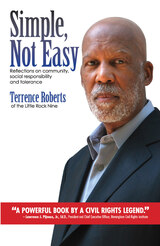 Simple Not Easy: Reflections on community social responsibility and tolerance
Terrence Roberts
Parkhurst Brothers, Inc., 2010 HE MADE HISTORY. HE TELLS THE TRUTHS HE KNOWS.
LEAD TITLE/Our National Conversation Series "Terrence Roberts is in the truest sense an upstander - an individual whose voice and actions compel us to explore difficult topics and challenge us to face our shared history, honestly. His words and reflections celebrate the notion of difference, model socially responsible behavior and promote tolerance in our daily lives. Reading this book, you will be inspired, in Dr. Roberts's words, to 'think beyond the ordinary." ----Margot Stern Strom, Executive Director, Facing History and Ourselves, Inc. "Terrence Roberts challenges all of us to make the world more inclusive by adjusting our 'mental maps.' He reminds us that we will not achieve that long-sought beloved community until we recognize the value of each individual-until we affirm each other. Simple, NotEasy is one trailblazer's mingling of history and contemporary mattersto engage a new conversations on community, social responsibility and tolerance. A powerful book by a civil rights legend. "
--- Lawrence J. Pijeaux, Jr., Ed.D.,
Simple Pleasures: Thoughts on Food, Friendship, and Life
Stephanie Mills
Island Press, 2012 In Simple Pleasures: Thoughts on Food, Friendship, and Life we have highlighted two chapters from Stephanie Mill’s reflection the pleasures, as well as the virtues and difficulties, of a perhaps simpler than average North American life. It is a thoughtful paean to living, like Thoreau, a deliberate life. Mill’s writing is beautifully crafted, fluid, inspiring, and enlightening, and these chapters encourage you to take a moment to reflect on your own life. It celebrates the pleasures, beauty, and fulfillment of a simple life, a goal well worth striving for.
 Simple Rules for a Complex World
Richard A. Epstein
Harvard University Press, 1995 Too many laws, too many lawyers--that's the necessary consequence of a complex society, or so conventional wisdom has it. Countless pundits insist that any call for legal simplification smacks of nostalgia, sentimentality, or naiveté. But the conventional view, the noted legal scholar Richard Epstein tells us, has it exactly backward. The richer texture of modern society allows for more individual freedom and choice. And it allows us to organize a comprehensive legal order capable of meeting the technological and social challenges of today on the basis of just six core principles. In this book, Epstein demonstrates how.
The first four rules, which regulate human interactions in ordinary social life, concern the autonomy of the individual, property, contract, and tort. Taken together these rules establish and protect consistent entitlements over all resources, both human and natural. These rules are backstopped by two more rules that permit forced exchanges on payment of just compensation when private or public necessity so dictates. Epstein then uses these six building blocks to clarify many intractable problems in the modern legal landscape. His discussion of employment contracts explains the hidden virtues of contracts at will and exposes the crippling weaknesses of laws regarding collective bargaining, unjust dismissal, employer discrimination, and comparable worth. And his analysis shows how laws governing liability for products and professional services, corporate transactions, and environmental protection have generated unnecessary social strife and economic dislocation by violating these basic principles.
Simple Rules for a Complex World offers a sophisticated agenda for comprehensive social reform that undoes much of the mischief of the modern regulatory state. At a time when most Americans have come to distrust and fear government at all levels, Epstein shows how a consistent application of economic and political theory allows us to steer a middle path between too much and too little.
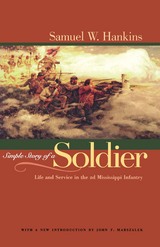 Simple Story Of A Soldier: Life And Service in the 2d Mississippi Infantry
Samuel W. Hankins
University of Alabama Press, 2004 The camp, battle, and prison experiences of a common soldier
This fast-paced memoir was written in 1905 by 61-year-old Samuel W. Hankins while he was living in the Soldiers Home in Gulfport, Mississippi. It vividly details his years as a Confederate rifleman from the spring of 1861, when at a mere sixteen years of age he volunteered for the 2d Mississippi Infantry, through the end of the war in 1865, when he was just twenty years old and maimed for life.
The 2d Mississippi was part of the Army of Northern Virginia and as such saw action at Bull Run/Manassas, Seven Pines and the Peninsular Campaign, and Gettysburg. Besides being hospitalized with measles, suffering severely frostbitten feet, and being wounded by a minié ball at Railroad Cut, Hankins was captured by Federal forces and sent to a prisoner of war camp on David’s Island, New York. Later, he was transferred to a South Carolina hospital, returned home on furlough, joined a cavalry unit that fought at Atlanta. He was stationed in Selma, Alabama, when the war ended.
The strength of Hankins’s text lies in his straightforward narrative style virtually free of Lost Cause sentiment. Both Union and Confederate veterans could relate to his stories because so many of them had faced similar challenges during the war. Full of valuable information on a common soldier’s experience, the memoir still conjures the sights, sounds, and smells of warfare.
Simple Things: Lessons from the Family Farm
Jerry Apps
Wisconsin Historical Society Press, 2018 In this collection of thoughtful essays, Jerry Apps reflects on the “simple things” that made up everyday life on the farm—an old cedar fencepost, Fanny the farm dog, the trusty tools used for farmwork, the kerosene lantern the family gathered around each morning and evening. As he holds each item up to the light for a closer look, he plumbs his memories for the deeper meanings of these objects, sharing the values instilled in him during his rural boyhood in the 1940s and 1950s. He concludes that people who had the opportunity to grow up on family farms gained useful skills, important knowledge, and lifelong values that serve them well throughout their lives. Apps captures and shares those things for people who remember them and those who never had the benefit of living on a small farm.
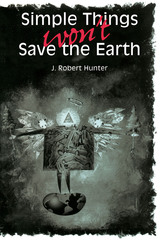 Simple Things Won't Save the Earth
By J. Robert Hunter
University of Texas Press, 1997 We drive cars with "Save the Whales" bumper stickers, buy aerosol sprays that advertise "no chlorofluorocarbons," and wear T-shirts made from organically grown cotton. All of these "earth friendly" choices and products convince us that we are "thinking globally, acting locally" and saving the planet. But are we really? In this provocative book, J. Robert Hunter asserts that using catchy slogans and symbols to sell the public on environmental conservation is ineffective, misleading, and even dangerous. Debunking the Fifty Simple Things You Can Do to Save the Earth approach, Hunter shows that there are no simple solutions to major environmental problems such as species extinction, ozone depletion, global warming, pollution, and non-renewable resource consumption. The use of slogans and symbols, Hunter argues, simply gives the public a false sense that "someone" is solving the environmental crisis—while it remains as serious now as when the environmental movement began. Writing in plain yet passionate prose for general readers, he here opens a national debate on what is really required to preserve the earth as a habitat for the human species.
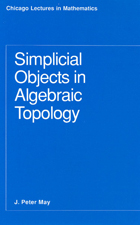 Simplicial Objects in Algebraic Topology
J. P. May
University of Chicago Press, 1967 Simplicial sets are discrete analogs of topological spaces. They have played a central role in algebraic topology ever since their introduction in the late 1940s, and they also play an important role in other areas such as geometric topology and algebraic geometry. On a formal level, the homotopy theory of simplicial sets is equivalent to the homotopy theory of topological spaces. In view of this equivalence, one can apply discrete, algebraic techniques to perform basic topological constructions. These techniques are particularly appropriate in the theory of localization and completion of topological spaces, which was developed in the early 1970s.
Since it was first published in 1967, Simplicial Objects in Algebraic Topology has been the standard reference for the theory of simplicial sets and their relationship to the homotopy theory of topological spaces. J. Peter May gives a lucid account of the basic homotopy theory of simplicial sets, together with the equivalence of homotopy theories alluded to above. The central theme is the simplicial approach to the theory of fibrations and bundles, and especially the algebraization of fibration and bundle theory in terms of "twisted Cartesian products." The Serre spectral sequence is described in terms of this algebraization. Other topics treated in detail include Eilenberg-MacLane complexes, Postnikov systems, simplicial groups, classifying complexes, simplicial Abelian groups, and acyclic models.
"Simplicial Objects in Algebraic Topology presents much of the elementary material of algebraic topology from the semi-simplicial viewpoint. It should prove very valuable to anyone wishing to learn semi-simplicial topology. [May] has included detailed proofs, and he has succeeded very well in the task of organizing a large body of previously scattered material."—Mathematical Review
Simplicissimus: The German Adventurer
Hans Jacob Christoffel von Grimmelhausen
University of Tennessee Press, 2009 John C. Osborne’s hitherto unpublished translation, Simplicissimus , The German Adventurer, by Hans Jacob Christoffel von Grimmelshausen, is now available to an English-speaking audience worldwide. A searing coming to terms with the Thirty Years’ War and the chaos that it drew in its wake, this early novel is arguably the most important German literary work of the seventeenth century.
 Simplicity and Complexity in Games of the Intellect
Lawrence Slobodkin
Harvard University Press, 1992 “If it were necessary, for some curious legal reason, to draw a clear line between human and nonhuman—for example, if a group of Australopithecines were to appear and one had to decide if they were to be protected by Fair Employment Laws or by the ASPCA—I would welcome them as humans if I knew that they were seriously concerned about how to bury their dead.” In this witty and wise way, Lawrence Slobodkin takes us on a spirited quest for the multiple meanings of simplicity in all facets of life.
Slobodkin begins at the beginning, with a consideration of how simplicity came into play in the development of religious doctrines. He nimbly moves on to the arts—where he ranges freely from dining to painting—and then focuses more sharply on the role of simplicity in science. Here we witness the historical beginnings of modern science as a search for the fewest number of terms, the smallest number of assumptions, or the lowest exponents, while still meeting criteria for descriptive accuracy. The result may be an elegant hypothetical system that generates the apparent world from less apparent assumptions, as with the Newtonian revolution; or it may mean deducing non-obvious processes from everyday facts, as with the Darwinian revolution.
Slobodkin proposes that the best intellectual work is done as if it were a game on a simplified playing field. He supplies serious arguments for considering the role of simplification and playfulness in all of our activities. The immediate effect of his unfailingly captivating essay is to throw open a new window on the world and to refresh our perspectives on matters of the heart and mind.
Simplified Chart of Parliamentary Motions
Jim Slaughter, Gaut Ragsdale, Jon Ericson
Southern Illinois University Press, 2012 Laminated card showing parliamentary motions, this handy reference is a companion to Notes and Comments on "Robert's Rules," fourth edition.
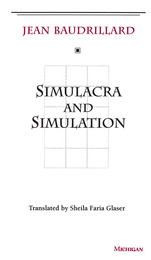 Simulacra and Simulation
Jean Baudrillard
University of Michigan Press, 1994 This foundational work in postmodern philosophy and cultural theory explores how contemporary society has replaced reality and meaning with symbols and signs, leading to a condition Baudrillard calls “hyperreality.” In his provocative treatise, Baudrillard examines the implications of a world where simulations (copies without originals) precede and shape what we consider real, blurring the boundary between reality and representation. Through analysis of mass media, consumer culture, and technological influence, he argues that modern life is dominated by "simulacra," images and concepts that no longer refer to any authentic reality but instead reference each other, creating an endless cycle of signification detached from truth. With references ranging from Disneyland to the news media, this book offers a challenging critique of how people in the late twentieth century and beyond perceive, construct, and interact with the world, underlining the instability of meaning in a media-saturated culture.
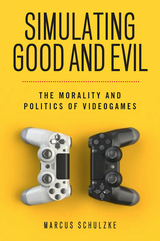 Simulating Good and Evil: The Morality and Politics of Videogames
Marcus Schulzke
Rutgers University Press, 2020 Simulating Good and Evil shows that the moral panic surrounding violent videogames is deeply misguided, and often politically motivated, but that games are nevertheless morally important. Simulated actions are morally defensible because they take place outside the real world and do not inflict real harms. Decades of research purporting to show that videogames are immoral has failed to produce convincing evidence of this. However, games are morally important because they simulate decisions that would have moral weight if they were set in the real world. Videogames should be seen as spaces in which players may experiment with moral reasoning strategies without taking any actions that would themselves be subject to moral evaluation. Some videogame content may be upsetting or offensive, but mere offense does not necessarily indicate a moral problem. Upsetting content is best understood by applying existing theories for evaluating political ideologies and offensive speech.
Simulation and Analysis of Circuits for Power Electronics
Muhammad H. Rashid
The Institution of Engineering and Technology, 2025 Power electronics play a vital role in many spheres, including integrating renewable energy, ensuring the reliability of complex power distribution systems, and in increasing efficiency of electric vehicles and industrial machines. Simulation of power electronic circuitry is thus a key and cost-effective means to detect and avoid problems during development of circuitry in power generation, distribution and use. This is true for both novel and established circuit designs.
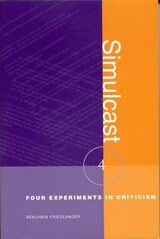 Simulcast: Four Experiments in Criticism
Benjamin Friedlander
University of Alabama Press, 2004 A provocative overview of avant-garde American poetry of the past 25 years that raises important questions about the practice of criticism
Simulcast offers long overdue, highly opinionated, and penetrating examinations of a flourishing movement in American letters by one of its most perceptive practitioners. The four “experiments” in literary criticism gathered in this volume vary in style and point of view. Taken together, they reassess the fundamental relationship between poetry and criticism.
“The Anti-Hegemony Project” is a satire, employing the rhetoric of journalism and the colloquial exchanges of online fan groups to analyze one of the earliest appearances of a poetry community on the World Wide Web: the “Poetics List” maintained at the State University of New York, Buffalo. “Poe’s Poetics and Selected Essays” is a collection of polemical essays on subjects ranging from modernism to language poetry. The third experiment, “The Literati of San Francisco,” is a detailed portrait of the figures and ideas at the heart of an important literary scene a decade after language poetry’s inception. The final essay, “A Short History of Language Poetry,” provides a less polemical, more sober and even-handed analysis of that movement from its origins to the present and its prospects for the future.
These critical interventions and essays are important studies of an evolving poetic field, but they also represent an evolution in criticism itself. Friedlander’s unorthodox methodology is to create a critical text by rewriting prior examples of criticism, among them Jean Wahl’s A Short History of Existentialism and Edgar Allan Poe’s "Literati of New York City." The resulting critiques are themselves a kind of poetry. They explore the issues of style versus substance, artifice versus authenticity, and plausibility versus truth, while the shifts in perspective call into question the authority of any one critical account.
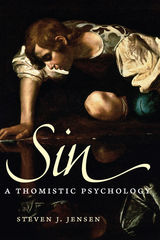 Sin: A Thomistic Psychology
Steven J. Jensen
Catholic University of America Press, 2018 If the human soul is made for good, then how do we choose evil? On the other hand, perhaps the human soul is not made for good. Perhaps the magnitude of human depravity reveals that the human soul may directly choose evil. Notably, Thomas Aquinas rejects this explanation for the prevalence of human sin. He insists that in all our desires we seek what is good. How, then, do we choose evil? Only by mistaking evil for good. This solution to the difficulty, however, leads Aquinas into another conundrum. How can we be held responsible for sins committed under a misunderstanding of the good? The sinner, it seems, has simply made an intellectual blunder. Sin has become an intellectual defect rather than a depravity of will and desire. Sin: A Thomistic Psychology grapples with these difficulties. A solution to the problem must address a host of issues. Does the ultimate good after which we all strive have unity, or is it simply a collection of basic goods? What is venial sin? What momentous choice must a child make in his first moral act? In what way do passion, a habitually evil will, and ignorance cause human beings to sin? What is the first cause of moral evil? Do human beings have free will to determine themselves to particular actions? The discussion of these topics focuses upon the interplay of reason, will, and the emotions, examining the inner workings of our moral deliberations. Ultimately, the book reveals how the failure to maintain balance in our deliberations subverts our fidelity to the one true good.
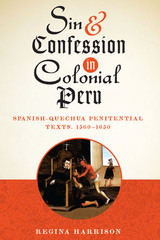 Sin and Confession in Colonial Peru: Spanish-Quechua Penitential Texts, 1560-1650
By Regina Harrison
University of Texas Press, 2014 A central tenet of Catholic religious practice, confession relies upon the use of language between the penitent and his or her confessor. In the sixteenth and seventeenth centuries, as Spain colonized the Quechua-speaking Andean world, the communication of religious beliefs and practices—especially the practice of confession—to the native population became a primary concern, and as a result, expansive bodies of Spanish ecclesiastic literature were translated into Quechua. In this fascinating study of the semantic changes evident in translations of Catholic catechisms, sermons, and manuals, Regina Harrison demonstrates how the translated texts often retained traces of ancient Andean modes of thought, despite the didactic lessons they contained. In Sin and Confession in Colonial Peru, Harrison draws directly from confession manuals to demonstrate how sin was newly defined in Quechua lexemes, how the role of women was circumscribed to fit Old World patterns, and how new monetized perspectives on labor and trade were taught to the subjugated indigenous peoples of the Andes by means of the Ten Commandments. Although outwardly confession appears to be an instrument of oppression, the reformer Bartolomé de Las Casas influenced priests working in the Andes; through their agency, confessional practice ultimately became a political weapon to compel Spanish restitution of Incan lands and wealth. Bringing together an unprecedented study (and translation) of Quechua religious texts with an expansive history of Andean and Spanish transculturation, Harrison uses the lens of confession to understand the vast and telling ways in which language changed at the intersection of culture and religion.
Sin and Salvation in Early Modern France: Three Women’s Stories
Marguerite d'Auge, Renée Burlamacchi, and Jeanne du Laurens
Iter Press, 2017 The texts available here in English for the first time open a window into the lives of three early modern Frenchwomen as they explore the common themes of family, memory, sin, and salvation. The Regrets of Marguerite d’Auge (1600), the Memoirs of Renée Burlamacchi (1623), and the Genealogy of Jeanne du Laurens (1631), taken from different genres of historical writings, raise important questions: Why and how did female authorship find its way into the historical record? How did these voices escape the censorship and prejudice against female publication? In a time of extreme religious conflict, how did these women convey their views on controversial issues such as primacy of grace, indulgences, and salvation without disrupting the gender expectations of the era?
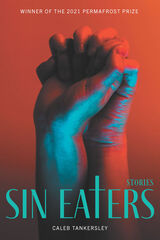 Sin Eaters: Stories
Caleb Tankersley
University of Alaska Press, 2022 Winner of the 2021 Permafrost Prize in fiction
Magical, heartfelt, and surprisingly funny, Sin Eaters paints a tumultuous picture of religion and repression while hinting at the love and connection that come with healing. The powerful stories in Caleb Tankersley’s debut collection illuminate the shadowy edges of the American Midwest, featuring aspects of religion, sex and desire, monsters and magic, and humor.
Tankersley’s characters—including swamp creatures looking for love, pothead pastors, ghosts obsessed with TV, and a Jesus made of rust—arrive at the crossroads of pleasure and hunger in a world that is equal parts playful, hopeful, and dark. In “Never Been More in Love” a man must come to terms with his wife’s degenerative illness. “Uncle Bob” explores suicide attempts as a family heirloom. And the titular story follows a woman who must accept her monstrous role to find redemption for herself and her small town.
Sin Eaters is a fight for authenticity in a world that is mysterious, muggy, and punctured by violence. This stunning collection full of complex themes will both challenge and delight.
Sin, Forgiveness, and Reconciliation: Christian and Muslim Perspectives
Lucinda Mosher and David Marshall, Editors
Georgetown University Press, 2016 Sin, Forgiveness, and Reconciliation: Christian and Muslim Perspectives is a collection of essays and scripture passages studied at the 2014 Building Bridges seminar. Thoughtful and provocative, the book begins with the complete texts of the opening lectures by Veli-Matti Kärkkäinen and Jonathan A. C. Brown and contains essays by Christoph Schwöbel, Ayman Shabana, Susan Eastman, Mohammad Hassan Khalil, Philip Sheldrake, and Asma Afsaruddin. Peppered throughout with relevant scripture passages and commentary, the text concludes with an extensive account of the informal conversations at the seminar that conveys the lively and respectful dialogue that is the hallmark of this meeting.
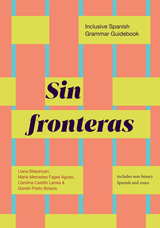 Sin fronteras: Inclusive Spanish Grammar Guidebook
Liana Stepanyan, María Mercedes Fages Agudo, Carolina Castillo Larrea, Goretti Prieto Botana
Amherst College Press, 2024 Sin fronteras: Inclusive Spanish Grammar Guidebook is the first ever Spanish language text to teach non-binary and gender-neutral language. It is an invaluable resource for intermediate and advanced learners that offers concise explanations and exercises for all major clausal structures, tenses, and moods. Along with including non-binary and gender-neutral language, the volume also incorporates the voseo, or the use of vos as a second-person singular pronoun that is common in many Latin American countries. This book expands the scope of traditional grammar instruction by including reading, writing, discussion, and independent research tasks that support the development of the competencies necessary to thrive in an increasingly interconnected and diverse world. Sin fronteras is suitable for independent study or for supplemental use in conversation classes, classes for heritage speakers, classes with a focus on the professions (e.g., medical Spanish, Spanish for business), and literature classes.
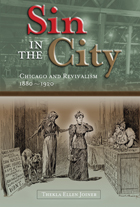 Sin in the City: Chicago and Revivalism, 1880-1920
Thekla Ellen Joiner
University of Missouri Press, 2013 Long before today’s culture wars, the “Third Great Awakening” rocked America. During the late nineteenth and early twentieth centuries, evangelists such as Dwight L. Moody and Billy Sunday roused citizens to renounce sin as it manifested in popular culture, moral ambiguity, and the changing role of women. Sin in the City examines three urban revivals in turn-of-the-century Chicago to show how revivalists negotiated that era’s perceived racial, sexual, and class threats. While most studies of this movement have focused on its male leaders and their interactions with society, Thekla Ellen Joiner raises new questions about gender and race by exploring Third Awakening revivalism as the ritualized performance of an evangelical social system defined by middle-class Protestant moral aspirations for urban America. Rather than approaching these events merely as the achievements of persuasive men, she views them as choreographed collective rituals reinforcing a moral order defined by ideals of femininity, masculinity, and racial purity. Joiner reveals how revivalist rhetoric and ritual shifted from sentimentalist identification of sin with males to a more hard-nosed focus on females, castigating “loose women” whose economic and sexual independence defied revivalist ideals and its civic culture. She focuses on Dwight L. Moody’s 1893 World’s Fair revival, the 1910 Chapman-Alexander campaign, and the 1918 Billy Sunday revival, comparing the locations, organization, messages, and leaders of these three events to depict the shift from masculinized to feminized sin. She identifies the central role women played in the Third Awakening as the revivalists promoted feminine virtue as the corrective to America’s urban decline. She also shows that even as its definition of sin became more feminized, Billy Sunday’s revivalism began to conform to Chicago’s emerging color line. Enraged by rapid social change in cities like Chicago, these preachers spurred Protestant evangelicals to formulate a gendered and racialized moral regime for urban America. Yet, as Joiner shows, even as revivalists demonized new forms of entertainment, they used many of the modern cultural practices popularized in theaters and nickelodeons to boost the success of their mass conversions. Sin in the City shows that the legacy of the Third Awakening lives on today in the religious right’s sociopolitical activism; crusade for family values; disparagement of feminism; and promotion of spirituality in middle-class, racial, and cultural terms. Providing cultural and gender analysis too often lacking in the study of American religious history, it offers a new model for understanding the development of a gendered theology and set of religious practices that influenced Protestantism in a period of enormous social change.
Sin in the Sixties
Maria C. Morrow
Catholic University of America Press, 2016 Confession reached its peak attendance in the early 1950s, but by the end of the Second Vatican Council, the popularity of the sacrament plummeted. While this decline is often noted by historians, theologians, priests, and laity alike - all eager to provide possible explanations - little attention has been paid to another dramatic shift. Coincident with the decreasing popularity of the sacrament of penance in the United States were changes to non-sacramental penitential practices, including Lenten fasting, Ember Days, and the year-round Friday meat abstinence. American Catholics - sometimes derisively called Fisheaters - had assiduously observed Friday abstinence, regardless of ethnicity or geographic location.
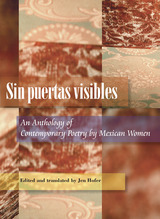 Sin Puertas Visibles: An Anthology Of Contemporary Poetry By Mexican Women
Jen Hofer
University of Pittsburgh Press, 2003 Sin puertas visibles is a fully bilingual anthology that features emerging women poets whose work provides a taste of the adventurous new spirit infusing Mexican literature. All eleven poets represented have had at least one book published in Mexico, yet none of their work has been translated into English until now.
Featuring the work of: Cristina Rivera-Garza, Carla Faesler, Angélica Tornero, Ana Belén López, Silvia Eugenia Castillero, Mónica Nepote, Dana Gelinas, María Rivera, Ofelia Pérez Sepúlveda, Dorantes, and Laura Solózano.
Mexico poesses one of Latin America's most important poetic traditions, but its depth and range are virtually unknown to readers north of the border. Reflecting the diversity and complexity f contemporary mexican poetry, the poems presented here are by turns meditative and explosive, sensuous and inventive, ironic and tender--in short, they are subversive, provocative, and bold.
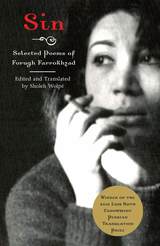 Sin: Selected Poems of Forugh Farrokhzad
Sholeh Wolpe
University of Arkansas Press, 2010 For the first time, the work of Iranian poet Forugh Farrokhzad is being brought to English-speaking readers through the perspective of a translator who is a poet in her own right, fluent in both Persian and English and intimately familiar with each culture. Sin includes the entirety of Farrokhzad's last book, numerous selections from her fourth and most enduring book, Reborn, and selections from her earlier work and creates a collection that is true to the meaning, the intention, and the music of the original poems. Farrokhzad was the most significant female Iranian poet of the twentieth century, as revolutionary as Russia's Akhmatova and Tsvetaeva and America's Plath and Sexton. She wrote with a sensuality and burgeoning political consciousness that pressed against the boundaries of what could be expressed by a woman in 1950s and 1960s Iran. She paid a high price for her art, shouldering the disapproval of society and her family, having her only child taken away, and spending time in mental institutions. Farrokhzad died in a car accident in 1967 at the age of thirty-two. Sin is a tribute to the work and life of this remarkable poet.
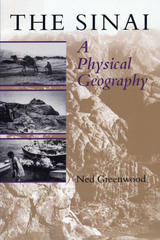 The Sinai: A Physical Geography
By Ned Greenwood
University of Texas Press, 1997 One of the world's oldest crossroads, the Sinai joins the great continental land masses of Africa and Eurasia. Its physical geography of rugged mountain peaks, desert plains, and sea coasts was formed by the collision of the two continental plates, while the human tides that have swept across the region over millennia have left an intricate web of cultures and ethnicities. In this book, Ned Greenwood offers a complete, up-to-date physical geography of Sinai. After an introductory chapter that situates Sinai within world history and geography, he focuses in detail on the following areas: plate tectonics and geology, geomorphology and drainage, weather and climate, soils, and biogeography. In the concluding chapter, Greenwood considers the human geography of Sinai, including the pressures currently posed by population growth, political extremism, and environmental constrictions on development. He offers a fully rounded picture of the physical environment of Sinai that will be vital reading for everyone concerned about the future of this strategic yet fragile land.
 Since Sunday
Brittany Tomaselli
Omnidawn, 2019 What happens when the faith and community we once held close sours into an experience of tragedy? In Since Sunday, we find a poet who is rebuilding a sense of faith after fleeing religious abuse. Doubt, shame, uncertainty, and the pains of loss create the ground from which these poems grow. After severance from her religion, established values, and sense of direction, Tomaselli embarks on recovery as an active and intentional pursuit. The poems reveal a resilience that must be lived as a daily effort to cope with trauma and to root oneself in the present.
Through wit, vulnerability, and rich lyrical language, Tomaselli invites us to walk with her through loss and on to a persistent process of discovery. The poems chronicle a cultivation of awe, unearthing a fresh faith rooted in the present realness of everyday experiences. Stripped of the orthodoxy that both grew and crushed her, she reconstructs a new core of trust for herself. Here we learn with the poet to seek celebration in daily life and to foster a sense of beauty from the mundane.
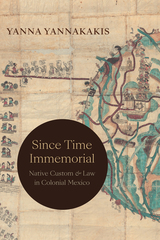 Since Time Immemorial: Native Custom and Law in Colonial Mexico
Yanna Yannakakis
Duke University Press, 2023 In Since Time Immemorial Yanna Yannakakis traces the invention of Native custom, a legal category that Indigenous litigants used in disputes over marriage, self-governance, land, and labor in colonial Mexico. She outlines how, in the hands of Native litigants, the European category of custom—social practice that through time takes on the normative power of law—acquired local meaning and changed over time. Yannakakis analyzes sources ranging from missionary and Inquisition records to Native pictorial histories, royal surveys, and Spanish and Native-language court and notarial documents. By encompassing historical actors who have been traditionally marginalized from legal histories and highlighting spaces outside the courts like Native communities, parishes, and missionary schools, she shows how imperial legal orders were not just imposed from above but also built on the ground through translation and implementation of legal concepts and procedures. Yannakakis argues that, ultimately, Indigenous claims to custom, which on the surface aimed to conserve the past, provided a means to contend with historical change and produce new rights for the future.
 Since When Is Fran Drescher Jewish?: Dubbing Stereotypes in The Nanny, The Simpsons, and The Sopranos
By Chiara Francesca Ferrari
University of Texas Press, 2010 "Since when is Fran Drescher Jewish?" This was Chiara Francesca Ferrari's reaction when she learned that Drescher's character on the television sitcom The Nanny was meant to be a portrayal of a stereotypical Jewish-American princess. Ferrari had only seen the Italian version of the show, in which the protagonist was dubbed into an exotic, eccentric Italian-American nanny. Since When Is Fran Drescher Jewish? explores this "ventriloquism" as not only a textual and cultural transfer between languages but also as an industrial practice that helps the media industry foster identification among varying audiences around the globe. At the heart of this study is an in-depth exploration of three shows that moved from global to local, mapping stereotypes from both sides of the Atlantic in the process. Presented in Italy, for example, Groundskeeper Willie from The Simpsons is no longer a belligerent, alcoholic Scotsman but instead easily becomes a primitive figure from Sardinia. Ironically, The Sopranos—a show built around Italian-Americans—was carefully re-positioned by Italian TV executives, who erased the word "mafia" and all regional references to Sicily. The result of Ferrari's three case studies is evidence that "otherness" transcends translation, as the stereotypes produced by the American entertainment industry are simply replaced by other stereotypes in foreign markets. As American television studios continue to attempt to increase earnings by licensing their shows abroad, Since When Is Fran Drescher Jewish? illuminates the significant issues of identity raised by this ever-growing marketplace, along with the intriguing messages that lie in the larger realm of audiovisual cultural exchange.
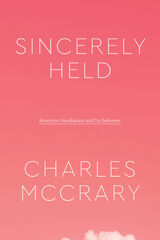 Sincerely Held: American Secularism and Its Believers
Charles McCrary
University of Chicago Press, 2022 A novel account of the relationship between sincerity, religious freedom, and the secular in the United States.
“Sincerely held religious belief” is now a common phrase in discussions of American religious freedom, from opinions handed down by the US Supreme Court to local controversies. The “sincerity test” of religious belief has become a cornerstone of US jurisprudence, framing what counts as legitimate grounds for First Amendment claims in the eyes of the law. In Sincerely Held, Charles McCrary provides an original account of how sincerely held religious belief became the primary standard for determining what legally counts as authentic religion.
McCrary skillfully traces the interlocking histories of American sincerity, religion, and secularism starting in the mid-nineteenth century. He analyzes a diverse archive, including Herman Melville’s novel The Confidence-Man, vice-suppressing police, Spiritualist women accused of being fortune-tellers, eclectic conscientious objectors, secularization theorists, Black revolutionaries, and anti-LGBTQ litigants. Across this history, McCrary reveals how sincerity and sincerely held religious belief developed as technologies of secular governance, determining what does and doesn’t entitle a person to receive protections from the state.
This fresh analysis of secularism in the United States invites further reflection on the role of sincerity in public life and religious studies scholarship, asking why sincerity has come to matter so much in a supposedly “post-truth” era.
 Sincerity and Authenticity
Lionel Trilling
Harvard University Press, 1972 “A powerful diagram of the moral life from Shakespeare to the present...a book crowded with insights.”—Geoffrey Hartman, New York Times
One of the twentieth century’s foremost literary critics traces the idea of the self across five hundred years of Western cultural history.
“One cannot both be sincere and seem so,” André Gide once wrote. Attempting to inhabit sincerity to satisfy social expectations makes it into a posture or a persona—a self-defeating enterprise. What, then, does the oft-repeated injunction to “be yourself” really mean?
In his 1969–1970 Norton Lectures, Lionel Trilling argues that this simple piece of advice has been the source of centuries of moral perplexity. In Elizabethan England, being true to oneself was seen as a means to an end. “To thine own self be true,” Polonius famously advised Laertes in Hamlet, “And it must follow, as the night the day / Thou canst not then be false to any man.” But this vision of the “honest soul,” whose pursuit of self-knowledge brings harmony with external society, gradually collapsed under the weight of modern literature and philosophy. Drawing a line from Rousseau, Robespierre, and Jane Austen through Hegel, Freud, and Joseph Conrad, Trilling brilliantly shows how sincerity was displaced by the more strenuous ideal of authenticity, in which genuine selfhood became a product of alienation and negation, a ceaseless purge of both social artifice and self-deception. In his final lectures, he presciently notes the rising embrace of deliberate inauthenticity, a development that rapidly accelerated after his death.
Moving fluidly between philosophy, literature, cultural history, and psychoanalysis, Sincerity and Authenticity is a bravura performance, unraveling our labors of self-definition with the wit and effortless sophistication that made Trilling a foremost literary critic of the twentieth century.
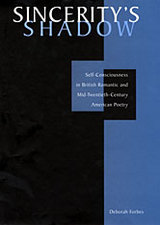 Sincerity’s Shadow: Self-Consciousness in British Romantic and Mid-Twentieth-Century American Poetry
Deborah Forbes
Harvard University Press, 2004 In a work of surprising range and authority, Deborah Forbes refocuses critical discussion of both Romantic and modern poetry. Sincerity's Shadow is a versatile conceptual toolkit for reading poetry.
Ever since Wordsworth redefined poetry as "the spontaneous overflow of powerful feelings," poets in English have sought to represent a "sincere" self-consciousness through their work. Forbes's generative insight is that this project can only succeed by staging its own failures. Self-representation never achieves final sincerity, but rather produces an array of "sincerity effects" that give form to poetry's exploration of self. In essays comparing poets as seemingly different in context and temperament as Wordsworth and Adrienne Rich, Lord Byron and Anne Sexton, John Keats and Elizabeth Bishop, Forbes reveals unexpected convergences of poetic strategy. A lively and convincing dialectic is sustained through detailed readings of individual poems. By preserving the possible claims of sincerity longer than postmodern criticism has tended to, while understanding sincerity in the strictest sense possible, Forbes establishes a new vantage on the purposes of poetry.
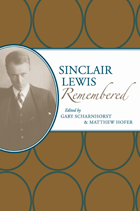 Sinclair Lewis Remembered
Gary Scharnhorst
University of Alabama Press, 2012 Sinclair Lewis Remembered is a collection of reminiscences and memoirs by contemporaries, friends, and associates of Lewis that offers a revealing and intimate portrait of this complex and significant Nobel Prize–winning American writer. After a troubled career as a student at Yale, Sinclair Lewis turned to literature as his livelihood, publishing numerous works of popular fiction that went unnoticed by critics. With the 1920s, however, came Main Street, Lewis’s first critical success, which was soon followed by Babbitt, Arrowsmith, Elmer Gantry, and Dodsworth—five of the most influential social novels in the history of American letters, all written within one decade. Nevertheless, Lewis’s Nobel Prize for Literature in 1930 led to controversy. Writers such as Theodore Dreiser, William Faulkner, and Thomas Mann expressed their dissent with the decision. Unable to match his previous success, Lewis suffered from alcoholism, alienated colleagues, and embraced unpopular political positions. The nadir for Lewis’s literary reputation was Mark Schorer’s 1961 biography, Sinclair Lewis: An American Life, which helped to legitimize the dismissal of Lewis’s entire body of work. Recent scholarly research has seen a resurgence of interest in Lewis and his writings. The multiple and varied perspectives found in Sinclair Lewis Remembered, edited by Gary Scharnhorst and Matthew Hofer, illustrate uncompromised glimpses of a complicated writer who should not be forgotten. The more than 115 contributions to this volume include reminiscences by Upton Sinclair, Edna Ferber, Alfred Harcourt, Samuel Putnam, H. L. Mencken, John Hersey, Hallie Flanagan, and many others.
 Sindbad the Sailor and Other Stories from the Arabian Nights
Laurence Housman
Bodleian Library Publishing, 2018 The much-loved tales from The Thousand and One Nights first appeared in English translation in the early nineteenth century, based on French translations of versions of the stories found in Syrian and Persian manuscripts. The popularity of these ancient and beguiling tales set against the backdrop of Baghdad, a city of wealth and peace, stoked the widespread enthusiasm for and scholarly interest in eastern arts and culture all across Europe.
Four of the most well-known tales, translated by Laurence Housman, are reproduced in this collector’s edition: “Sindbad the Sailor,” “Aladdin and his Wonderful Lamp,” “The Story of the Three Calendars” and “The Sleeper Awakened.” Each is illustrated with exquisite watercolors by the renowned artist Edmund Dulac. The sumptuous illustrations reproduced here capture the beauty and timeless quality of these ever-fascinating stories, made at the zenith of early twentieth-century book illustration.
 Sine Ni Lav Diaz: A Long Take on the Filipino Auteur
Edited by Parichay Patra and Michael Kho Lim
Intellect Books, 2021 A holistic consideration of the works of celebrated Filipino filmmaker Lav Diaz.
This original collection considers Lav Diaz and his works without being confined to a specific approach or research method. On the contrary, it touches on nearly every major contemporary academic approach to cinema. Though Diaz’s contributions to slow and durational cinema are well known and his importance in contemporary world cinema is beyond doubt, the director remains largely unexplored in cinema studies. The book addresses this research gap, situating Diaz at the crucial juncture of new auteurism, Filipino New Wave, and transnational cinema, but it does not neglect the industrial-exhibitional coordinates of his cinema.
The first book-length study on the groundbreaking auteur, the collection takes a critical look at his career and corpus from various perspectives, with contributions from cinema studies researchers, film critics, festival programmers, and artists. It offers a nuanced overview of the filmmaker and the cinematic traditions he belongs to for film enthusiasts, researchers, and general readers alike.
The Sinews of Power: War, Money and the English State, 1688–1783
John Brewer
Harvard University Press, 1990 This powerful interpretation of English history provides a completely new framework for understanding how Britain emerged in the eighteenth century as a major international power.
John Brewer’s brilliant analysis makes clear that the drastic increase in Britain's military involvement (and success) in Europe and the expansion of her commercial and imperial interests would not have happened without a concurrent radical increase in taxation, along with a surge in deficit financing and the growth of a substantial public administration. Warfare and taxes reshaped the English economy, and at the heart of these dramatic changes lay an issue that is still very much with us today: the tension between a nation's aspirations to be a major power and fear of the domestic consequences of such an ambition—namely, the loss of liberty.
 Sinfonie giovanili
Gioachino Rossini
University of Chicago Press, 1998 The four overtures in this volume display Rossini's extraordinary talent at the threshold of his career. Composed before his eighteenth birthday, they show him developing orchestral skills that served him throughout his life. The Sinfonia del Conventello and the Sinfonia obbligata a contrabbasso were written for performance at "Il Conventello," the estate of his patron Agostino Triossi, and feature the cello and double bass. The Sinfonia in D and the Sinfonia in E-flat were composed at the Liceo Filarmonico in Bologna, where Rossini was a student from 1806 to 1809. Their public performances showed them to be much more than classroom exercises, and Rossini later reworked the E-flat overture for his opera La cambiale di matrimonio.
None of these overtures survives in Rossini's hand. (In his late years, Rossini confided that he had left a number of "little things" with Triossi, who had probably used them "to wrap salami.") The critical edition has recovered the first two from recently identified manuscript copies, the others from incomplete sets of parts.
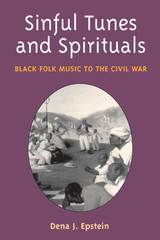 Sinful Tunes and Spirituals: Black Folk Music to the Civil War
Dena J. Epstein
University of Illinois Press, 1981 From the plaintive tunes of woe sung by exiled kings and queens of Africa to the spirited worksongs and "shouts" of freedmen, enslaved people created expansive forms of music from the United States to the West Indies and South America. Dena J. Epstein's classic work traces the course of early black folk music in all its guises. Anchored by groundbreaking scholarship, it redefined the study of black music in the slavery era by presenting the little-known development of black folk music in the United States. Her findings include the use of drums, the banjo, and other instruments originating in Africa; a wealth of eyewitness accounts and illustrations; in-depth look at a wide range of topics; and a collection of musical examples. This edition offers an author's preface that looks back on the twenty-five years of changes in scholarship that followed the book's original publication
 Sing a Sad Song: The Life of Hank Williams
Roger M. Williams
University of Illinois Press, 1981 Few American entertainers have had the explosive impact, wide-ranging appeal, and continuing popularity of country music superstar Hank Williams. Such Williams standards as "Your Cheatin' Heart," "I'm So Lonesome I Could Cry," "Jambalaya," and "I Saw the Light" have entered the pantheon of great American song while Williams's very name remains synonymous with the genre he helped define. Sing a Sad Songs tells the story of Hank Williams's rise from impoverished Alabama roots, his coming of age during and after World War II, his meteoric climb to national acclaim and star status on the Grand Ole Opry, his star-crossed marriages and recurring health problems, the chronic bouts with alcoholism and the alienation it caused in those he loved and sang for, and finally his tragic death at twenty-nine and subsequent emergence as a folk hero. In addition, the book includes an essential discography compiled by Bob Pinson of the Country Music Foundation.
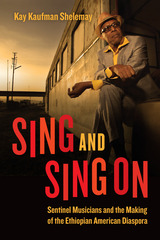 Sing and Sing On: Sentinel Musicians and the Making of the Ethiopian American Diaspora
Kay Kaufman Shelemay
University of Chicago Press, 2022 A sweeping history of Ethiopian musicians during and following the 1974 Ethiopian revolution.
Sing and Sing On is the first study of the forced migration of musicians out of the Horn of Africa dating from the 1974 Ethiopian revolution, a political event that overthrew one of the world’s oldest monarchies and installed a brutal military regime. Musicians were among the first to depart the region, their lives shattered by revolutionary violence, curfews, and civil war. Reconstructing the memories of forced migration, Sing and Sing On traces the challenges musicians faced amidst revolutionary violence and the critical role they played in building communities abroad.
Drawing on the recollections of dozens of musicians, Sing and Sing On details personal, cultural, and economic hardships experienced by musicians who have resettled in new locales abroad. Kay Kaufman Shelemay highlights their many artistic and social initiatives and the ways they have offered inspiration and leadership within and beyond a rapidly growing Ethiopian American diaspora. While musicians held this role as sentinels in Ethiopian culture long before the revolution began, it has taken on new meanings and contours in the Ethiopian diaspora. The book details the ongoing creativity of these musicians while exploring the attraction of return to their Ethiopian homeland over the course of decades abroad. Ultimately, Shelemay shows that musicians are uniquely positioned to serve this sentinel role as both guardians and challengers of cultural heritage.
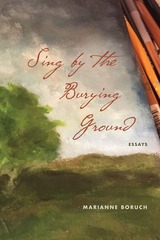 Sing by the Burying Ground: Essays
Marianne Boruch
Northwestern University Press, 2024 Meditations on life, literature, and curiosity amid the shadows
In her fourth essay collection, award-winning author Marianne Boruch explores the possibilities of hope even in darkness. Through poetry, the silence of Trappist monks, the pandemic moment, the Wright brothers’ quirky stab at flight, treasured knickknacks, and more, this book celebrates the weird, the mundane, the overlooked, and the promise of a future. Though each essay is distinct, foraging fresh ways into Louise Glück, W. H. Auden, Elizabeth Bishop, Robert Frost, Marianne Moore, Sylvia Plath, John Berryman, Langston Hughes, and more, they are all connected through the thread of Emily Dickinson’s comment that her fate was to “sing, as a Boy does by the Burying Ground . . .” Even in times filled with horror, we find beauty. Maybe we can sing in the blackest of nights.
Thoughtful and expressive, this collection provides solace and humor for readers in a world where both are often in short supply.
 Sing, I: A Novel
Ethel Rohan
Northwestern University Press, 2024 One woman's path to rediscovering herself through music, romance, and a little vigilantism
Inside Half Moon Bay, a sparkling California coastal town, Ester Prynn is dulled and diminished by struggles with work, money, marriage, her senile father, a troubled teenage son, and old guilt she can’t assuage. When a masked gunman robs the convenience store where Ester works, he upends her fraught life and propels her toward passions buried, like singing; desires discovered, like a same-sex infatuation; and wrongs righted, like bringing the violent assailant to justice. But as the armed robber commits new crimes and continues to evade capture, the trauma from the holdup climbs, threatening Ester’s newfound delights and longings and forcing her to contend with her burning regrets and what-ifs. In the reckoning between Ester and these growing, molten upsets, she’s faced with enormous choices and must determine what and who can bring her to her best life.
"Sing Out, Warning! Sing Out, Love!": The Writings of Lee Hays
Robert S. Koppelman
University of Massachusetts Press, 2009 Lee Hays (1914-1981) was the bass singer of the popular folk singing quartet, The Weavers, and a talented writer of prose. Robert S. Koppelman has brought together a selection of Hays' literary output which places the author and his work in a historical context.
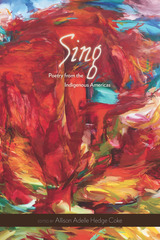 Sing: Poetry from the Indigenous Americas
Edited by Allison Adelle Hedge Coke
University of Arizona Press, 2011 Editor and poet Allison Adelle Hedge Coke assembles this multilingual collection of Indigenous American poetry, joining voices old and new in songs of witness and reclamation. Unprecedented in scope, Sing gathers more than eighty poets from across the Americas, covering territory that stretches from Alaska to Chile, and features familiar names like Sherwin Bitsui, Louise Erdrich, Joy Harjo, Lee Maracle, and Simon Ortiz alongside international poets—both emerging and acclaimed—from regions underrepresented in anthologies.
They write from disparate zones and parallel experience, from lands of mounded earthwork long-since paved, from lands of ancient ball courts and the first great cities on the continents, from places of cold, from places of volcanic loam, from zones of erased history and ongoing armed conflict, where “postcolonial” is not an academic concept but a lived reality. As befits a volume of such geographical inclusivity, many poems here appear in multiple languages, translated by fellow poets and writers like Juan Felipe Herrera and Cristina Eisenberg.
Hedge Coke’s thematic organization of the poems gives them an added resonance and continuity, and readers will appreciate the story of the genesis of this project related in Hedge Coke’s deeply felt introduction, which details her experiences as an invited performer at several international poetry festivals. Sing is a journey compelled by the exploration of kinship and the desire for songs that open “pathways of return.”
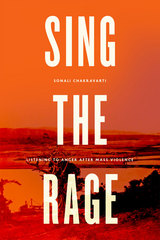 Sing the Rage: Listening to Anger after Mass Violence
Sonali Chakravarti
University of Chicago Press, 2014 What is the relationship between anger and justice, especially when so much of our moral education has taught us to value the impartial spectator, the cold distance of reason? In Sing the Rage, Sonali Chakravarti wrestles with this question through a careful look at the emotionally charged South African Truth and Reconciliation Commission, which from 1996 to 1998 saw, day after day, individuals taking the stand to speak—to cry, scream, and wail—about the atrocities of apartheid. Uncomfortable and surprising, these public emotional displays, she argues, proved to be of immense value, vital to the success of transitional justice and future political possibilities.
Chakravarti takes up the issue from Adam Smith and Hannah Arendt, who famously understood both the dangers of anger in politics and the costs of its exclusion. Building on their perspectives, she argues that the expression and reception of anger reveal truths otherwise unavailable to us about the emerging political order, the obstacles to full civic participation, and indeed the limits—the frontiers—of political life altogether. Most important, anger and the development of skills needed to truly listen to it foster trust among citizens and recognition of shared dignity and worth. An urgent work of political philosophy in an era of continued revolution, Sing the Rage offers a clear understanding of one of our most volatile—and important—political responses.
Sing Them Over Again to Me: Hymns and Hymnbooks in America
Edited by Mark A. Noll and Edith L. Blumhofer
University of Alabama Press, 2006 Hymns and hymnbooks as American historical and cultural icons. This work is a study of the importance of Protestant hymns in defining America and American religion. It explores the underappreciated influence of hymns in shaping many spheres of personal and corporate life as well as the value of hymns for studying religious life. Distinguishing features of this volume are studies of the most popular hymns (“Amazing Grace,” “O, For a Thousand Tongues to Sing,” “All Hail the Power of Jesus’ Name”), with attention to the ability of such hymns to reveal, as they are altered and adapted, shifts in American popular religion. The book also focuses attention on the role hymns play in changing attitudes about race, class, gender, economic life, politics, and society.
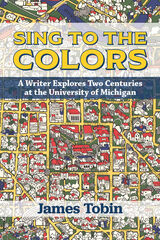 Sing to the Colors: A Writer Explores Two Centuries at the University of Michigan
James Tobin
University of Michigan Press, 2021 In Sing to the Colors, award-winning author James Tobin considers ideas of place, tradition, legacy, and pride while investigating two centuries of history at his alma mater, the University of Michigan. The book’s 23 essays capture a series of moments—some well-known and celebrated, others inconspicuous or even troubling—that have contributed to the ongoing evolution of the University. Readers travel back to bitter battles fought over the vision for the University in its early years and learn how the Diag and other campus landmarks came to be. Other chapters consider milestones on the University’s continuing journey toward greater inclusivity such as the 1970 Black Action Movement strike and the enrollment of Michigan’s first female students in the 1870s. Still others illuminate the complex relationship between the University and the city of Ann Arbor, revisiting former mainstays like the Pretzel Bell and Drake’s Sandwich Shop. Alongside these stories, Tobin grapples with his own understanding of and connection to Michigan’s history, which—whatever its imperfections and errors—has shaped the lives of thousands of alumni around the world. This is a book for readers who not only cherish the University of Michigan but who also want to better understand the long work of the many generations who envisioned and built and sustained the place.
Singapore in Global History
Edited by Derek Heng and Syed Muhd Khairudin Aljunied
Amsterdam University Press, 2011
Singapore in Global History explores Singapore’s past and present through the lens of global history. It analyses Singapore as a city-state and adds an interdisciplinary perspective to the study of its growth. The studies presented here demonstrate that Singapore’s history and growth have implications that extend to Southeast Asia and the world. This book will be of interest to economists, sociologists and political scientists, as well as those interested in imperial history, business history, and networks.
The Singapore River: A Social History, 1819-2002
Stephen Dobbs
National University of Singapore Press, 2013 For most of its modern history, to speak of Singapore was to speak of the Singapore River, physical centre of the city and site of the greater part of the colony's entrepôt trade. The river has been transformed over the last 25 years from a polluted indus
Singaporean Creatures: Histories of Humans and Other Animals in the Garden City
Edited by Timothy Barnard
National University of Singapore Press, 2024 An analysis of the human-animal relationship in post-colonial Singapore.
Modern Singapore is the Garden City, a biophilic urban space that includes a variety of animals, from mosquitoes to humans, even polar bears. Singaporean Creatures brings together historians to contemplate this human-animal relationship and how it has shaped society—socially, economically, politically, and environmentally. It is a work of historical and ecological analysis, in which various institutions, perspectives, and events involving animals provide insight into how the larger society has been formed and developed over the last half-century. The interaction of all Singaporean creatures thus provides a lens through which we can understand the creation of a modern and urban nation-state, shaped by the forces of the Anthropocene.
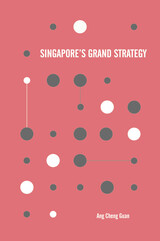 Singapore's Grand Strategy
Cheng Guan Ang
National University of Singapore Press, 2023 New insight into the defense history of Singapore.
Even small states can have grand strategies. Singapore, despite its poor natural resource endowment, small population, and size, has often been described as punching above its weight in international affairs. Part of this stems from the way Singapore strategically integrates the different diplomatic, political, and defense-oriented tools at its disposal. To explore this, Singapore’s Grand Strategy offers a fresh and useful diplomatic, defense, and security history of Singapore, from its independence in 1965 through today’s period of strategic realignment.
Most previous studies of grand strategy have focused on super- or at least middle powers, but this book presents an important contribution to international relations and strategic studies by showing how the concept can help explain the strategic posture and achievements of small states as well. Moreover, he brings a historian's perspective to a subject usually tackled by political scientists. The result will be useful and important for scholars in these fields.
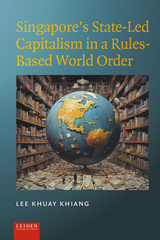 Singapore’s State-Led Capitalism in a Rules-Based World Order
Lee Khuay Khiang
Leiden University Press, 2025 At the heart of Singapore’s political economy is the PAP government, which controls the levers of control. The accumulation of power occurs through a recurring pattern of state collectivisation and economic liberalisation, while the nation’s wealth expands through state investment vehicles adapting to shifts in geopolitics and trends in international trade and finance. Overshadowing the bicameral capitalistic system is the corridor of power, where ideas are developed to drive growth and prosperity in order to maintain an iron grip on the populace. As bureaucrats and ministers coordinate to rebalance economic reforms with state control by binding state collectivisation and financialisation, citizens are caught in the paradox of economic liberalisation and authoritarianism. This book examines how Singaporean leaders embrace change—by meticulously balancing control and freedom, prosperity and dominance—to stay in power.
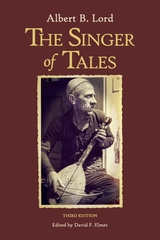 The Singer of Tales: Third Edition
Albert B. Lord
Harvard University Press First published in 1960, Albert B. Lord’s The Singer of Tales remains the fundamental study of the distinctive techniques and aesthetics of oral epic poetry. Based upon pathbreaking fieldwork conducted in the 1930s and 1950s among oral epic singers of Bosnia, Croatia, and Serbia, Lord analyzes in impressive detail the techniques of oral composition in performance. He explores the consequences of this analysis for the interpretation of numerous works of traditional verbal art, including—in addition to South Slavic epic songs—the Homeric Iliad and Odyssey, Beowulf, the Chanson de Roland, and the Byzantine epic Digenis Akritas. A cardinal text for the study of oral traditions, The Singer of Tales also represents an exemplary use of the comparative method in literary criticism.
This third edition offers a corrected text of the second edition and is supplemented by an open-access website (in lieu of the second edition’s CD-ROM), providing all the recordings discussed by Lord, as well as a variety of other multimedia materials.
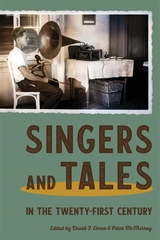 Singers and Tales in the Twenty-First Century
David F. Elmer
Harvard University Press Grounded in the intellectual legacies of two pioneering scholars of oral literature, Milman Parry (1902–1935) and Albert Lord (1912–1991), Singers and Tales in the Twenty-First Century gathers reflections on what the study of oral poetry might mean today across diverse poetic traditions, especially in light of ongoing global transformations that have dramatically reshaped and destabilized the very notion of tradition. This collection of essays spans disciplinary perspectives from Classics and comparative literature to musicology and anthropology. Oral traditions from ancient Greece and modern southeastern Europe, on which Parry and Lord focused, remain central in the present volume, but the book also offers important perspectives from regions beyond Europe, especially across Asia.
The title’s “singers and tales”—both in the plural, as opposed to an individual “singer of tales”—signals interest both in the polyphony of oral traditions and in the proliferation of methodologies and objects of study inspired by the work of Parry and Lord. Their notion of what has become known as the Oral-Formulaic Theory remains a necessary starting point—but only a starting point—for research on a whole range of verbal and musical arts.
 Singers Die Twice: A Journey to the Land of Dhrupad
Peter Pannke
Seagull Books, 2013 Singers Die Twice: A Journey to the Land of Dhrupad tells the story of Peter Pannke’s life in music, his travels from Cologne to Varanasi, from Delhi to the forests of Vrindavan, from Darbhanga back to Berlin, of how he studied in the gharana of the famous Mallik family and became Germany’s best-known exponent of Indian classical music. His richly woven tale takes readers from the beginning of the gharana in the 1700s, through the last splendid days of the maharaja of Darbhanga and other proud patrons who inspired Satyajit Ray’s 1957 classic film The Music Room, to the Maha Kumbh Mela that opened the twenty-first century. Along the way, we meet colourful characters whose names are still known to every devotee of dhrupad: the grand old Pandit Ram Chatur Mallik, the pious and inspiring Pandit Vidur Mallik, Pannke himself, a master of the sarangi, and the humbler musicians and travelling players who bring music of all kinds to the fields of Bihar, across India and beyond. Singers Die Twice is the inspiring story of a master musician in the world that he loves.
The Singer's Needle: An Undisciplined History of Panamá
Ezer Vierba
University of Chicago Press, 2021 The Singer’s Needle offers a bold new approach to the history of twentieth-century Panamá, one that illuminates the nature of power and politics in a small and complex nation. Using novelistic techniques, Vierba explores three crucial episodes in the shaping and erosion of contemporary Panamanian institutions: the establishment of a penal colony on the island of Coiba in 1919, the judicial drama following the murder of President José Antonio Remón Cantera in 1955, and the “disappearance” of a radical priest in 1971. Skillfully blending historical sociology with novelistic narrative and extensive empirical research, and drawing on the works of Michel Foucault among others, Vierba shows the links between power, interpretation, and representation. The result is a book that deftly reshapes conventional methods of historical writing.
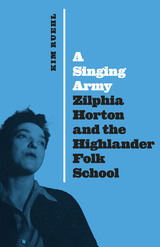 A Singing Army: Zilphia Horton and the Highlander Folk School
By Kim Ruehl
University of Texas Press, 2021 Zilphia Horton was a pioneer of cultural organizing, an activist and musician who taught people how to use the arts as a tool for social change, and a catalyst for anthems of empowerment such as “We Shall Overcome” and “We Shall Not Be Moved.” Her contributions to the Highlander Folk School, a pivotal center of the labor and civil rights movements in the mid-twentieth century, and her work creating the songbook of the labor movement influenced countless figures, from Woody Guthrie to Eleanor Roosevelt to Rosa Parks. Despite her outsized impact, Horton’s story is little known. A Singing Army introduces this overlooked figure to the world. Drawing on extensive archival and oral history research, as well as numerous interviews with Horton's family and friends, Kim Ruehl chronicles her life from her childhood in Arkansas coal country, through her formative travels and friendship with radical Presbyterian minister Claude C. Williams, and into her instrumental work in desegregation and fostering the music of the civil rights era. Revealing these experiences—as well as her unconventional marriage and controversial death by poisoning—A Singing Army tells the story of an all-but-forgotten woman who inspired thousands of working-class people to stand up and sing for freedom and equality.
 Singing for Our Lives: Stories from the Street Choirs
Campaign Choirs Writing Collective
Intellect Books, 2018 The Campaign Choirs Network is a loose affiliation of like-minded choirs across the UK sharing a belief in a better world for all and dedicated to taking action by singing about it; the Campaign Choirs Writing Collective is a part of that network.
The book intends to inspire the reader to engage with this world: to find out more, to join a choir in their community, to enlist their local street choir to support campaigns for social change and, more generally, to mobilize artistic creativity in progressive social movements.
It is an introduction to street choirs and their history, exploring origins in and connections with other social movements, for example the Workers Education Association, the Clarion movement, Big Flame and the Social Forum movement. The book identifies the political nodes where choir histories intersect, notably Greenham Common, the Miners’ Strike, anti-apartheid and Palestinian struggles. The title of the book is taken from a song by the respected American musician and activist Holly Near, and is popular in the repertoire of many street choirs. Exploring the role of street choirs in political culture, Singing For Our Lives introduces this neglected world to a wider public, including activists and academics.
Signing for Our Lives also elaborates the personal stories and experiences of people who participate in street choirs, and the unique social practices created within them. The book tells the important, if often overlooked, story of how making music can contribute to non-violent, just and sustainable social transitions.
www.singing4ourlives.net/about.html
SINGING FOR SURVIVAL: "SONGS OF THE LODZ GHETTO, 1940-45"
Gila Flam
University of Illinois Press, 1992 Gila Flam offers a penetrating insider's look at a musical culture previously unexplored---the song repertoire created and performed in the Lodz ghetto of Poland. Drawing on interviews with survivors and on library and archival materials, the author illustrates the general themes of the Lodz repertoire and explores the nature of Holocaust song. Most of the songs are presented here for the first time.
"An extremely accurate and valuable work. There is nothing like it in either the extensive holocaust literature or the ethnomusicology literature."
-- Mark Slobin, author of Chosen Voices: The Story of the American Cantorate
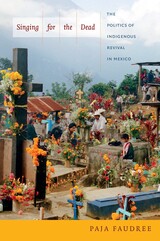 Singing for the Dead: The Politics of Indigenous Revival in Mexico
Paja Faudree
Duke University Press, 2013 Singing for the Dead chronicles ethnic revival in Oaxaca, Mexico, where new forms of singing and writing in the local Mazatec indigenous language are producing powerful, transformative political effects. Paja Faudree argues for the inclusion of singing as a necessary component in the polarized debates about indigenous orality and literacy, and she considers how the coupling of literacy and song has allowed people from the region to create texts of enduring social resonance. She examines how local young people are learning to read and write in Mazatec as a result of the region's new Day of the Dead song contest. Faudree also studies how tourist interest in local psychedelic mushrooms has led to their commodification, producing both opportunities and challenges for songwriters and others who represent Mazatec culture. She situates these revival movements within the contexts of Mexico and Latin America, as well as the broad, hemisphere-wide movement to create indigenous literatures. Singing for the Dead provides a new way to think about the politics of ethnicity, the success of social movements, and the limits of national belonging.
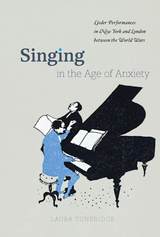 Singing in the Age of Anxiety: Lieder Performances in New York and London between the World Wars
Laura Tunbridge
University of Chicago Press, 2018 In New York and London during World War I, the performance of lieder—German art songs—was roundly prohibited, representing as they did the music and language of the enemy. But as German musicians returned to the transatlantic circuit in the 1920s, so too did the songs of Franz Schubert, Hugo Wolf, and Richard Strauss. Lieder were encountered in a variety of venues and media—at luxury hotels and on ocean liners, in vaudeville productions and at Carnegie Hall, and on gramophone recordings, radio broadcasts, and films.
Laura Tunbridge explores the renewed vitality of this refugee musical form between the world wars, offering a fresh perspective on a period that was pervaded by anxieties of displacement. Through richly varied case studies, Singing in the Age of Anxiety traces how lieder were circulated, presented, and consumed in metropolitan contexts, shedding new light on how music facilitated unlikely crossings of nationalist and internationalist ideologies during the interwar period.
 Singing in the Wilderness: Music and Ecology in the Twentieth Century
Wilfrid Mellers
University of Illinois Press, 2001 Displaying the broad erudition and intellectual agility that have informed a lifetime of scholarship, Wilfrid Mellers offers a set of diverse reflections on how western art music illuminates the shifting relationship between humankind and the natural world.
Beginning with two turn-of-the-century operas--Frederick Delius's A Village Romeo and Juliet and Claude Debussy's Pelléas et Mélisande -- that present humankind as lost in a tangled wood that is at once internal and external, Mellers develops the theme of wilderness in sociological, psychological, ecological, and even geological terms. He discusses Leoš Janá ek's Cunning Little Vixen ("the ultimate ecological opera") as a parable of redemption and explores the delicate yet dangerous equilibrium between civilization and the dark forest in works by Charles Koechlin and Darius Milhaud. Elements of wilderness and the city combine to infuse the music of Heitor Villa-Lobos and Carlos Chávez with a blend of primitivism and sophistication, while a creative tension between desert landscape and industrial mechanization inspires the works of Carl Ruggles, Harry Partch, Steve Reich, and Australia's Peter Sculthorpe. The volume culminates in a discussion of two American urban folk musicians, Duke Ellington and George Gershwin.
By suggesting how the "musicking" of ecological issues articulates twinned perspectives on music and our place in the world, Mellers raises intriguing questions about the links among tradition, talent, learning, and instinct. Brimming over with fresh ideas and unexpected cross-pollinations, Singing in the Wilderness is a stimulating addition to the oeuvre of a distinguished and inventive scholar.
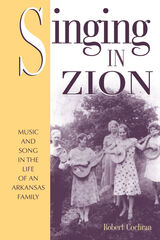 Singing in Zion: Music and Song in the Life of One Arkansas Family
Robert Cochran
University of Arkansas Press, 1999 This book is a lyrical, scholarly exploration of the connection between one family's musical traditions and its rural community of Zion, Arkansas. In 1959, three Gilbert sisters—Alma, Helen, and Phydella—began compiling songs they remembered as their own and sending them to one another in letters. Their tendency to center memory in sound rather than sight reveals an unusual musical birthright. Robert Cochran has constructed a composite portrait of this family for whom music is the center of life. He examines their lived experience as they anchor their history through song, singing, and the playing of musical instruments. The Gilberts are wonderful exemplars of the "mediation of oral tradition," and when approached through their music, they reveal themselves as remarkable individuals with an elaborate and firmly held sense of their unique identities. A decade in the making, Singing in Zion is written with a memoirist's sense of family history and an ethnographer's sense of the rich encounter of worlds. This narrative has a seductive simplicity that conveys much of the Gilbert family's charm while at the same time establishing a broader framework that is firmly academic. It will be enjoyed by all readers.
 The Singing Irish: A History of the Notre Dame Glee Club
Michael Alan Anderson
University of Notre Dame Press, 2015 In The Singing Irish, Michael Alan Anderson brings to life the rich history and traditions of the Notre Dame Glee Club. Replete with nearly three hundred images, the stunning large-format book examines the early history of the ensemble before 1915, its robust membership, rehearsal and concert customs, and the contributions of its conductors through the decades. Anderson interviewed dozens of Glee Club alumni going back to the early 1940s to narrate the vibrant story of the group, while assembling a wealth of documents that detail the activities undertaken—and impressions made—by this extraordinary musical ensemble. The group’s famous appearances on the Ed Sullivan Show in the early 1950s marked the height of the Glee Club’s visibility; however, the ensemble continues to sell out concerts on national and international tours, having traveled to nearly every state in the United States and numerous countries in Europe, Asia, and Central America. Through its eclectic repertoire and polished singing, the Glee Club has achieved a lofty status among collegiate choral ensembles in the United States, beloved by students, members of the Notre Dame family, and friends and supporters of the university around the world. Combining the meaningful culture of Notre Dame with the highest standards of artistic excellence, The Singing Irish makes a wonderful keepsake for fans and alumni of the Notre Dame Glee Club as it enters its centennial year.
"We, the alumni of Our Lady's University, have been blessed by being able to listen to and enjoy the beautiful voices coming from the Notre Dame Glee Club. This book is a 'must read' for all Notre Dame alums and friends of the university. You will feel the spirit of The Singing Irish because it reflects the soul of the Notre Dame Glee Club throughout the group's first one hundred years. Michael Alan Anderson has captured the essence of what makes this group so memorable for its members and for its audiences around the world. Let the music flow as you turn the pages." —Charles "Chuck" Lennon ('61, '62MA, DL H'11)
“Glee Club alumnus Michael Alan Anderson has bravely and lovingly taken on the job of recording the history of this special group in The Singing Irish. In the first place, it is thoroughly researched and scrupulously verified from archives, articles, letters, yearbooks, newsletters, and reports. But more than that, its real goal has been to uncover the spirit underlying the facts of the story. The Notre Dame Glee Club is not just a trained and well-practiced group of university level students working in the field of music. It is a fellowship, a fraternity, of more or less ordinary young men who have been guided and shepherded as much as academically taught, accompanied on their way to maturity.” —Dorothy A. Pedtke, daughter of longtime Glee Club director Daniel H. Pedtke
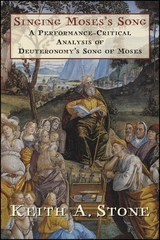 Singing Moses’s Song: A Performance-Critical Analysis of Deuteronomy’s Song of Moses
Keith A. Stone
Harvard University Press How does performing affect those who perform? Starting from observation of the intergenerational tradition of performing the Song of Moses (Deuteronomy 32.1–43), Keith Stone explores ways in which the Song contributes to Deuteronomy’s educational program through the dynamics of reenactment that operate in traditions of performance.
Performers of the Song are transformed as they reenact not only characters within the Song but also those who came before them in the history of the Song’s performance—particularly YHWH and Moses, whom Deuteronomy depicts as that tradition’s founders. In support of this thesis, Stone provides a close reading of the text of the Song as preserved in Deuteronomy and as informed by the account of its origins and subsequent history. He examines how the persona of the performer interacts with these reenacted personas in the moment of performance. He also argues that the various composers of Deuteronomy themselves participated in the tradition of performing the Song, citing examples throughout the book in which certain elements originally found in the Song have been adopted, elaborated, acted out, or simply mimicked.
 Singing Mother Home: A Psychologist's Journey through Anticipatory Grief
Donna S. Davenport
University of North Texas Press, 2002 What happens when an expert on grief is faced with the slow decline of her beloved mother? Like A Grief Observed by C. S. Lewis, Singing Mother Home offers the reader an inside look at the struggles of someone who is an “expert” in coping with loss. Donna S. Davenport was forced to rethink the traditional academic approach to the process, which implied that the goal of grief resolution was to end the attachment to the loved one. Instead, she embarked on a personal exploration of her own anticipatory grief.
This intimate narrative forms the core of her book. It is emotionally wrenching, but it also provides hope for those going through similar experiences. Just as Davenport used her family's tradition of singing to comfort her mother, readers will be encouraged to find their own sources of comfort in family and legacy. The book concludes with two chapters describing psychological approaches to grief and recommending further reading.
The Singing Mountaineers: Songs and Tales of the Quechua People
Collected by José María Arguedas
University of Texas Press, 1957 The Quechua people, the "singing mountaineers" of Peru, still sing the songs that their Inca ancestors knew before the Spaniards invaded the Andes. Some of these songs, collected and translated into Spanish by José María Arguedas and María Lourdes Valladares from the Quechua language and the Huanca dialect, are now presented for the first time in English in the beautiful translations of Ruth Stephan, author of the recent prize-winning novel, The Flight. Also included in this rich collection are nine folk tales collected by Father Jorge A. Lira, translated into Spanish by Sr. Arguedas, and into English by Kate and Angel Flores.
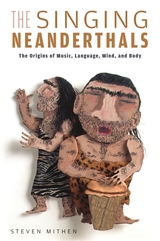 The Singing Neanderthals: The Origins of Music, Language, Mind, and Body
Steven Mithen
Harvard University Press, 2006 The propensity to make music is the most mysterious, wonderful, and neglected feature of humankind: this is where Steven Mithen began, drawing together strands from archaeology, anthropology, psychology, neuroscience--and, of course, musicology--to explain why we are so compelled to make and hear music. But music could not be explained without addressing language, and could not be accounted for without understanding the evolution of the human body and mind. Thus Mithen arrived at the wildly ambitious project that unfolds in this book: an exploration of music as a fundamental aspect of the human condition, encoded into the human genome during the evolutionary history of our species.
Music is the language of emotion, common wisdom tells us. In The Singing Neanderthals, Mithen introduces us to the science that might support such popular notions. With equal parts scientific rigor and charm, he marshals current evidence about social organization, tool and weapon technologies, hunting and scavenging strategies, habits and brain capacity of all our hominid ancestors, from australopithecines to Homo erectus, Homo heidelbergensis and Neanderthals to Homo sapiens--and comes up with a scenario for a shared musical and linguistic heritage. Along the way he weaves a tapestry of cognitive and expressive worlds--alive with vocalized sound, communal mimicry, sexual display, and rhythmic movement--of various species.
The result is a fascinating work--and a succinct riposte to those, like Steven Pinker, who have dismissed music as a functionless evolutionary byproduct.
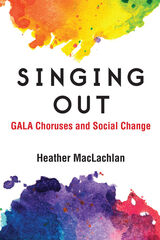 Singing Out: GALA Choruses and Social Change
Heather MacLachlan
University of Michigan Press, 2020 Can you change the world through song? This appealing idea has long been the professed aim of singers who are part of choruses affiliated with the Gay and Lesbian Association of Choruses (GALA). Theses choruses first emerged in the 1970s, and grew out of a very American tradition of (often gender-segregated) choral singing that explicitly presents itself as a community-based activity. By taking a close look at these choruses and their mission, Heather MacLachlan unpacks the fascinating historical and cultural dynamics behind groups that seek to change society for the better by encouraging acceptance of LGBT-identified people and promoting diversity more generally. She characterizes their mission as “integrationist rather than liberationist” and zeroes in on the inherent tension between GALA’s progressive social goals and the fact that the music most often performed by GALA groups is deeply rooted in a fairly narrowly conceived tradition of art music that identifies as white, Euro-centric, and middle class--and that much of the membership identifies as white and middle class as well. Pundits often wax eloquent about the power of music, asserting that it can, in some positive way, change the world. Such statements often rest on an unexamined claim that music can and does foster social justice. Singing Out: GALA Choruses and Social Change tackles the premise underlying such claims, analyzing groups of amateur singers who are explicitly committed to an agenda of social justice.
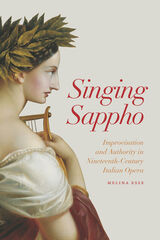 Singing Sappho: Improvisation and Authority in Nineteenth-Century Italian Opera
Melina Esse
University of Chicago Press, 2021 From the theatrical stage to the literary salon, the figure of Sappho—the ancient poet and inspiring icon of feminine creativity—played a major role in the intertwining histories of improvisation, text, and performance throughout the nineteenth century. Exploring the connections between operatic and poetic improvisation in Italy and beyond, Singing Sappho combines earwitness accounts of famous female improviser-virtuosi with erudite analysis of musical and literary practices. Melina Esse demonstrates that performance played a much larger role in conceptions of musical authorship than previously recognized, arguing that discourses of spontaneity—specifically those surrounding the improvvisatrice, or female poetic improviser—were paradoxically used to carve out a new authority for opera composers just as improvisation itself was falling into decline. With this novel and nuanced book, Esse persuasively reclaims the agency of performers and their crucial role in constituting Italian opera as a genre in the nineteenth century.
Singing Simpkin and Other Bawdy Jigs: Musical Comedy on the Shakespearean Stage: Scripts, Music and Context
Roger Clegg and Lucie Skeaping
University of Exeter Press, 2014 A popular crowd pleaser from the late sixteenth to the mid-seventeenth century, the dramatic jig was a short, comic, bawdy musical-drama that included elements of dance, slapstick, and disguise. For the first time in four hundred years, the lyrics and music notation for nine jigs from this period are presented, as well as an appendix for dance instruction. With Singing Simpkin and Other Bawdy Jigs,the authors provide a comprehensive account of a genre that was highly popular in its day, and demonstrates the influence of jigs on other forms of theater in Shakespearean England.
 Singing Stone
Thomas L Fleischner
University of Utah Press, 1999 Integrating personal narrative and natural history, Fleischner presents what he calls a "guide to understanding" the relatively unknown landscape of the Grand Staircase-Escalante National Monument. Like a bright blue seam incised deep in solid rock, the Escalante River binds the fir forests of Utah’s High Plateau with the barren deserts of the canyonlands region in the newly designed Grand Staircase-Escalante National Monument. To this wild landscape, naturalist Thomas Fleischner brings both emotional engagement and a wealth of knowledge. With unabashed passion and patient and learned observations Fleischner presents this relatively unknown landscape. Singing Stone is ideal for curious visitors to the national monument as well as students of environmental studies. Fleischner’s background as a conservation biologist and former park ranger, a professor of environmental studies, and a naturalist in the Escalante Region for almost twenty years has provided him with a deep reservoir of experience and knowledge. The book’s first three chapters survey the unique geology, flora and fauna, and human history of the region. Chapters four and five trace the more recent impacts of human activities—grazing and wilderness recreation—and explore the shifts in cultural values and public policy that have occurred as a result. Examining these topics in the context of a specific landscape offers a lens through which these changes, now the topic of examination and controversy throughout the New West, can be clearly seen and, hopefully, re-evaluated.
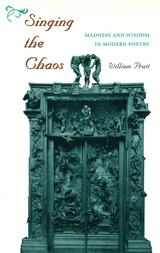 Singing the Chaos: Madness and Wisdom in Modern Poetry
William Pratt
University of Missouri Press, 1996
Singing the Chaos: Madness and Wisdom in Modern Poetry combines both a historical and a critical approach toward the works of major British, American, French, German, and Russian poets. Comprehensive in scope and arranged chronologically to survey a century of high poetic achievement, the study is unified by Pratt's overriding argument that "modern poets have endowed a disintegrating civilization with humane wisdom by 'singing the chaos' that surrounds them, making ours a great age in spite of itself."
In developing this central theme, Pratt brings alive the energy, the freshness, and the originality of technique that made Baudelaire, Pound, Yeats, Rilke, Eliot, and others the initiators of the revolution in poetry. He brings a more complete, clearer perspective to other major themes: modernism as an age of irony; poets as both madmen and geniuses; the modern poet as tragic hero; the dominance of religious or visionary truths over social or political issues; and the combination of radical experiments in poetic form with an apocalyptic view of Western civilization. His detailed treatment of the Fugitive poets and his recognition of their prominent role in twentieth-century literature constitute an important historical revision.
Brilliantly informed, insightful, and, above all, accurately sympathetic to the points of view of the poets Pratt presents, Singing the Chaos is that rare book that belongs on all shelves devoted to modernist poetry.
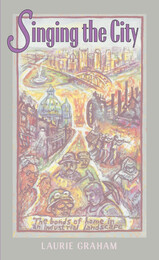 Singing The City: The Bonds Of Home In An Industrial Landscape
Laurie Graham
University of Pittsburgh Press, 2002
Singing the City is an eloquent tribute to a way of life largely disappearing in America, using Pittsburgh as a lens. Graham is not blind to the damage industry has done—both to people and to the environment, but she shows us that there is also a rich human story that has gone largely untold, one that reveals, in all its ambiguities, the place of the industrial landscape in the heart.
Singing the City is a celebration of a landscape that through most of its history has been unabashedly industrial. Convinced that industrial landscapes are too little understood and appreciated, Graham set out to investigate the city’s landscape, past and present, and to learn the lessons she sensed were there about living a good life. The result, told in both her voice and the distinctive voices of the people she meets, is a powerful contribution to the literature of place.
Graham begins by showing the city as an outgrowth of its geography and its geology—the factors that led to its becoming an industrial place. She describes the human investment in the area: the floods of immigrants who came to work in the mills in the late nineteenth and early twentieth centuries, their struggles within the domains of Andrew Carnegie and Henry Clay Frick. She evokes the superhuman aura of making steel by taking the reader to still functioning mills and uncovers for us a richness of tradition in ethnic neighborhoods that survives to this day.
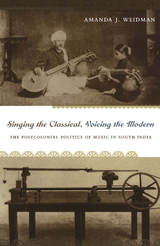 Singing the Classical, Voicing the Modern: The Postcolonial Politics of Music in South India
Amanda J. Weidman
Duke University Press, 2006 While Karnatic music, a form of Indian music based on the melodic principle of raga and time cycles called tala, is known today as South India’s classical music, its status as “classical” is an early-twentieth-century construct, one that emerged in the crucible of colonial modernity, nationalist ideology, and South Indian regional politics. As Amanda J. Weidman demonstrates, in order for Karnatic music to be considered classical music, it needed to be modeled on Western classical music, with its system of notation, composers, compositions, conservatories, and concerts. At the same time, it needed to remain distinctively Indian. Weidman argues that these contradictory imperatives led to the emergence of a particular “politics of voice,” in which the voice came to stand for authenticity and Indianness. Combining ethnographic observation derived from her experience as a student and performer of South Indian music with close readings of archival materials, Weidman traces the emergence of this politics of voice through compelling analyses of the relationship between vocal sound and instrumental imitation, conventions of performance and staging, the status of women as performers, debates about language and music, and the relationship between oral tradition and technologies of printing and sound reproduction. Through her sustained exploration of the way “voice” is elaborated as a trope of modern subjectivity, national identity, and cultural authenticity, Weidman provides a model for thinking about the voice in anthropological and historical terms. In so doing, she shows that modernity is characterized as much by particular ideas about orality, aurality, and the voice as it is by regimes of visuality.
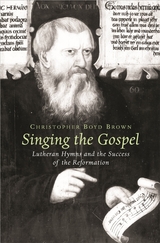 Singing the Gospel: Lutheran Hymns and the Success of the Reformation
Christopher Boyd Brown
Harvard University Press, 2005 Singing the Gospel offers a new appraisal of the Reformation and its popular appeal, based on the place of German hymns in the sixteenth-century press and in the lives of early Lutherans. The Bohemian mining town of Joachimsthal--where pastors, musicians, and laity forged an enduring and influential union of Lutheranism, music, and culture--is at the center of the story.
The Lutheran hymns, sung in the streets and homes as well as in the churches and schools of Joachimsthal, were central instruments of a Lutheran pedagogy that sought to convey the Gospel to lay men and women in a form that they could remember and apply for themselves. Townspeople and miners sang the hymns at home, as they taught their children, counseled one another, and consoled themselves when death came near.
Shaped and nourished by the theology of the hymns, the laity of Joachimsthal maintained this Lutheran piety in their homes for a generation after Evangelical pastors had been expelled, finally choosing emigration over submission to the Counter-Reformation. Singing the Gospel challenges the prevailing view that Lutheranism failed to transform the homes and hearts of sixteenth-century Germany.
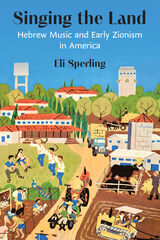 Singing the Land: Hebrew Music and Early Zionism in America
Eli Sperling
University of Michigan Press, 2024 Singing the Land: Hebrew Music and Early Zionism in America examines the proliferation and use of popular Hebrew Zionist music amongst American Jewry during the first half of the twentieth century. This music—one part in a greater process of instilling diasporic Zionism in American Jewish communities—represents an early and underexplored means of fostering mainstream American Jewish engagement with the Jewish state and Hebrew national culture as they emerged after Israel declared its independence in 1948. This evolutionary process brought Zionism from being an often-polemical notion in American Judaism at the turn of the twentieth century to a mainstream component of American Jewish life by 1948. Hebrew music ultimately emerged as an important means through which many American Jews physically participated in or ‘performed’ aspects of Zionism and Hebrew national culture from afar.
Exploring the history, events, contexts, and tensions that comprised what may be termed the ‘Zionization’ of American Jewry during the first half of the twentieth century, Eli Sperling analyzes primary sources within the historical contexts of Zionist national development and American Jewish life. Singing the Land offers insights into how and why musical frameworks were central to catalyzing American Jewry’s support of the Zionist cause by the 1940s, parallel to firm commitments to their American locale and national identities. The proliferation of this widespread American Jewish-Zionist embrace was achieved through a variety of educational, religious, economic, and political efforts, and Hebrew music was a thread consistent among them all.
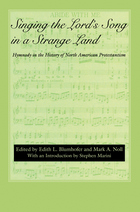 Singing the Lord's Song in a Strange Land: Hymnody in the History of North American Protestantism
Edith L. Blumhofer
University of Alabama Press, 2008 The latest scholarship on the role of hymns in American evangelicalism
Music and song are important parts of worship, and hymns have long played a central role in Protestant cultural history. This book explores the ways in which Protestants have used and continue to use hymns to clarify their identity and define their relationship with America and to Christianity. Representing seven groups—Baptists, Presbyterians, Lutherans, Mennonites, Holiness, Hispanics, and Evangelicals—the nine essays reveal how hymns have helped immigrants to establish new identities, contributed to the body of worship resources, and sustained ethnic identity.
Individual essays address the music of the Old-Fashioned Revival Hour, America’s longest running and most successful independent radio program; singing among Swedish evangelicals in America; the German hymn tradition as transformed by Mennonite immigrants; the ways hymnody reinforces themes of the Wesleyan holiness movement; the history of Mercer’s Cluster (1810), a southern hymnal that gave voice to slaves, women, and native Americans; and the Presbyterian hymnal tradition in Canada formed by Scottish immigrants.
Singing the Self: Guitar Poetry, Community, and Identity in the Post-Stalin Period
Rachel S. Platonov
Northwestern University Press, 2012 This book is a study of a Soviet cultural phenomenon of the 1950s through the 1980s known as guitar poetry—songs accompanied by guitar and considered poetry in much the same way as those of, for example, Bob Dylan. Platonov’s is the most comprehensive book in English to date to analyze guitar poetry, which has rarely received scholarly attention outside of Russia. Going well beyond the conventional, text-centered view of guitar poetry as a form of political or artistic dissent, largely a function of the Cold War climate in which it began, Platonov argues for a more complex understanding of guitar poetry as a means of self-invention and community formation. Although grounded in literary studies, the book effectively brings historical, anthropological, and musicological perspectives to bear on an understudied phenomenon of the post-Stalin period.
Singing Under Snow
Anne Haven McDonnell
Michigan State University Press, 2026 These are poems of queer ecology—poetry that “exults in the grit and texture of the natural world, in the unassuming and overlooked wonders beneath our feet and beyond our doors—in lichen and snow, in martens and mushrooms.” In reckoning with a mother’s aging, a breakup, or grief and disorientation in the face of the climate crisis, these poems seek a spiritual meaning in ecological belonging. Central to the collection is a series of poems exploring science, ceremony, and personal encounters with fungi. Fungi and lichen blur what we consider biological, what we think of as an individual, and how we understand death, and these poems reflect this complexity through imagery, juxtaposition, leaps of imagination, and sonic spells.
 The Single Life: Unpatriarchal Manhoods in English Renaissance Literature
Jordan Windholz
University of Alabama Press, 2025 Exploring the Varied Roles of Bachelors during the Renaissance What if the Renaissance bachelor wasn’t just a social outlier but a literary lens through which early modern masculinity reveals its cracks? In The Single Life: Unpatriarchal Manhoods in English Renaissance Literature, Jordan Windholz examines the overlooked and often subversive roles played by never-married men in shaping gender, sexuality, and social order. Windholz challenges conventional views on gender and sexuality, identifying five archetypes of bachelorhood that complicate our understanding of patriarchal success: the chaste youth, the journeyman bachelor, the true gallant, the incel scholar, and the unmarried eunuch. These figures don’t conform to ideals of marriage, legacy, or economic productivity, but they also weren’t merely left behind. Instead, they served to define what early modern society valued by embodying what it resisted. Windholz shows how Renaissance texts constructed, contained, and occasionally celebrated these “unpatriarchal manhoods.” By examining the intersections of sexuality, labor, gentility, emotion, and gender, the book provides a nuanced understanding of how single men both upheld and resisted patriarchal norms. Each chapter offers a detailed analysis of literary texts, blending historical and literary analysis with feminist and queer theory. The first study of its kind, Windholz’s work is essential reading for anyone interested in Renaissance literature, gender studies, or those looking to understand the margins of masculinity and the meanings of singledom—then and now.
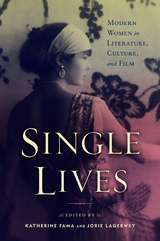 Single Lives: Modern Women in Literature, Culture, and Film
Katherine Fama
Rutgers University Press, 2022 Single Lives is a collection of singleness studies essays from the interdisciplinary humanities that explores the last two hundred years of literature and popular media by, about, and for single women in the US and the UK. Independent women have always been a center around which social anxieties and excitement coalesced. Moving between the family home and domestic independence, between household and public labor, and between celibacy and a range of sexual relations, the single woman remains a literary and cultural focus, as she has been from the 19th to the 21st centuries. This collection offers readers the opportunity to uncover the social, political, economic, and cultural connections between the "singly blessed" women and "bachelor girls" of the 19th and early 20th century and "all the single ladies" of the 21st century. Essays read singleness across genre and field, offering new approaches to studying modern and contemporary single women in literature, film, and history. Authors engage scholarship from wide ranging fields of social history, women's studies, queer theory, and Black feminism. The collection reads familiar texts against the grain, rethinking archival resources, revisiting familiar figures, and exploring new sources: cookbooks, ephemera, personal documents, recovered film histories, and forms of domestic space and labor.This is a book for scholars of gender and sexuality, social history, feminist film and media scholars, and literary historians, and reflects the urgent contemporary interest in single women as a political, economic, and cultural force.
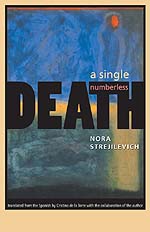 A Single, Numberless Death
Nora Strejilevich
University of Virginia Press, 2002 Nora Strejilevich was a young woman when her brother and other family members and friends disappeared at the hands of the military junta that held power in Argentina from 1976 to 1983. Ostensibly part of a systematic campaign to eliminate left-wing terrorism, the violence perpetrated by the junta far exceeded anything the leftists ever dreamed of, enveloping not only the violent left but other dissidents and innocent civilians as well, and particularly targeting the Jewish population. A desaparecida herself, Strejilevich survived kidnapping and torture to speak of her experience with a dignified voice and a clear-eyed realism that extends from one end of the political spectrum to the other.
In the first English translation of her elegant fictional memoir Una sola muerte numerosa, Strejilevich combines autobiography, documentary journalism, fiction, magical realism, and poetry to express the "choir of voices" of the more than 30,000 souls who were imprisoned and abused. She engages the reader in the history of a bloody military coup and state-sanctioned anti-Semitism, exploring themes of exile, identity, and violence. Above all, A Single, Numberless Death is Nora Strejilevich's gripping story of survival.
"Shifting from present to a past of horror in the late seventies, and an even remoter past of fond family memories, Nora Strejilevich mixes quotes from [General Jorge Rafael] Videla and [Admiral Emilio] Massera with CONADEP records and poetic fragments to convey a full picture of [Argentina's infamous Dirty War]. . . . Truly praiseworthy."
--Buenos Aires Herald
"A hymn to the resistance and the spiritual power of human beings, this text is also a heartrending and effective condemnation of injustice."
--Andrés Avellaneda, University of Florida
Nora Strejilevich is Assistant Professor of Spanish and Portuguese at San Diego State University.
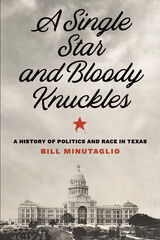 A Single Star and Bloody Knuckles: A History of Politics and Race in Texas
By Bill Minutaglio
University of Texas Press, 2021 Finalist, 2021 Writers’ League of Texas Book Award For John Nance “Cactus Jack” Garner, there was one simple rule in politics: “You’ve got to bloody your knuckles.” It’s a maxim that applies in so many ways to the state of Texas, where the struggle for power has often unfolded through underhanded politicking, backroom dealings, and, quite literally, bloodshed. The contentious history of Texas politics has been shaped by dangerous and often violent events, and been formed not just in the halls of power but by marginalized voices omitted from the official narratives. A Single Star and Bloody Knuckles traces the state’s conflicted and dramatic evolution over the past 150 years through its pivotal political players, including oft-neglected women and people of color. Beginning in 1870 with the birth of Texas’s modern political framework, Bill Minutaglio chronicles Texas political life against the backdrop of industry, the economy, and race relations, recasting the narrative of influential Texans. With journalistic verve and candor, Minutaglio delivers a contemporary history of the determined men and women who fought for their particular visions of Texas and helped define the state as a potent force in national affairs.
 Singular Examples: Artistic Politics and the Neo-Avant-Garde
Tyrus Miller
Northwestern University Press, 2008 This book focuses on the integral, interdisciplinary, and intermedial "compositions"—verbal, visual, musical, theatrical, and cinematic—of the avant-gardes in the period following World War II. It also considers the artistic politics of these postwar avant-gardes and their works. The book’s geographical span is primarily the United States, although in its more extended reach, it comprehends an international context of American postwar cultural hegemony throughout what was once referred to as "the free world." The works and the artists Miller takes up are those of the so-called "neo–avant-garde" with its inherent contradiction: an avant-garde whose newness is defined by its seeming reiteration of an earlier historical formation. Concentrating on the rhetorical, contextual, and performative characteristic of neo–avant-garde practice, including its relation to politics, Miller emphasizes the centrality of the example in this practice. John Cage, Jackson Mac Low, Gilbert Sorrentino, David Tudor, Stan Brakhage, and Samuel Beckett are among the artists whose exemplary works feature in Singular Examples. Miller’s key readings of these major artists of the period open up some of the most difficult texts of the neo–avant-garde even as they contribute to an eloquent argument for "artistic politics." Underlining the relation between material particulars and their thematic implications, between particular works and larger theoretical claims, between avant-garde aesthetics and formalist analysis, Singular Examples is exemplary in its own right, revealing the ultimate shape and direction of a postwar avant-garde contending with the historical predicaments of radical modernism.
A Singular Man
Emmanuel Bove
Northwestern University Press, 1995 In a state of permanent tension and relieved moral paralysis, Jean-Marie Thély, an anguished bystander confined to the margins of polite society, has based the whole of his existence upon the idea that he is unlike others. He derives his singularity from his origins as an illegitimate child; bounced from one condescendingly charitable household to another only to be rejected by the bourgeois families that raised him. Restricted to an ordinary education, barred from an officer's career, he is unable to do what he wants and eventually becomes trapped in a life of utter indecision.
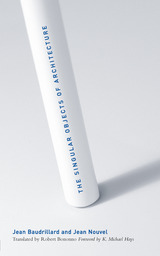 The Singular Objects of Architecture
Jean Baudrillard
University of Minnesota Press, 2005 What is a singular object? An idea, a building, a color, a sentiment, a human being. Each in turn comes under scrutiny in this exhilarating dialogue between two of the most interesting thinkers working in philosophy and architecture today. From such singular objects, Jean Baudrillard and Jean Nouvel move on to fundamental problems of politics, identity, and aesthetics as their exchange becomes an imaginative exploration of the possibilities of modern architecture and the future of modern life.
Among the topics the two speakers take up are the city of tomorrow and the ideal of transparency, the gentrification of New York City and Frank Gehry’s surprising Guggenheim Museum in Bilbao. As Nouvel prompts Baudrillard to reflect on some of his signature concepts (the virtual, transparency, fatal strategies, oblivion, and seduction, among others), the confrontation between such philosophical concerns and the specificity of architecture gives rise to novel and striking formulations—and a new way of establishing and understanding the connections between the practitioner and the philosopher, the object and the idea.
This wide-ranging conversation builds a bridge between the fields of architecture and philosophy. At the same time it offers readers an intimate view of the meeting of objects and ideas in which the imagined, constructed, and inhabited environment is endlessly changing, forever evolving.
Jean Baudrillard is one of the most influential thinkers of his generation and author of The Vital Illusion (2001).
Jean Nouvel has designed buildings throughout the world, including the new Guthrie Theater in Minneapolis, and is a recipient of France’s Grand Prix d’Architecture.
Robert Bononno, a translator and teacher, lives in New York City.
Singular Perturbation Methodology in Control Systems
D.S. Naidu
The Institution of Engineering and Technology, 1988 Many realistic engineering systems are large in dimension and stiff for computation. Their analysis and control require extensive numerical algorithms. The methodology of singular perturbations and time scales (SPTS), crowned with the remedial features of order reduction and stiffness relief is a powerful technique to achieve computational simplicity.
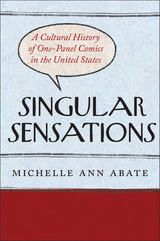 Singular Sensations: A Cultural History of One-Panel Comics in the United States
Michelle Ann Abate
Rutgers University Press, 2024 Shortlisted for the 2024 Eisner Award for Best Academic/Scholarly Book What do The Family Circus, Ziggy, and The Far Side have in common? They are all single-panel comics, a seemingly simple form that cartoonists have used in vastly different ways.
Singular Sensations is the first book-length critical study to examine this important but long-neglected mode of cartoon art. Michelle Ann Abate provides an overview of how the American single-panel comic evolved, starting with Thomas Nast’s political cartoons and R.F. Outcault’s groundbreaking Yellow Kid series in the nineteenth century. In subsequent chapters, she explores everything from wry New Yorker cartoons to zany twenty-first-century comics like Bizarro. Offering an important corrective to the canonical definition of comics as “sequential art,” Abate reveals the complexity, artistry, and influence of the single-panel art form.
Engaging with a wide range of historical time periods, sociopolitical subjects, and aesthetic styles, Singular Sensations demonstrates how comics as we know and love them would not be the same without single-panel titles. Abate’s book brings the single-panel comic out of the margins and into the foreground.
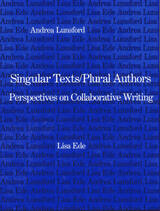 Singular Texts/Plural Authors: Perspectives on Collaborative Writing
Lisa Ede and Andrea Lunsford
Southern Illinois University Press, 1992 "Why write together?" the authors ask. They answer that question here, in the first book to combine theoretical and historical explorations with actual research on collaborative and group writing.
Lisa Ede and Andrea Lunsford challenge the assumption that writing is a solitary act. That challenge is grounded in their own personal experience as long-term collaborators and in their extensive research, including a three-stage study of collaborative writing supported by the Fund for the Improvement of Post-Secondary Education.
The authors urge a fundamental change in our institutions to accommodate collaboration by radically resituating power in the classroom and by instituting rewards for collaborative work that equal rewards for single-authored work. They conclude with the injunction: "Today and in the twenty-first century, our data suggest, writers must be able to work together. They must, in short, be able to collaborate."
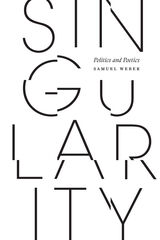 Singularity: Politics and Poetics
Samuel Weber
University of Minnesota Press, 2021 An influential thinker on the concept of singularity and its implications on politics, theology, economics, psychoanalysis, and literature
For readers versed in critical theory, German and comparative literature, or media studies, a new book by Samuel Weber is essential reading. Singularity is no exception. Bringing together two decades of his essays, it hones in on the surprising implications of the singular and its historical relation to the individual in politics, theology, economics, psychoanalysis, and literature. Although singularity has long been a keyword in literary studies and philosophy, never has it been explored as in this book, which distinguishes singularity as an “aporetic” notion from individuality, with which it remains historically closely tied. To speak or write of the singular is problematic, Weber argues, since once it is spoken of it is no longer strictly singular. Walter Benjamin observed that singularity and repetition imply each other. This approach informs the essays in Singularity. Weber notes that what distinguishes the singular from the individual is that it cannot be perceived directly, but rather experienced through feelings that depend on but also exceed cognition. This interdependence of cognition and affect plays itself out in politics, economics, and theology as well as in poetics. Political practice as well as its theory have been dominated by the attempt to domesticate singularity by subordinating it to the notion of individuality. Weber suggests that this political tendency draws support from what he calls “the monotheological identity paradigm” deriving from the idea of a unique and exclusive Creator-God. Despite the “secular” tendencies usually associated with Western modernity, this paradigm continues today to inform and influence political and economic practices, often displaying self-destructive tendencies. By contrast, Weber reads the literary writings of Hölderlin, Nietzsche, and Kafka as exemplary practices that put singularity into play, not as fiction but as friction, exposing the self-evidence of established conventions to be responses to challenges and problems that they often prefer to obscure or ignore.
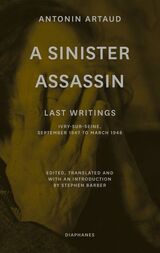 A Sinister Assassin: Last Writings, Ivry-Sur-Seine, September 1947 to March 1948
Antonin Artaud
Diaphanes, 2022 A Sinister Assassin contains original translations of Antonin Artaud’s last writings and interviews, most never previously available in English.
A Sinister Assassin presents translations of Antonin Artaud’s largely unknown final work of 1947–48, revealing new insights into his obsessions with human anatomy, sexuality, societal power, creativity, and ill-will—notably, preoccupations of the contemporary world.
Artaud’s last conception of performance is that of a dance-propelled act of autopsy, generating a ”body without organs” which negates malevolent microbial epidemics. This book assembles Artaud’s crucial writings and press interviews from September 1947 to March 1948, undertaken at a decrepit pavilion in the grounds of a convalescence clinic in Ivry-sur-Seine, on the southern edge of Paris, as well as in-transit through Paris’s streets. It also draws extensively on Artaud’s manuscripts and original interviews with his friends, collaborators, and doctors throughout the 1940s, illuminating the many manifestations of Artaud’s final writings: the contents of his last, death-interrupted notebook; his letters; his two final key texts; his glossolalia; the magazine issue which collected his last fragments; and the two extraordinary interviews he gave to national newspaper journalists in the final days of his life, in which he denounces and refuses both his work’s recent censorship and his imminent death.
Edited, translated, and with an introduction by Stephen Barber, A Sinister Assassin illuminates Artaud’s last, most intensive, and terminal work for the first time.
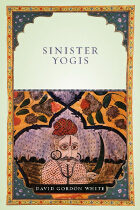 Sinister Yogis
David Gordon White
University of Chicago Press, 2009 Since the 1960s, yoga has become a billion-dollar industry in the West, attracting housewives and hipsters, New Agers and the old-aged. But our modern conception of yoga derives much from nineteenth-century European spirituality, and the true story of yoga’s origins in South Asia is far richer, stranger, and more entertaining than most of us realize. To uncover this history, David Gordon White focuses on yoga’s practitioners. Combing through millennia of South Asia’s vast and diverse literature, he discovers that yogis are usually portrayed as wonder-workers or sorcerers who use their dangerous supernatural abilities—which can include raising the dead, possession, and levitation—to acquire power, wealth, and sexual gratification. As White shows, even those yogis who aren’t downright villainous bear little resemblance to Western assumptions about them. At turns rollicking and sophisticated, Sinister Yogis tears down the image of yogis as detached, contemplative teachers, finally placing them in their proper context.
 Sinking Chicago: Climate Change and the Remaking of a Flood-Prone Environment
Harold L. Platt
Temple University Press, 2018 In Sinking Chicago, Harold Platt shows how people responded to climate change in one American city over a hundred-and-fifty-year period. During a long dry spell before 1945, city residents lost sight of the connections between land use, flood control, and water quality. Then, a combination of suburban sprawl and a wet period of extreme weather events created damaging runoff surges that sank Chicago and contaminated drinking supplies with raw sewage. Chicagoans had to learn how to remake a city built on a prairie wetland. They organized a grassroots movement to protect the six river watersheds in the semi-sacred forest preserves from being turned into open sewers, like the Chicago River. The politics of outdoor recreation clashed with the politics of water management. Platt charts a growing constituency of citizens who fought a corrupt political machine to reclaim the region’s waterways and Lake Michigan as a single eco-system. Environmentalists contested policymakers’ heroic, big-technology approaches with small-scale solutions for a flood-prone environment. Sinking Chicago lays out a roadmap to future planning outcomes.
The Sinking of the Lisbon Maru: Britain’s Forgotten Wartime Tragedy
Tony Banham
Hong Kong University Press, 2006 Although never previously studied in any depth, the sinking of the Lisbon Maru was the most costly American on British ‘Friendly Fire’ incident of the Second World War. Of the 4,500 of Hong Kong’s garrison who perished during the war, 1,000 died directly or indirectly from this sinking. From American, British, Hong Kong and Japanese sources, this book reconstructs the fateful voyage of the Lisbon Maru, and the experiences of the captives, the captors, and those on board the submarine that sank her. The book will be of interest to anyone wishing to know more about the ‘Hellships’ that caused the deaths of almost 20,000 Allied Prisoners of War during the Second World War, or the experiences of Allied POWs in Japan.
Sinking of the Princess Sophia: Taking the North Down with Her
Ken Coates and Bill Morrison
University of Alaska Press, 1991 On October 23, 1918, a storm rose and the Canadian Pacific steamer Princess Sophia ran aground on Vanderbilt Reef, northwest of Juneau, Alaska. Tragically, there were no survivors. The 353 aboard represented a significant cross-section of the population of the Yukon and Alaska, and their loss was a heavy blow to a society that, with the end of the gold rush, was already in decline. This book tells the dramatic stories of many of the passengers, how they had gone to the north, what they did there, and why they were leaving that fall, and sheds light on a little-known aspect of Alaska's history.
Sinking Suspicions
Sara Sue Hoklotubbe
University of Arizona Press, 2014 Suspicions run high when murder mixes with identity theft in the latest installment of the popular Sadie Walela mystery series set in Cherokee Country. No sooner does Sadie embark on an unexpected business trip to the beautiful island of Maui, when her long-time neighbor, Buck Skinner, a full-blood Cherokee and World War II veteran, goes missing and becomes the prime suspect in the murder of a petty identity thief.
Iconic lawman Lance Smith joins a community-wide search, but Buck is nowhere to be found. As evidence mounts against her old friend, Sadie rushes to return home to help—only to be delayed by an island-wide earthquake and her own sinking suspicions.
A diverse cast of characters weave together a breathless story of murder, thievery, and the toll of war on the human spirit. In her effort to restore balance to her neighbor’s life, Sadie not only uncovers the truth, but unravels much more than a murder.
Sinn Fein and the Politics of Left Republicanism
Eoin O'Broin
Pluto Press, 2009 Sinn Féin is a growing force in Irish politics. Now the country's third largest party, Sinn Féin have been one of the central architects of the peace process and are increasingly setting the terms of political debate in Ireland north and south. Despite this, the party remains much misunderstood and often misrepresented.
In Sinn Féin & The Politics of Left Republicanism, Sinn Féin activist Eoin Ó Broin explores the ideological and organisational origins of the party, charts their history and recent political development and assesses their possible futures.
He argues that Sinn Féin is part of a distinct left-republican tradition in Irish society whose future lies in the globally resurgent radical democratic left.
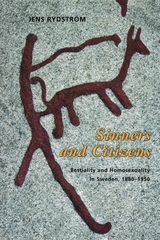 Sinners and Citizens: Bestiality and Homosexuality in Sweden, 1880-1950
Jens Rydström
University of Chicago Press, 2003 Sinners and Citizens explores how sexual habits changed in Sweden during its development from an agrarian society into a modern welfare state. Jens Rydström examines the history of homosexuality and bestiality in that country to consider why these sexual practices have been so closely linked in virtually all Western societies. He limns sharply the distinctive experience of rural life, showing that to regularly witness farm animals stirred passions and sparked ideas, especially among young farmhands.
Based on medical journals, psychiatric reports, and court records from the period, as well as testimonies from men in diaries, letters, and interviews, Sinners and Citizens reveals that bestiality was once a dreaded crime in Sweden. But in time, mention of the practice disappeared completely from legal and medical debates. This, Rydström contends, is because models of penetrative sodomy shifted from bestiality to homosexuality as Sweden transformed from a rural society into a more urban one. As the nation's economy and culture became less identified with the countryside, so too did its idea of deviant sexual behavior.
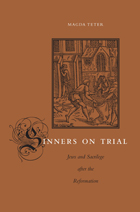 Sinners on Trial: Jews and Sacrilege after the Reformation
Magda Teter
Harvard University Press, 2011 In post-Reformation Poland—the largest state in Europe and home to the largest Jewish population in the world—the Catholic Church suffered profound anxiety about its power after the Protestant threat. Magda Teter reveals how criminal law became a key tool in the manipulation of the meaning of the sacred and in the effort to legitimize Church authority. The mishandling of sacred symbols was transformed from a sin that could be absolved into a crime that resulted in harsh sentences of mutilation, hanging, decapitation, and, principally, burning at the stake.
Teter casts new light on the most infamous type of sacrilege, the accusation against Jews for desecrating the eucharistic wafer. These sacrilege trials were part of a broader struggle over the meaning of the sacred and of sacred space at a time of religious and political uncertainty, with the eucharist at its center. But host desecration—defined in the law as sacrilege—went beyond anti-Jewish hatred to reflect Catholic-Protestant conflict, changing conditions of ecclesiastic authority and jurisdiction, and competition in the economic marketplace.
Recounting dramatic stories of torture, trial, and punishment, this is the first book to consider the sacrilege accusations of the early modern period within the broader context of politics and common crime. Teter draws on previously unexamined trial records to bring out the real-life relationships among Catholics, Jews, and Protestants and challenges the commonly held view that following the Reformation, Poland was a “state without stakes”—uniquely a country without religious persecution.
Sino-American Relations: A New Cold War
Xiaobing Li
Amsterdam University Press, 2023 Sino-American Relations brings together high-quality research articles in order to examine one aspect of the political mechanism of modern China, from empire to the PRC: political initiatives to root out corruption. Proceeding chronologically, the eleven chapters explore modern political history through a particular focus on the anti-corruption campaigns of early modern and modern China. Our interdisciplinary analysis draws on methodologies from several distinct fields, including political science, civil law, and mass media. Such an analysis reveals the unique characteristics of China’s urbanization, which have transformed not only the country, but also the CCP – from a rural-based totalitarian party to a city-centered authoritarian party, and from a party of the people to a party of powerful interest groups by 2002–2016.
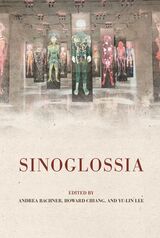 Sinoglossia
Edited by Andrea Bachner, Howard Chiang, and Yu-Lin Lee
Hong Kong University Press, 2023 An expansion of the field of Sinophone studies through the notion of sinoglossia.
Sinoglossia places embodiment, mediality, and translation at the center of this analytical inquiry into Chinese and Sinophone cultures. This book introduces a theory defined by cultural formations not overdetermined by Sinitic linguistic ties. The concept of sinoglossia combines a heteroglossic and heterotopian approach to the critical study of mediated discourses of China and “Chineseness.” From the history of physical examinations and queer subalternity to the cinematic inscription of “Chineseness-as-landscape,” and from Sinopop to the translational writings of Eileen Chang and Syaman Rapongan, this book argues for a flexible conceptualization of cultural objects, conditions, and contexts that draws attention to an array of polyphonic, multi-discursive, and multilingual articulations. In this new horizon of understanding, place or theme create a source of friction and innovation.
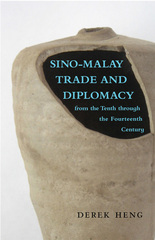 Sino–Malay Trade and Diplomacy from the Tenth through the Fourteenth Century
Derek Heng
Ohio University Press, 2009 China has been an important player in the international economy for two thousand years and has historically exerted enormous influence over the development and nature of political and economic affairs in the regions beyond its borders, especially its neighbors. Sino–Malay Trade and Diplomacy from the Tenth through the Fourteenth Century examines how changes in foreign policy and economic perspectives of the Chinese court affected diplomatic intercourse as well as the fundamental nature of economic interaction between China and the Malay region, a subregion of Southeast Asia centered on the Strait of Malacca. This study’s uniqueness and value lie in its integration of archaeological, epigraphic, and textual data from both China and Southeast Asia to provide a rich, multilayered picture of Sino–Southeast Asian relations in the premodern era. Derek Heng approaches the topic from both the Southeast Asian and Chinese perspectives, affording a dual narrative otherwise unavailable in the current body of Southeast Asian and China studies literature.
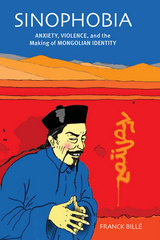 Sinophobia: Anxiety, Violence, and the Making of Mongolian Identity
Franck Billé
University of Hawaii Press, 2014 Sinophobia is a timely and groundbreaking study of the anti-Chinese sentiments currently widespread in Mongolia. Graffiti calling for the removal of Chinese dot the urban landscape, songs about killing the Chinese are played in public spaces, and rumors concerning Chinese plans to take over the country and exterminate the Mongols are rife. Such violent anti-Chinese feelings are frequently explained as a consequence of China’s meteoric economic development, a cause of much anxiety for her immediate neighbors and particularly for Mongolia, a large but sparsely populated country that is rich in mineral resources. Other analysts point to deeply entrenched antagonisms and to centuries of hostility between the two groups, implying unbridgeable cultural differences.
Franck Billé challenges these reductive explanations. Drawing on extended fieldwork, interviews, and a wide range of sources in Mongolian, Chinese, and Russian, he argues that anti-Chinese sentiments are not a new phenomenon but go back to the late socialist period (1960–1990) when Mongolia’s political and cultural life was deeply intertwined with Russia’s. Through an in-depth analysis of media discourses, Billé shows how stereotypes of the Chinese emerged through an internalization of Russian ideas of Asia, and how they can easily extend to other Asian groups such as Koreans or Vietnamese. He argues that the anti-Chinese attitudes of Mongols reflect an essential desire to distance themselves from Asia overall and to reject their own Asianness. The spectral presence of China, imagined to be everywhere and potentially in everyone, thus produces a pervasive climate of mistrust, suspicion, and paranoia.
Through its detailed ethnography and innovative approach, Sinophobia makes a critical intervention in racial and ethnic studies by foregrounding Sinophobic narratives and by integrating psychoanalytical insights into its analysis. In addition to making a useful contribution to the study of Mongolia, it will be essential reading for anthropologists, sociologists, and historians interested in ethnicity, nationalism, and xenophobia.
 Sino-Soviet Crisis Politics: A Study of Political Change and Communication
Richard Wich
Harvard University Press, 1980 Through an analysis of political perception and communication, this study explains the structural change in the international political landscape that followed the Soviet intervention in Czechoslovakia in 1968. It examines the shifts in China's global policies—from dual confrontation with the United States and the Soviet Union to an intensified challenge to the Soviets and rapprochement with the United States—and analyzes the complex signaling process through which that change was accomplished.
The examination throws light upon the dynamics of the Sino-Soviet conflict. The Sino-Soviet border crisis is interpreted within a broad context of international affairs, particularly perceptions of the meaning of Czechoslovakia and the implications of American withdrawal from Vietnam. The crisis is seen as symptomatic of underlying shifts in the international landscape, shifts that were also to become evident in the transformation of Sino-American relations, Sino-Japanese reconciliation, and the emergence of China's adversary relations with its former close allies Vietnam and Albania.
This study demonstrates the application of an analytical method—called “contextual analysis” by the author—for interpreting the political communications through which the parties involved signaled their perceptions and expectations. Close analysis of these communications enlarges understanding of how the signaling process both shaped and reflected the evolution of events during a critical period of change.
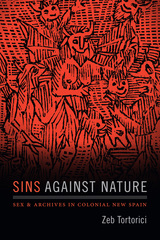 Sins against Nature: Sex and Archives in Colonial New Spain
Zeb Tortorici
Duke University Press, 2018 In Sins against Nature Zeb Tortorici explores the prosecution of sex acts in colonial New Spain (present-day Mexico, Guatemala, the US Southwest, and the Philippines) to examine the multiple ways bodies and desires come to be textually recorded and archived. Drawing on the records from over three hundred criminal and Inquisition cases between 1530 and 1821, Tortorici shows how the secular and ecclesiastical courts deployed the term contra natura—against nature—to try those accused of sodomy, bestiality, masturbation, erotic religious visions, priestly solicitation of sex during confession, and other forms of "unnatural" sex. Archival traces of the visceral reactions of witnesses, the accused, colonial authorities, notaries, translators, and others in these records demonstrate the primacy of affect and its importance to the Spanish documentation and regulation of these sins against nature. In foregrounding the logic that dictated which crimes were recorded and how they are mediated through the colonial archive, Tortorici recasts Iberian Atlantic history through the prism of the unnatural while showing how archives destabilize the bodies, desires, and social categories on which the history of sexuality is based.
The Sins of Childhood and Other Stories
Boleslav Prus
Northwestern University Press, 1996 This is the first English-language collection of stories by the nineteenth-century writer Boleslaw Prus, who has been called the greatest Polish novelist of all time. This new book, containing twelve of his classic short pieces, explores the depth of thought, human warmth, powers of observation, and technical excellence for which he has been justly praised.
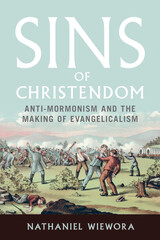 Sins of Christendom: Anti-Mormonism and the Making of Evangelicalism
Nathaniel Wiewora
University of Illinois Press, 2024 Evangelical criticism of the Church of Jesus Christ of Latter-day Saints dates back to the earliest days of the Church. Nathaniel Wiewora uses the diverse animus expressed by evangelicals to illuminate how they used an imaginary Church as a proxy to disagree, attack, compromise, and settle differences among themselves. As Wiewora shows, the evangelical practice to contrast itself with the emerging faith not only encompassed but also went beyond religious matters. If Joseph Smith was accused of muddling religious truth, he and his followers also faced accusations of immoral economic practices and a sinful regard for wealth that reflected worries within the evangelical world. Attacks on Latter-day Saints’ emotional religious displays, the Book of Mormon’s authenticity, and the dangerous ideas represented by Nauvoo paralleled similar conflicts. Wiewora traces how the failure to blunt the Church’s success led evangelicals to change their own methods and pursue the religious education infrastructure that came to define parts of the movement.
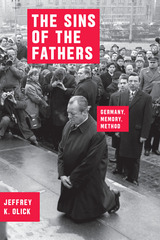 The Sins of the Fathers: Germany, Memory, Method
Jeffrey K. Olick
University of Chicago Press, 2016 National identity and political legitimacy always involve a delicate balance between remembering and forgetting. All nations have elements in their past that they would prefer to pass over—the catalog of failures, injustices, and horrors committed in the name of nations, if fully acknowledged, could create significant problems for a country trying to move on and take action in the present. Yet denial and forgetting carry costs as well.
Nowhere has this precarious balance been more potent, or important, than in the Federal Republic of Germany, where the devastation and atrocities of two world wars have weighed heavily in virtually every moment and aspect of political life. The Sins of the Fathers confronts that difficulty head-on, exploring the variety of ways that Germany’s leaders since 1949 have attempted to meet this challenge, with a particular focus on how those approaches have changed over time. Jeffrey K. Olick asserts that other nations are looking to Germany as an example of how a society can confront a dark past—casting Germany as our model of difficult collective memory.
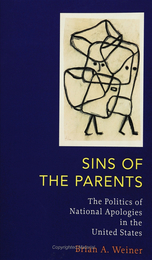 Sins Of The Parents: Politics Of National Apologies In The U.S.
Brian A. Weiner
Temple University Press, 2005 Debates have swirled around the question of national forgiveness for the past fifty years. Using two examples—the land claims of the Oneida Indians and the claims for reparations to Japanese Americans interned during World War II—Brian Weiner suggests a way of thinking about national misdeeds. Arguing beyond collective "innocence" or "guilt," Sins of the Parents offers a model of collective responsibility to deal with past wrongs in such a way as to reinvigorate our notion of citizenship. Drawing upon the writings of Abraham Lincoln and Hannah Arendt, Weiner offers a definition of political responsibility that at once defines citizenship and sidesteps the familial, racial, and ethnic questions that often ensnare debates about national apologies. An original contribution to political theory and practice, Sins of the Parents will become a much discussed contribution in the debate about what it is to be an American.
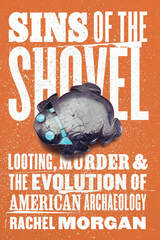 Sins of the Shovel: Looting, Murder, and the Evolution of American Archaeology
Rachel Morgan
University of Chicago Press, 2023 An incisive history of early American archaeology—from reckless looting to professional science—and the field’s unfinished efforts to make amends today, told "with passion, indignation, and a dash of suspense" (New York Times).
American archaeology was forever scarred by an 1893 business proposition between cowboy-turned-excavator Richard Wetherill and socialites-turned-antiquarians Fred and Talbot Hyde. Wetherill had stumbled upon Mesa Verde’s spectacular cliff dwellings and started selling artifacts, but with the Hydes’ money behind him, well—there’s no telling what they might discover. Thus begins the Hyde Exploring Expedition, a nine-year venture into Utah’s Grand Gulch and New Mexico’s Chaco Canyon that—coupled with other less-restrained looters—so devastates Indigenous cultural sites across the American Southwest that Congress passes first-of-their-kind regulations to stop the carnage. As the money dries up, tensions rise, and a once-profitable enterprise disintegrates, setting the stage for a tragic murder.
Sins of the Shovel is a story of adventure and business gone wrong and how archaeologists today grapple with this complex heritage. Through the story of the Hyde Exploring Expedition, practicing archaeologist Rachel Morgan uncovers the uncomfortable links between commodity culture, contemporary ethics, and the broader political forces that perpetuate destructive behavior today. The result is an unsparing and even-handed assessment of American archaeology’s sins, past and present, and how the field is working toward atonement.
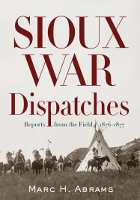 Sioux War Dispatches: Reports from the Field, 1876-1877
Marc H. Abrams
Westholme Publishing, 2012 Rare, First-Hand Accounts from Newspaper Correspondents Describing the Course of America’s Largest Indian War, Compiled and Edited for the First Time in One Volume “No one commands better the story of the Great Sioux War of 1876–1877 as presented in the nation’s newspapers than does Marc Abrams. Here is Abrams’s story of America’s greatest Indian war woven from those timely reports, augmented with insightful introductions and annotations. Abrams has produced a significant addition to the historiography of this endlessly fascinating struggle and its colorful personalities.” —Paul L. Hedren, author of After Custer: Loss and Transformation in Sioux Country “Marc Abrams has provided an invaluable service to both scholars and lay readers in compiling this treasure trove of primary information. Like the correspondents he has come to know through his research, Marc has done the hard work; we need only read in comfort and benefit from his efforts.” —Douglas W. Ellison, author of Sole Survivor: An Examination of the Frank Finkel Narrative “Marc Abrams’s book is an exciting and innovative approach that brings immediacy to the campaigns of Custer, Crook, and Miles, and teems with fascinating new detail. Sioux War Dispatches not only offers a gripping contemporary window into those times, it fills an important reference need as well.” —Jerome A. Greene, author of Stricken Field: The Little Bighorn Since 1876 Sioux War Dispatches: Reports from the Field, 1876-1877, tells the story of the Great Sioux War, including the battle of the Little Big Horn, primarily through the eyes of contemporary newspaper correspondents, both civilian and military. The volume begins with the Black Hills dilemma and the issue of the unceded territory (the disputed lands that were adjacent to the Great Sioux Reservation) and continues through to the spring of 1877 with the surrender of the legendary Sioux leader Crazy Horse. Along the way readers will learn about the Reynolds battle, the skirmish at Tongue River Heights, the battle of the Rosebud, the battle of the Little Big Horn, the skirmish at Warbonnet Creek, the fight at Slim Buttes, and more. In addition to numerous annotated excerpts from those who were there, are rare original dispatches, reprinted in full, that will take readers on a wild ride through several battles.
 Sir Aurel Stein: Archaeological Explorer
Jeannette Mirsky
University of Chicago Press, 1977 An extraordinary man, who advanced human knowledge on many fronts, Sir Aurel Stein (1862-1943) pursued dramatic adventure with scientific purpose. Jeannette Mirsky has drawn from Stein's voluminous outpouring of books and articles as well as from his letters and unpublished archival materials to produce a lively and definitive biography of this archaeological explorer, geographer, historical topographer, and linguist.
"[Mirsky] has digested the correspondence, and she quotes so skillfully that her book will save many people the trouble of reading Stein's own exhaustive and exhausting volumes. Definitive."—Larry McMurtry, Washington Post
"A first-rate and unique biography of one of the more significant explorers of Central Asia and the Indo-Iranian borderlands. . . . Mirsky has recreated not only the life of an intrepid explorer but the spirit of the times."—Choice
"Mirsky has performed a signal service in distilling the life, travels, and letters of Aurel Stein into a manageable, graceful, and meaningful synthesis."—Theodore A. Wertime, Technology and Culture
Sir Charles Wheatstone FRS, 1802-1875
Brian Bowers
The Institution of Engineering and Technology, 2001 Charles Wheatstone began his life-long involvement with electrical engineering in the days when it was still at the stage of 'philosophical toys', yet he had a vision of telecommunications that could deliver printed messages around the world. With W.E. Cooke he developed the first practical electric telegraph. The problems of operating telegraphs over long distances led him into the field of electrical measurements.
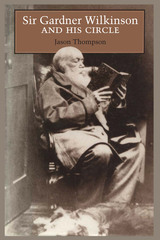 Sir Gardner Wilkinson and His Circle
By Jason Thompson
University of Texas Press, 1992 Following in the footsteps of Napoleon's army, Europeans invaded Egypt in the early nineteenth century to gaze in wonder at the massive, inscrutable remains of its ancient civilizations. One of these travelers was a twenty-four-year-old Englishman, John Gardner Wilkinson. His copious observations of ancient and modern Egyptian places, artifacts, and lifeways, recorded in such widely read publications as Manners and Customs of the Ancient Egyptians and Handbook for Travellers in Egypt, made him the leading early Victorian authority on ancient Egypt and paved the way for thc scientific study of Egyptology. In this first full-scale biography of Wilkinson (1797-1875), Jason Thompson skillfully portrays both the man and his era. He follows Wilkinson during his initial sojourn in Egypt (1821-1833) as Wilkinson immersed himself in a contemporary Egyptian lifestyle and in study of its ancient past. He shows Wilkinson in his circle of friends—among them Edward William Lane, Robert Hay and Frederick Catherwood. And he traces how Wilkinson continued to use his Egyptian material in the decades following his return to England. With the rise of professional Egyptology in the middle and later nineteenth century, Sir Gardner Wilkinson came to be viewed as an amateur and his popularity diminished. Drawing upon recently opened sources, Thompson returns Wilkinson to his rightful place within centuries of Egyptian scholarship and assesses both the vision and the limitations of his work. The result is a compelling portrait of a Victorian "gentleman-scholar" and his cultural milieu.
Sir Gawain and the Green Knight
R. A. Waldron
Northwestern University Press, 1972 This volume offers the complete text of a poem which, although an acknowledged masterpiece of medieval literature, makes abnormal demands upon the reader by reason of its subtle exploitation both of a difficult dialect of Middle English and of the special idiom of alliterative verse. There is no short cut through the difficulties, but this edition is designed to enable the modern reader to reach a sensitive first-hand understanding of the text as the only basis for valid literary judgement.
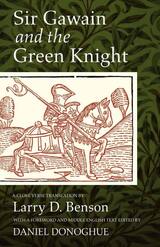 Sir Gawain and the Green Knight: A Close Verse Translation
Larry D. Benson
West Virginia University Press, 2012 Sir Gawain and the Green Knight is a late fourteenth-century Middle English alliterative romance outlining an adventure of Sir Gawain, a knight of King Arthur’s Round Table. In this poem, Sir Gawain accepts a challenge from a mysterious green warrior. In a struggle to uphold his oath along this quest, Gawain demonstrates chivalry, loyalty, and honor. This new verse translation of the most popular and enduring fourteenth century poem to survive to the present offers students an accessible way of approaching the literature of medieval England without losing the flavor of the original writing. The language of Sir Gawain presents considerable problems to present-day readers as it is written in the West Midlands dialect before English became standardized. With a foreword by David Donoghue, the close verse translation includes facing pages of the original fourteenth-century text and its modern translation. Medieval European Studies Series, Volume 13
 Sir Gawain and the Green Knight and the Order of the Garter
Francis Ingledew
University of Notre Dame Press, 2006
Francis Ingledew's book makes the case that Sir Gawain and the Green Knight, one of the canonical works of medieval English literature, should be recognized as a response to King Edward III's foundation in 1349 of the chivalric Order of the Garter. As well as providing the basis for a thorough reinterpretation of the poem's purposes and meanings, this argument dates to the mid-fourteenth-century reign of Edward III (1327–77) a poem conventionally ascribed to the reign of Richard II (1377–99).
Through close readings of the poem and of an array of overlooked historical sources, Ingledew presents Sir Gawain and the Green Knight as a critique of Edward III's sexual and military behavior. Ingledew's argument takes him deep into chivalric practice in Edward's court of the 1340s, much of it connected with the early years of war with France. Ingledew pursues the significance of sexual scandal associated with Edward, especially the rape of the Countess of Salisbury confidently imputed to him by the formidable Liégois historian Jean le Bel. At the same time that he was trying to conquer France and Scotland and preside over a court vulnerable to scandal, Edward also called on the history (as it was seen) of King Arthur and the Round Table, associating himself with Arthur's imperial and moral authority through the founding of the Order of the Garter. In its portrayal of the Order of the Garter, Ingledew argues, Sir Gawain and the Green Knight sets itself at odds with Edward's central ethical and political projects.
"Exhaustively researched and insightfully theorized, Ingledew's study proposes historical, cultural, and discursive contexts for Sir Gawain and the Green Knight more comprehensive, and more persuasive, than any hitherto attempted. It sets an exalted critical and scholarly standard against which to judge future interpretations of this complex and elegant poem." — Robert Hanning, Columbia University
Sir Gawain and the Green Knight: In a Modern English Version with a Critical Introduction
Translated, Edited, and with an Introduction by John Gardner
University of Chicago Press, 2011 The classic tale of adventure, romance, and chivalry, translated by a master of storytelling
The adventures and challenges of Sir Gawain, King Arthur’s nephew and a knight at the Round Table, including his duel with the mysterious Green Knight, are among the oldest and best known of Arthurian stories. Here the distinguished author and poet John Gardner has captured the humor, elegance, and richness of the original Middle English in flowing modern verse translations of this literary masterpiece. Besides the tale of Sir Gawain and the Green Knight, this edition includes two allegorical poems, “Purity” and “Patience”; the beautiful dream allegory “Pearl”; and the miracle story “Saint Erkenwald,” all attributed to the same anonymous poet, a contemporary of Chaucer and an artist of the first rank.
|
|
